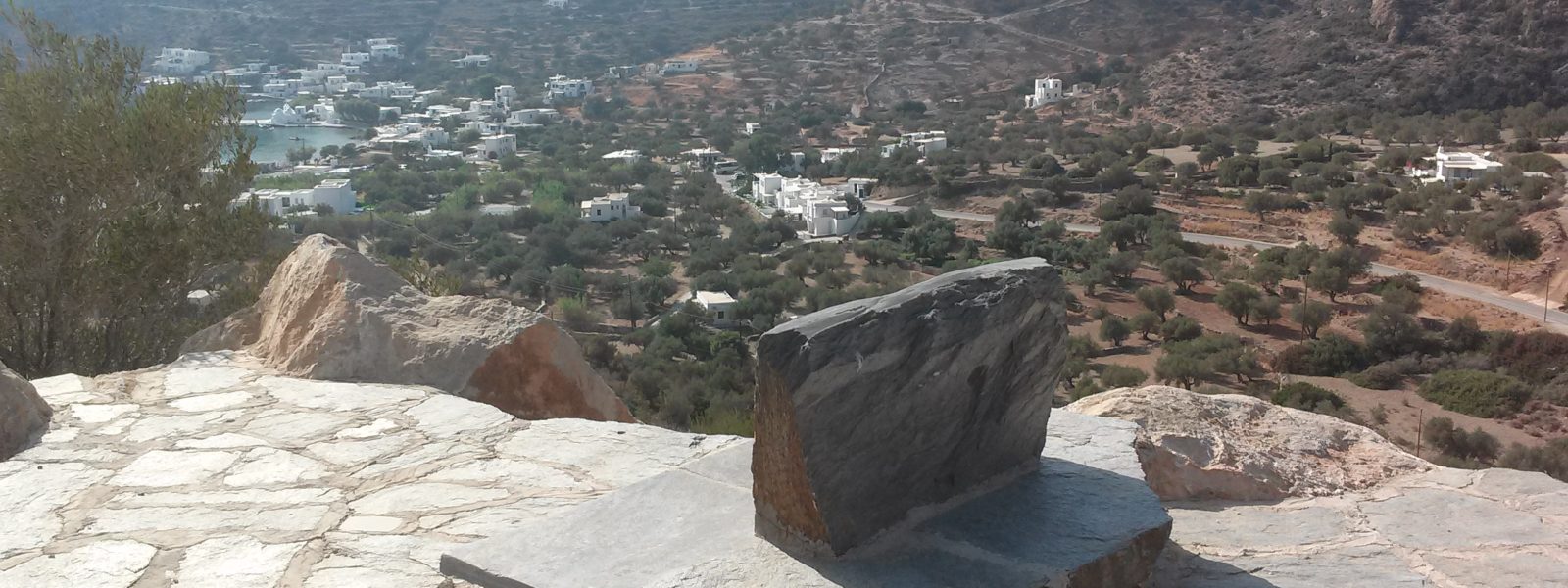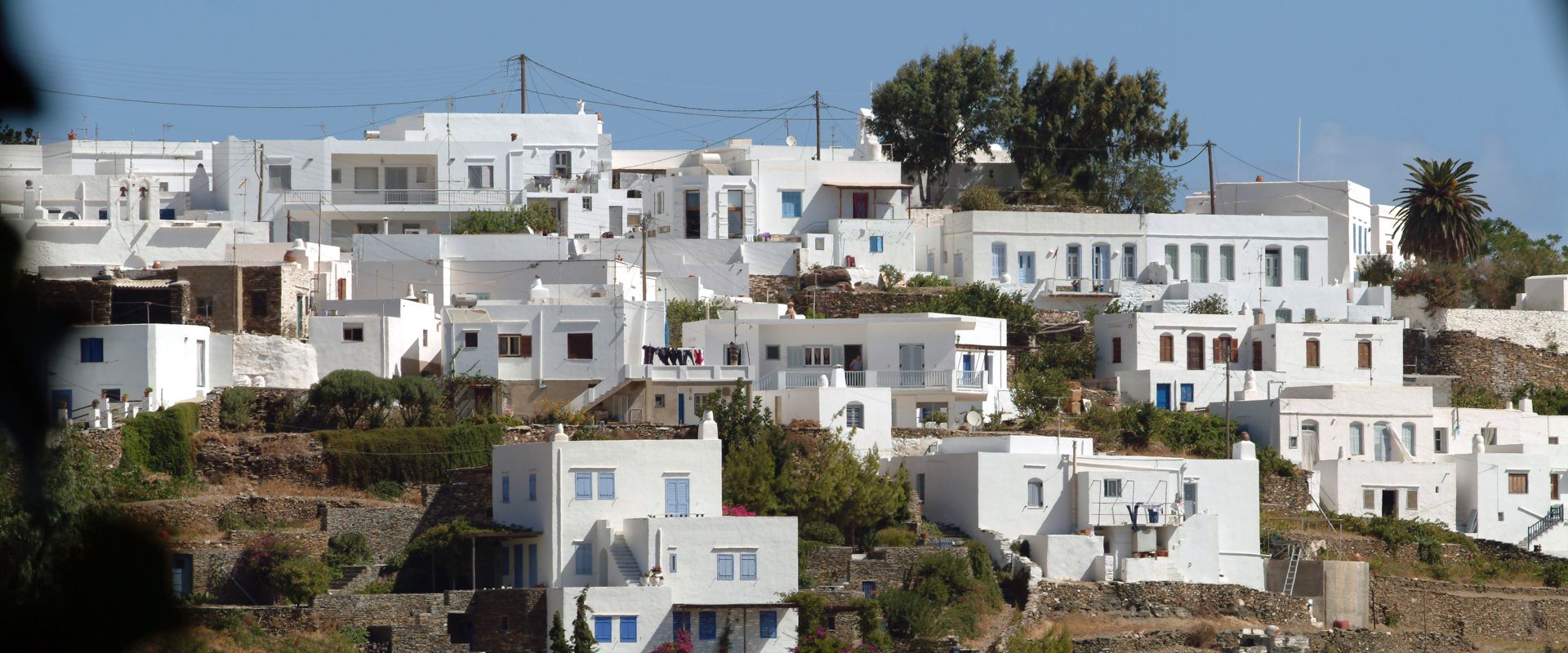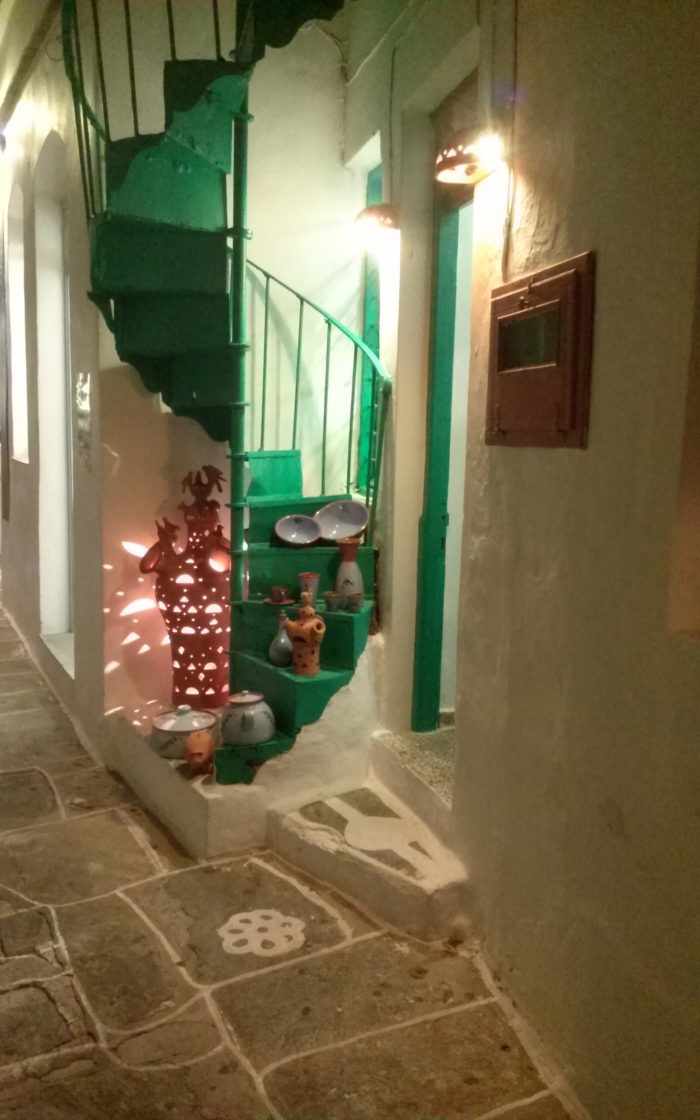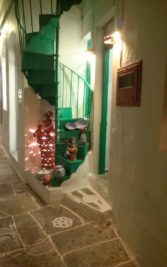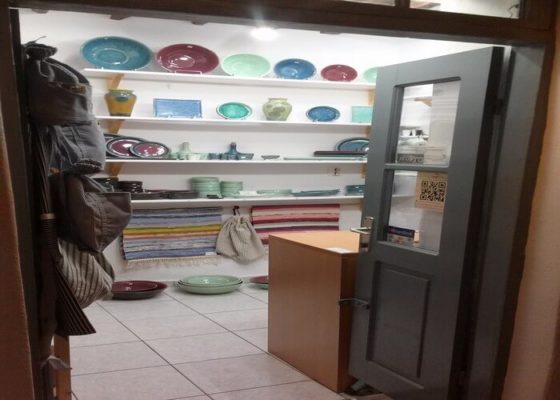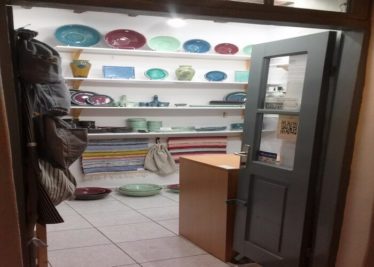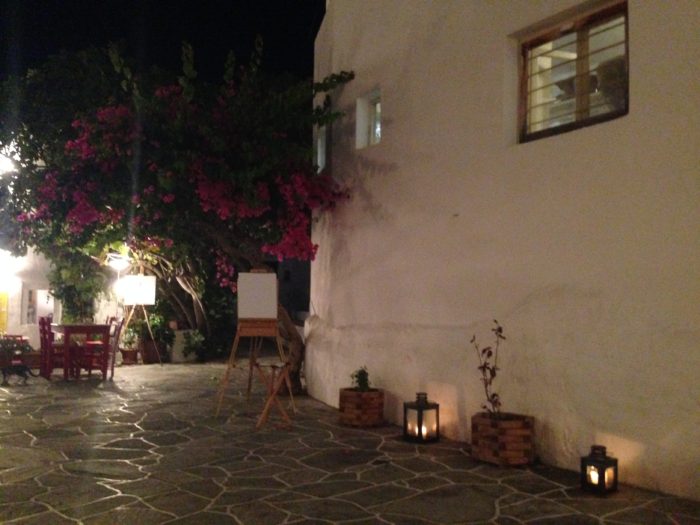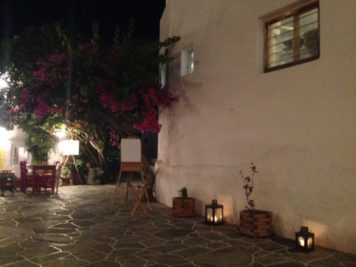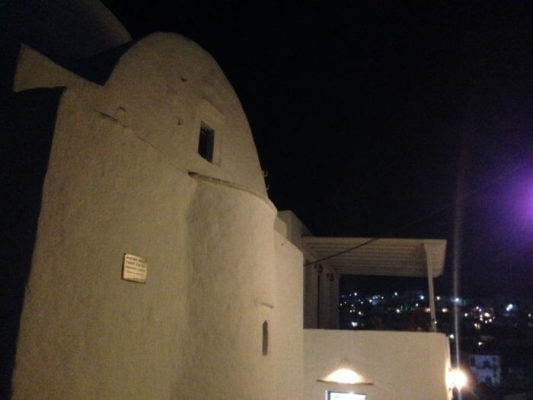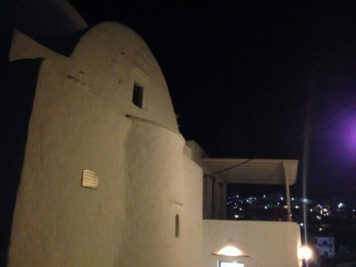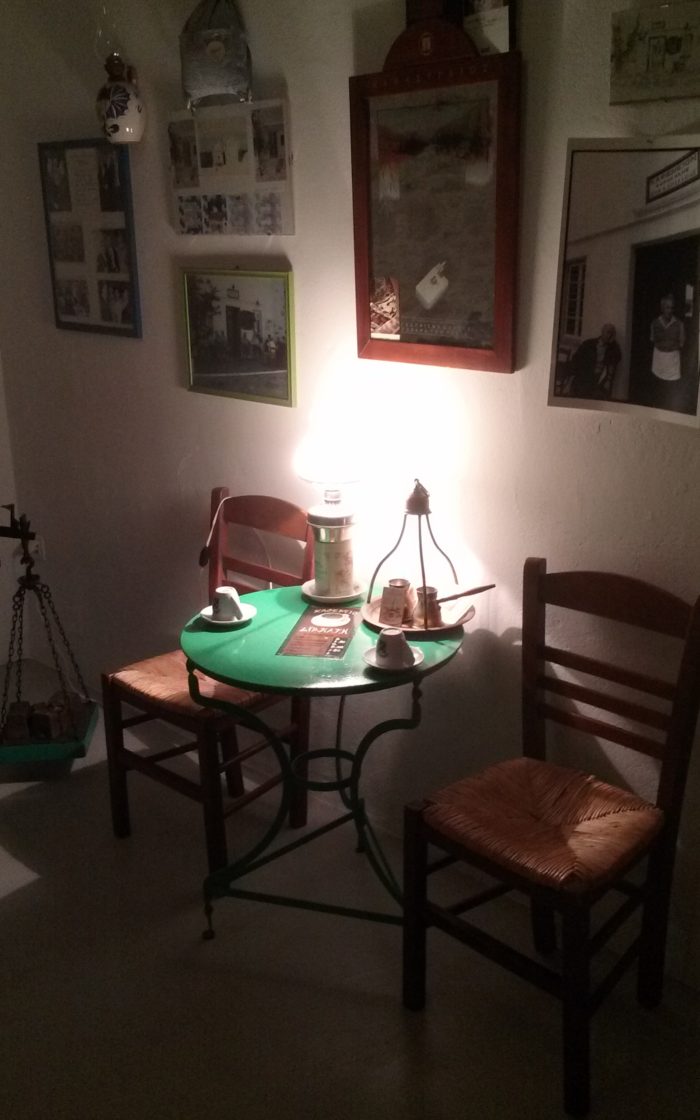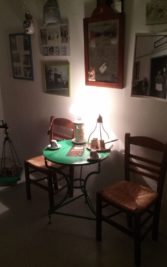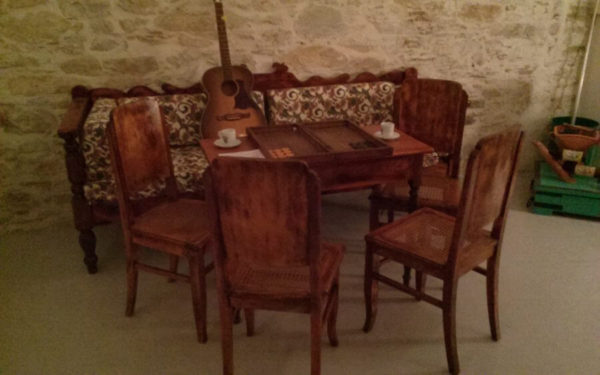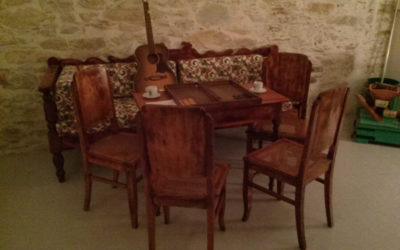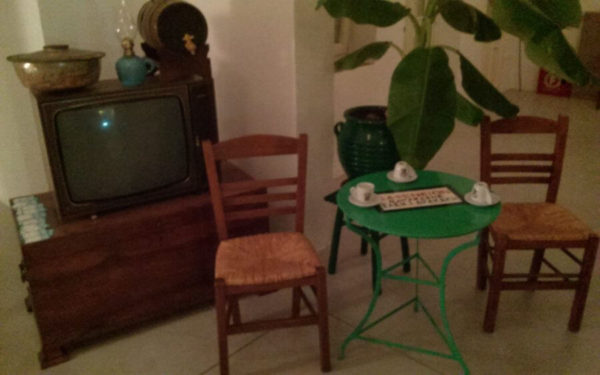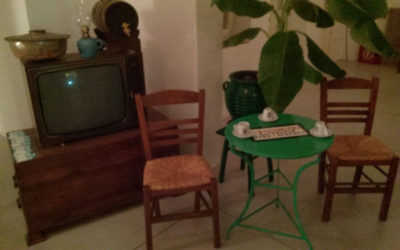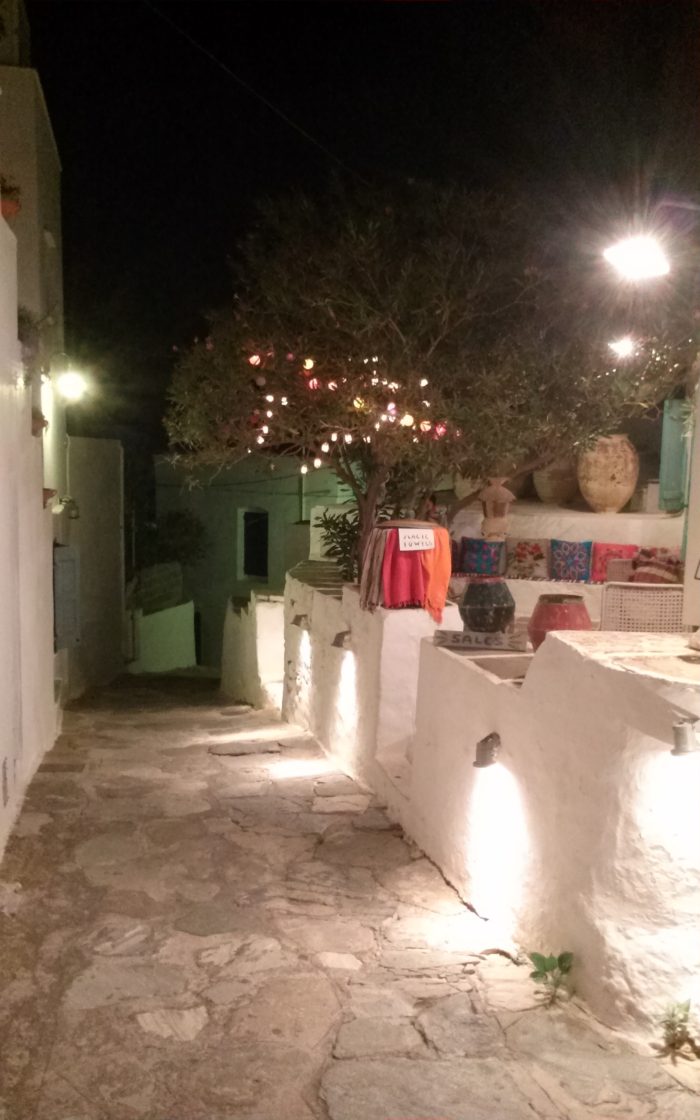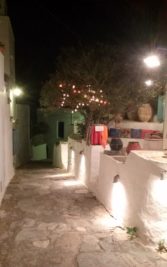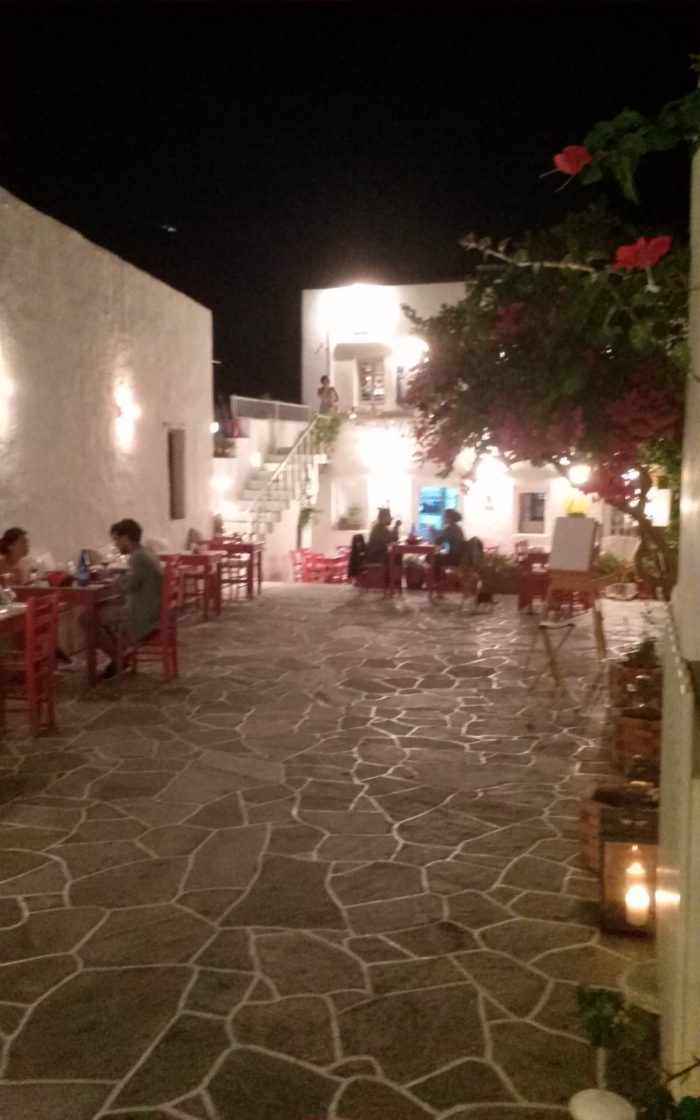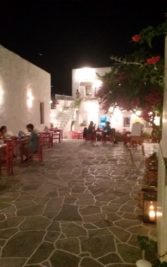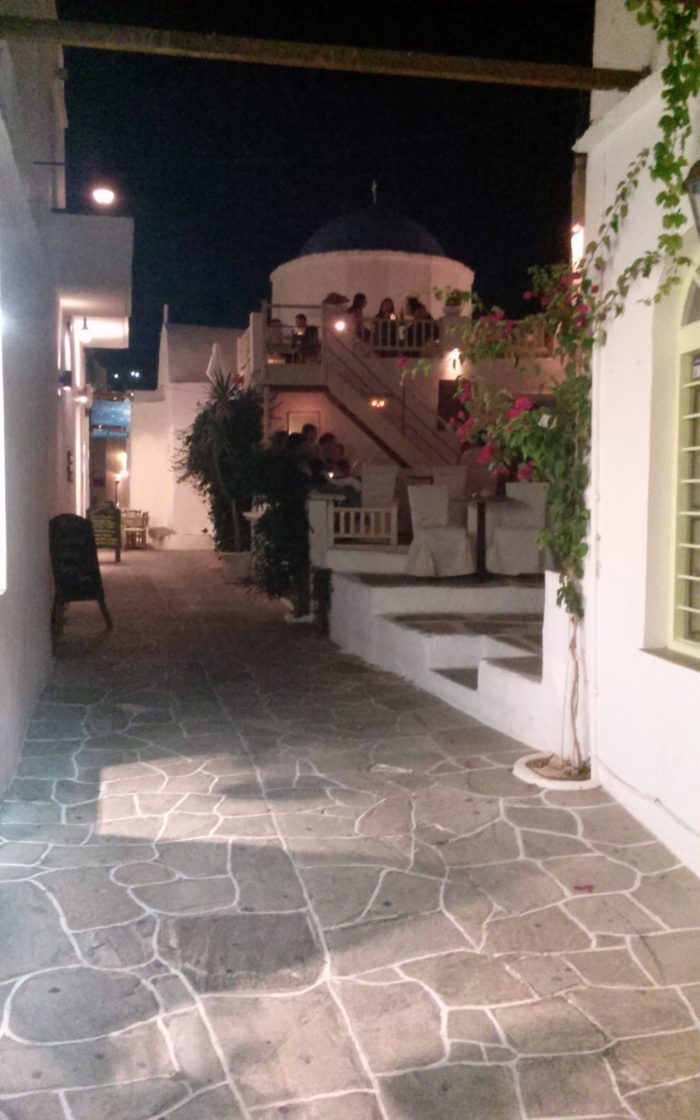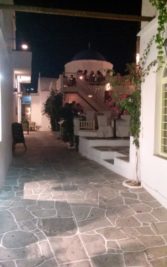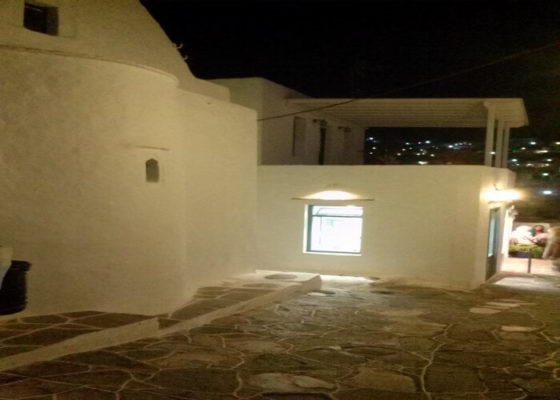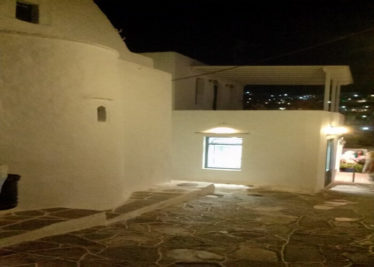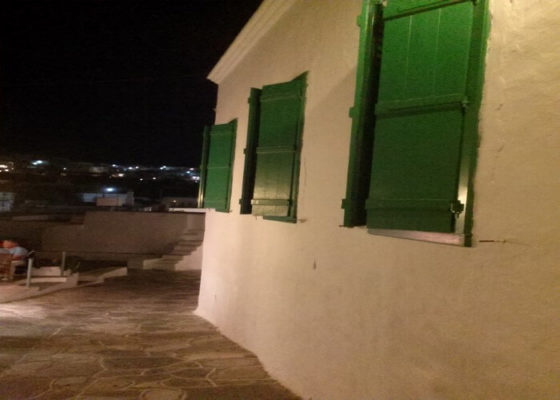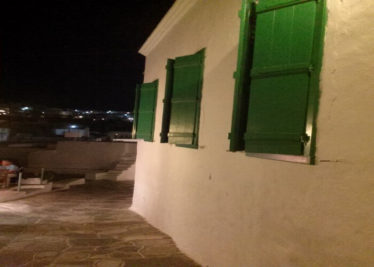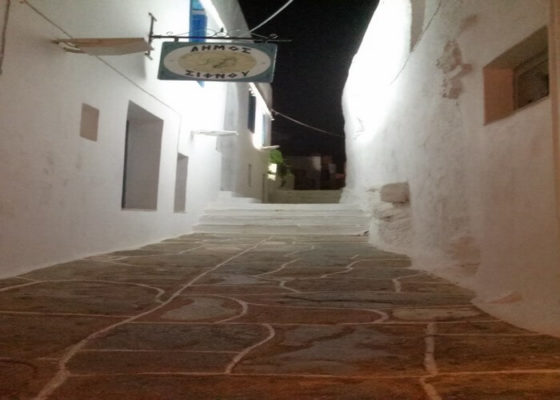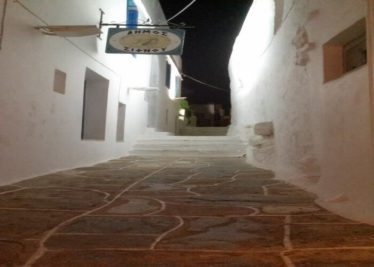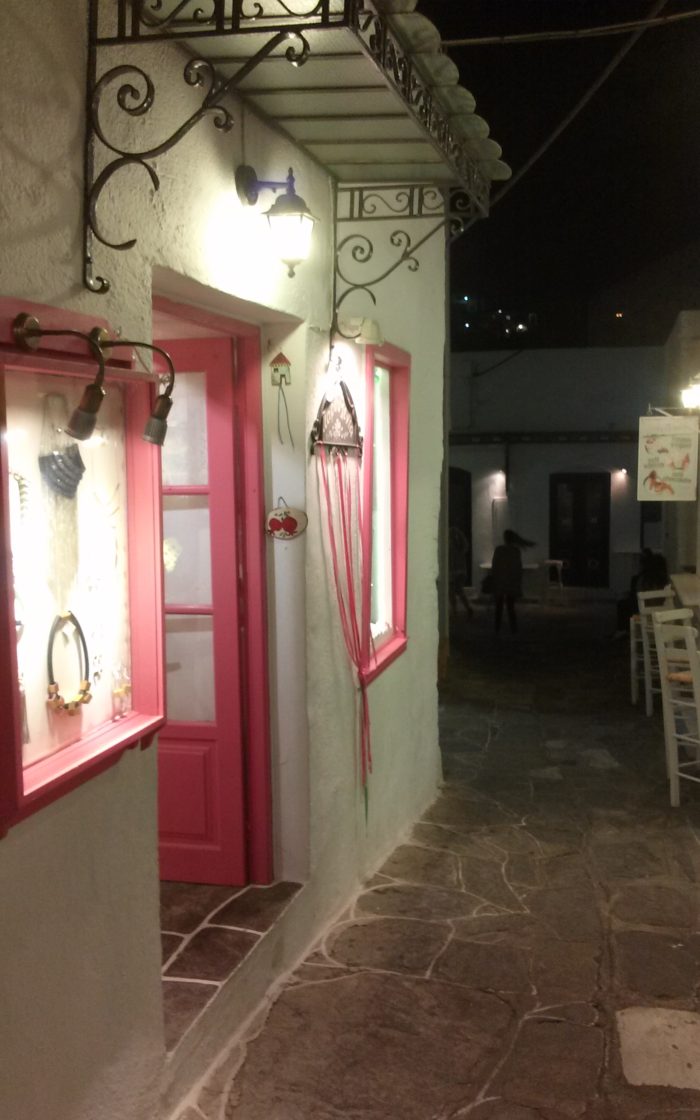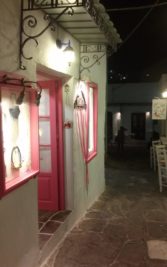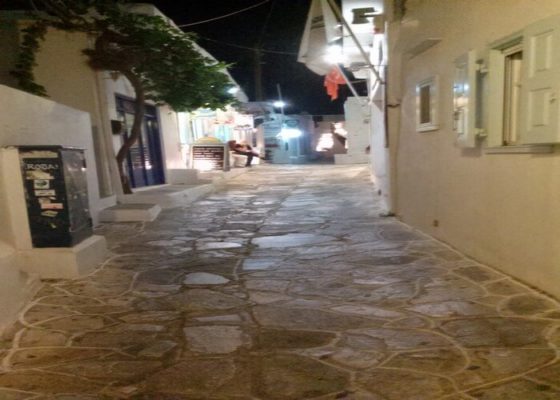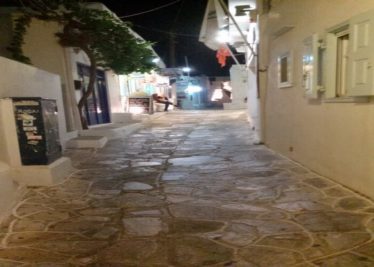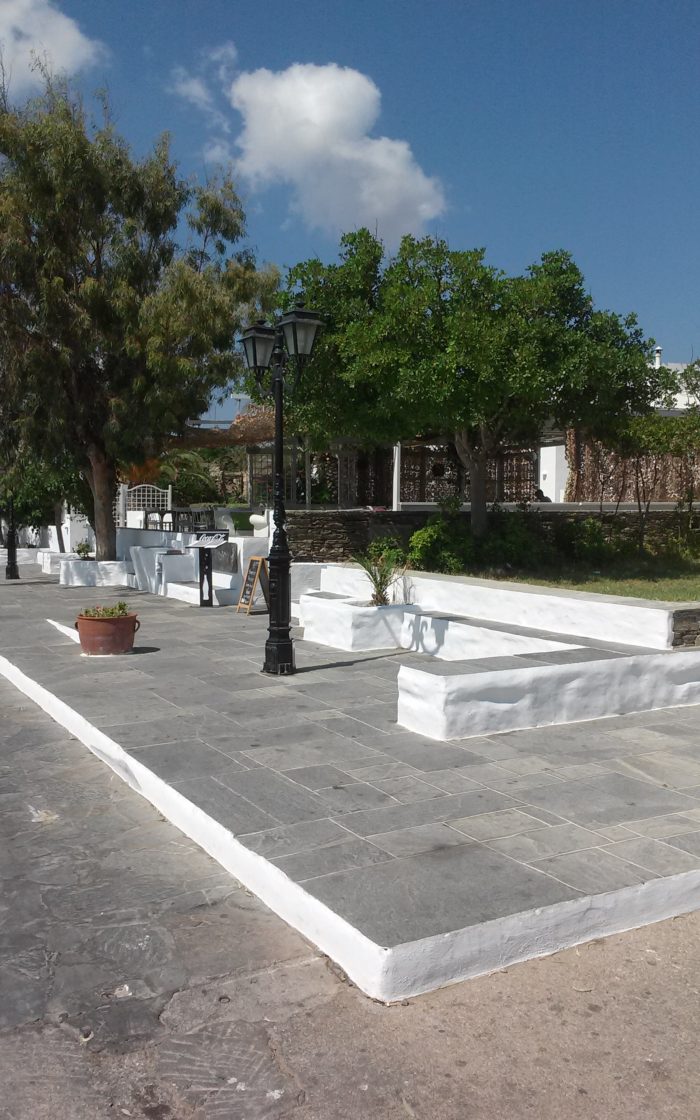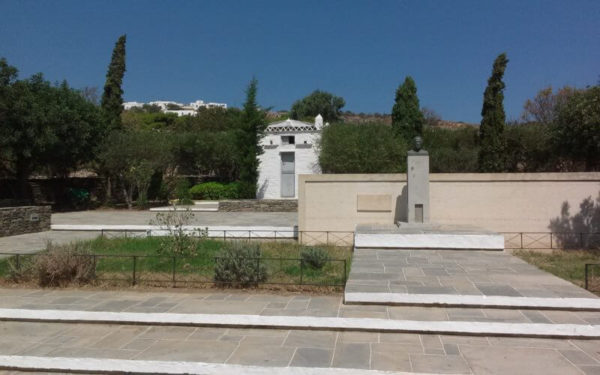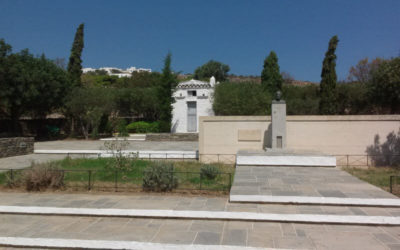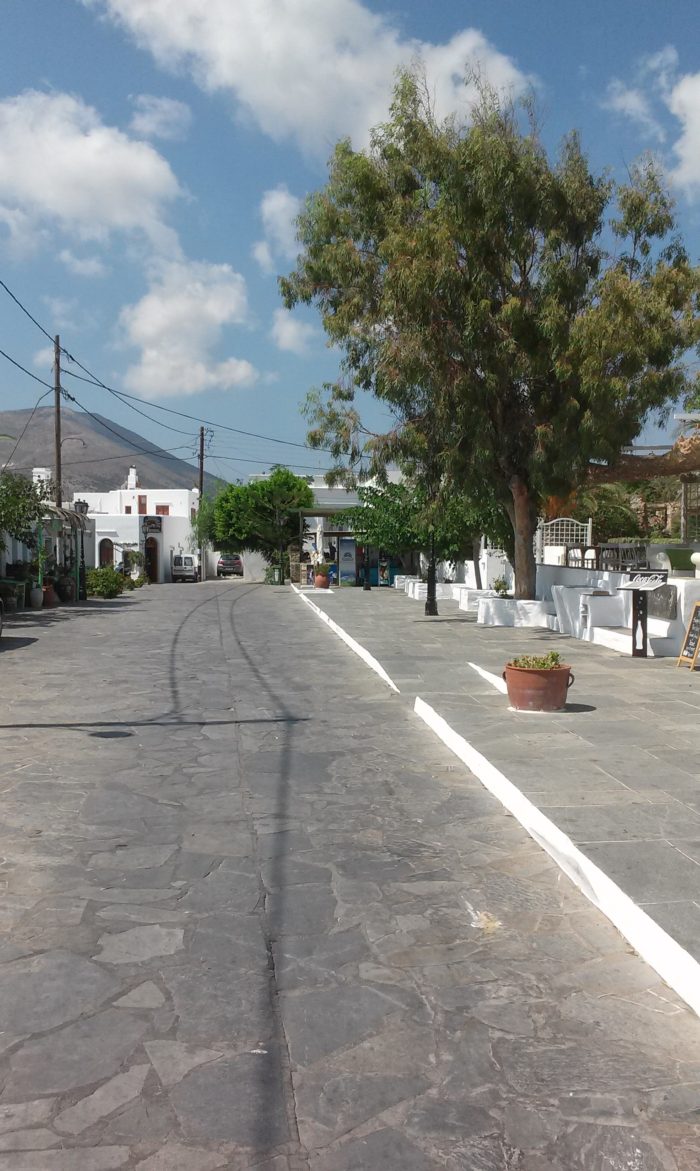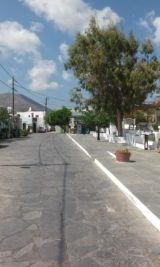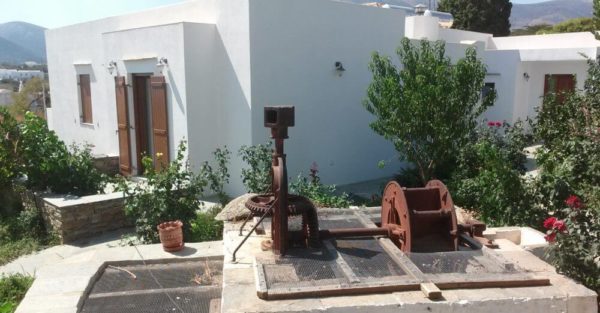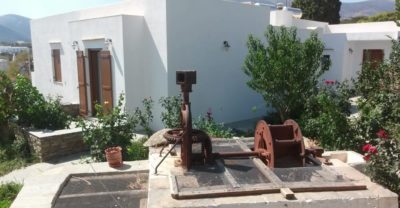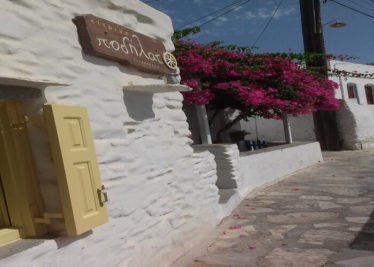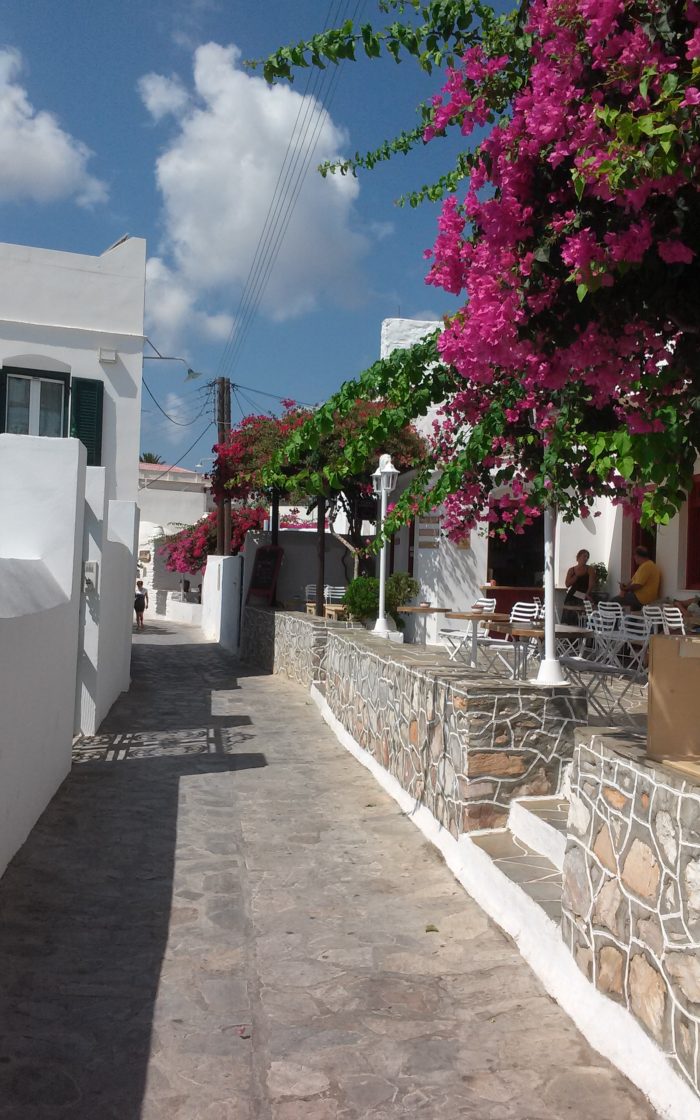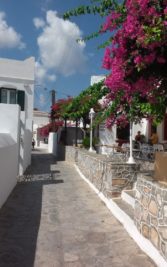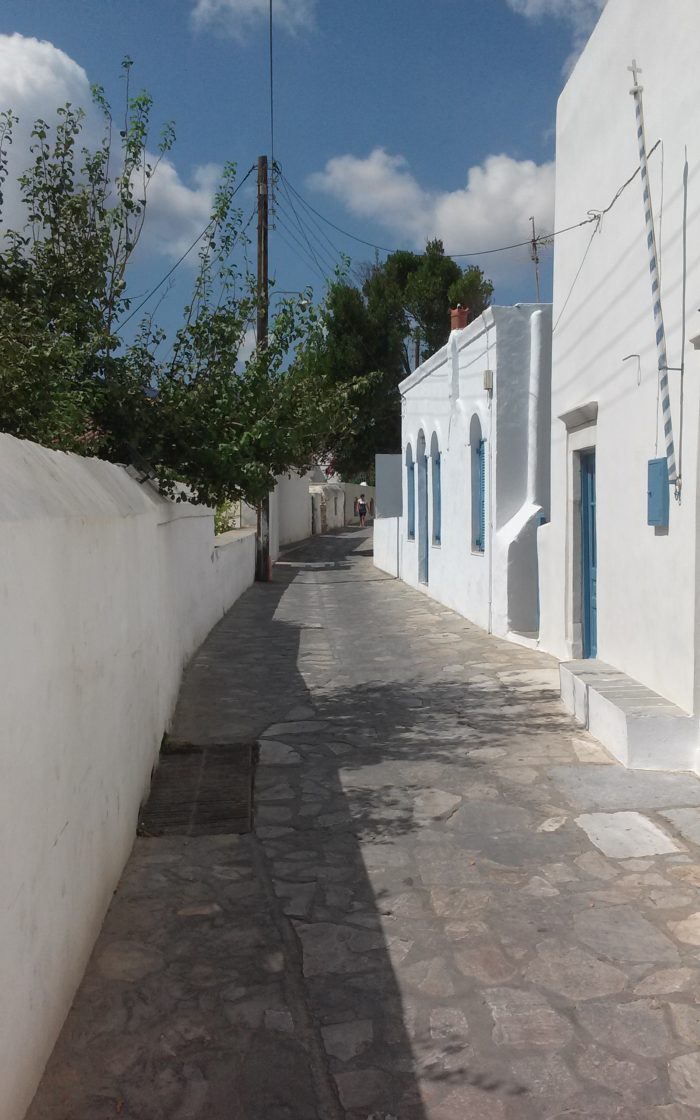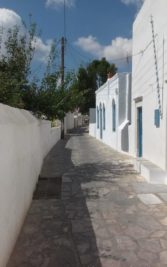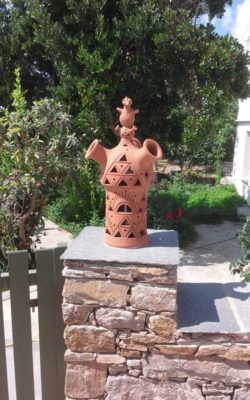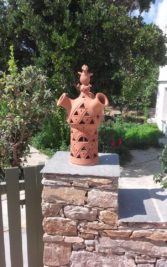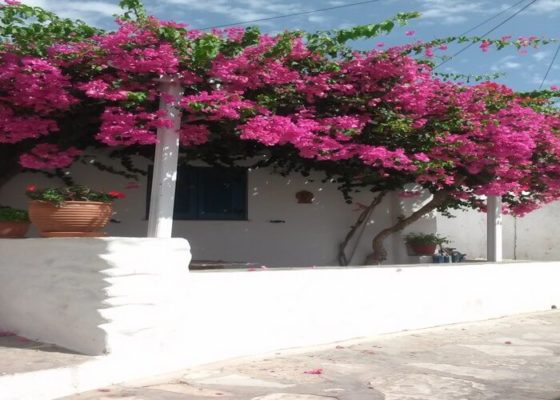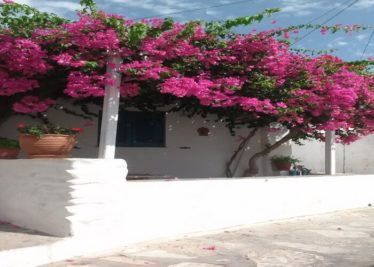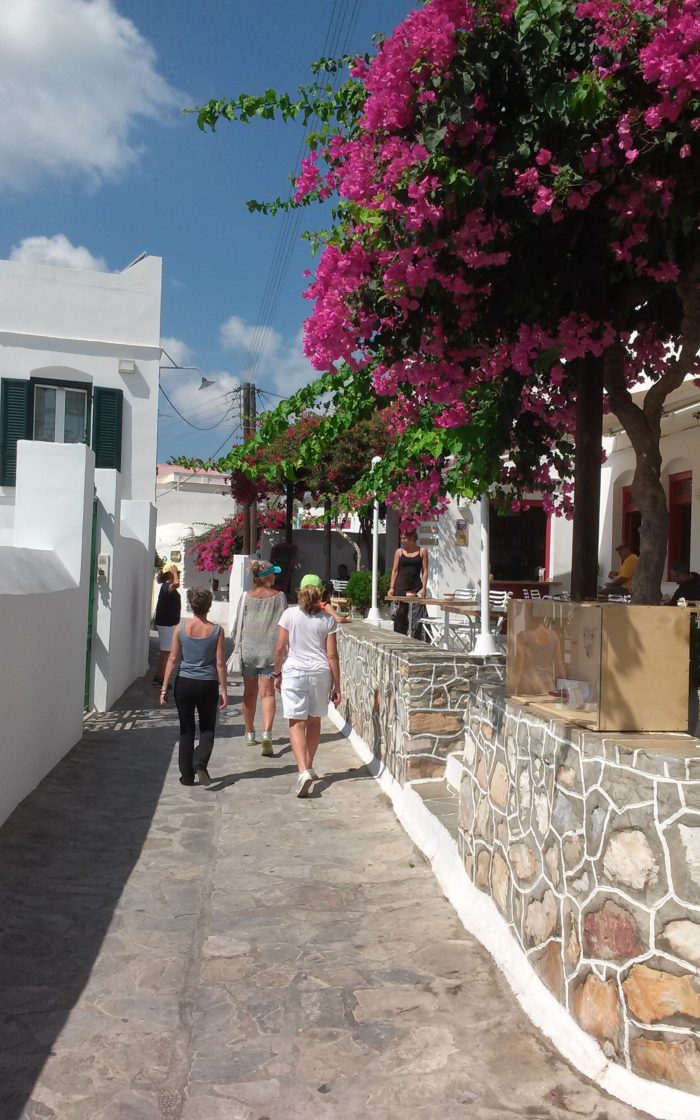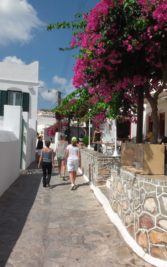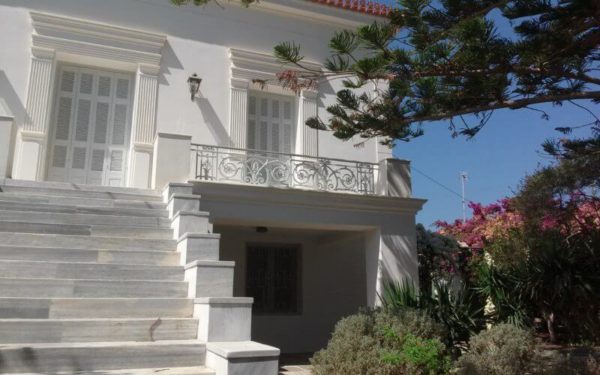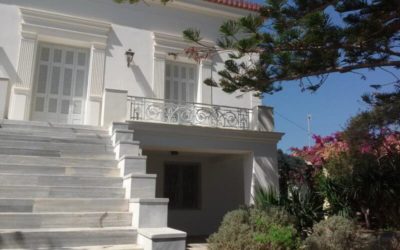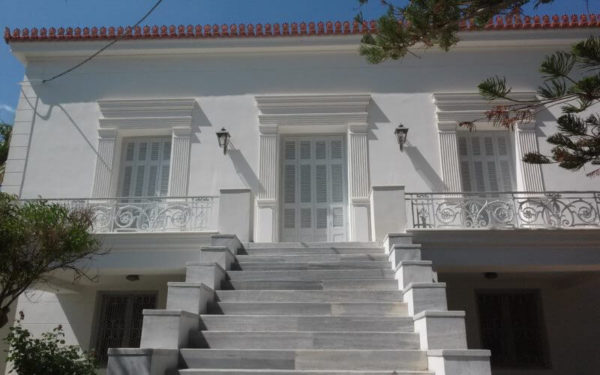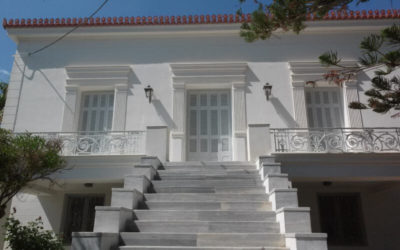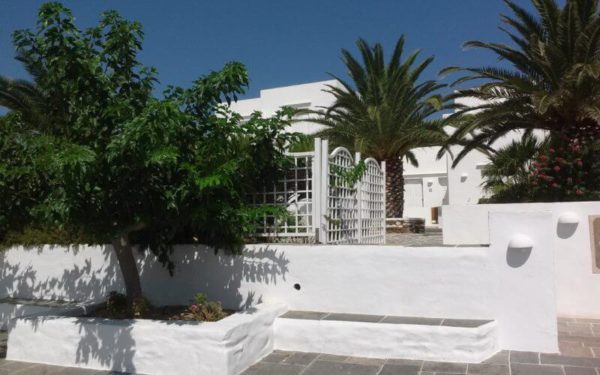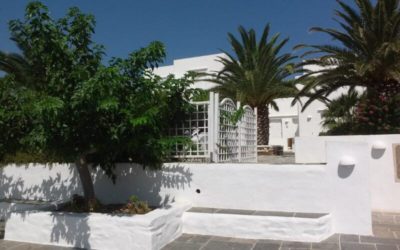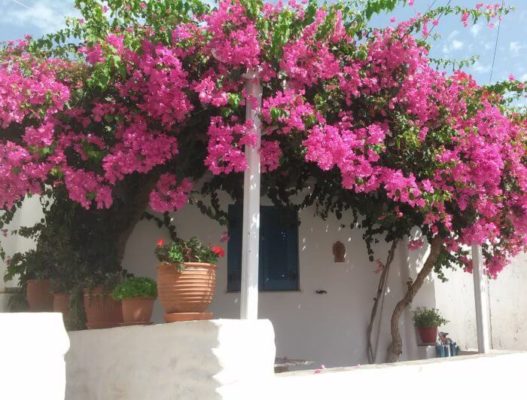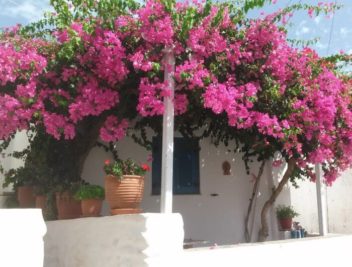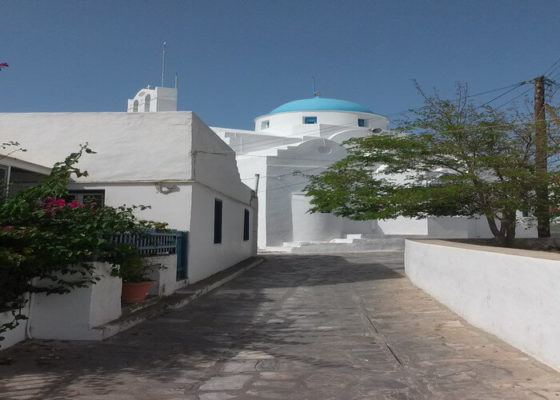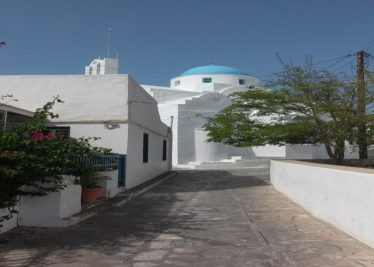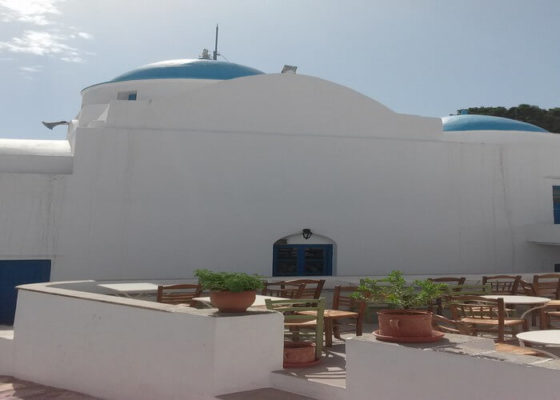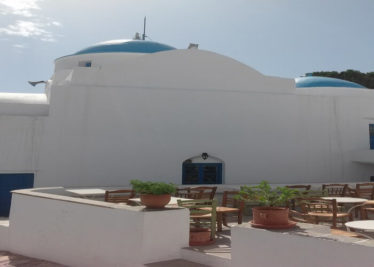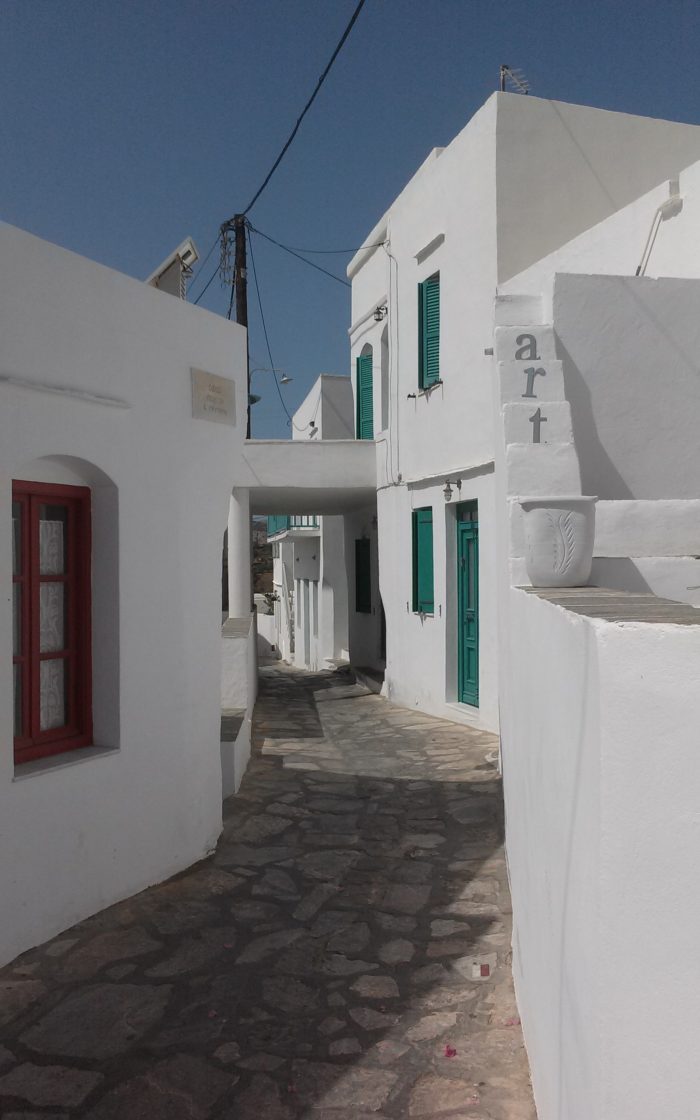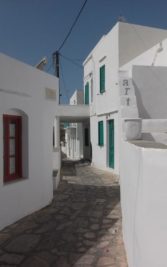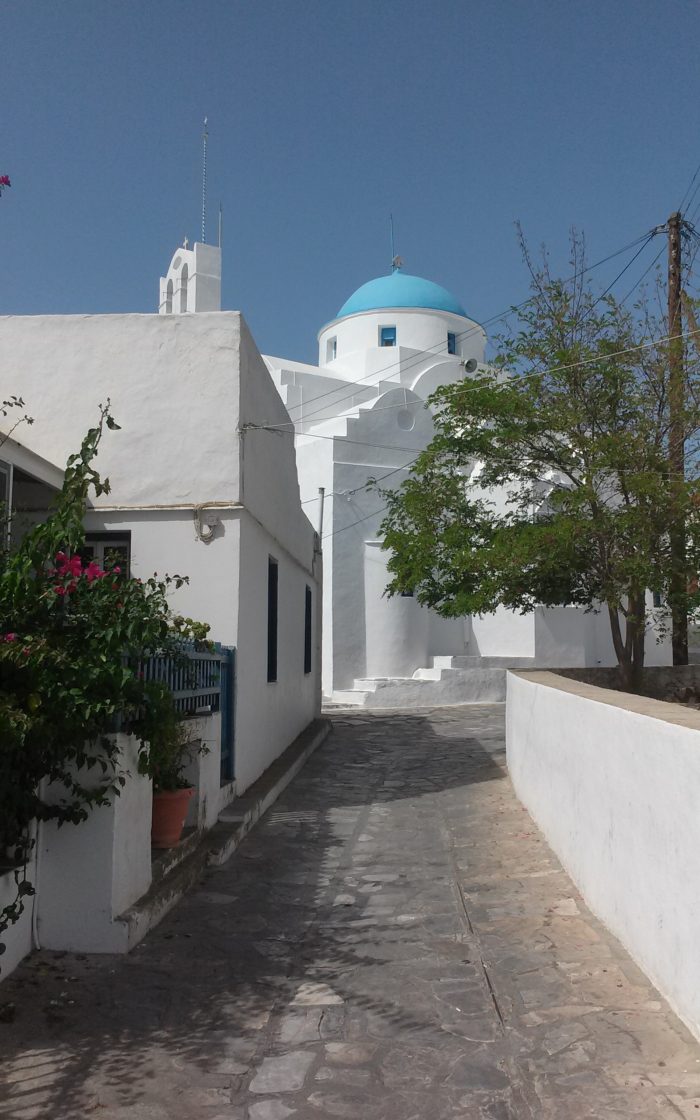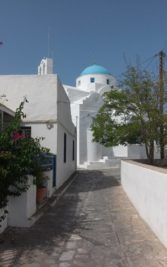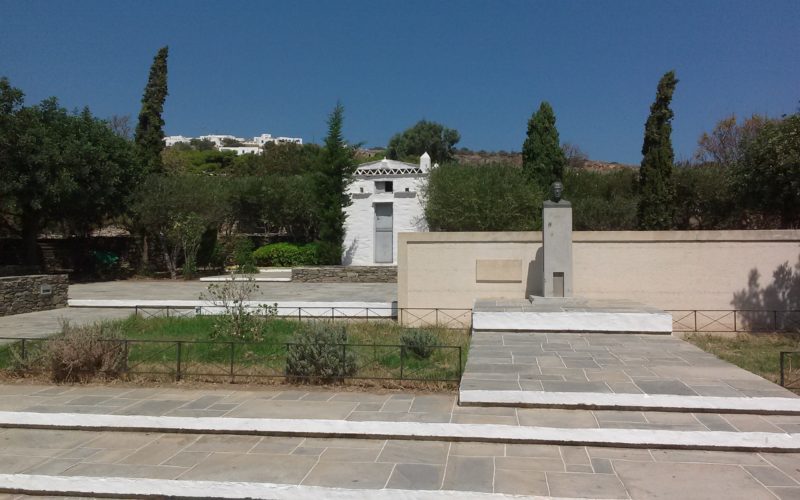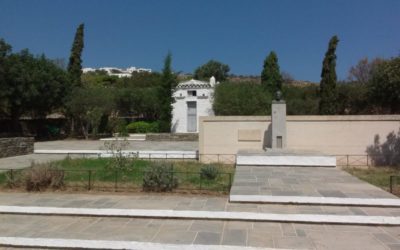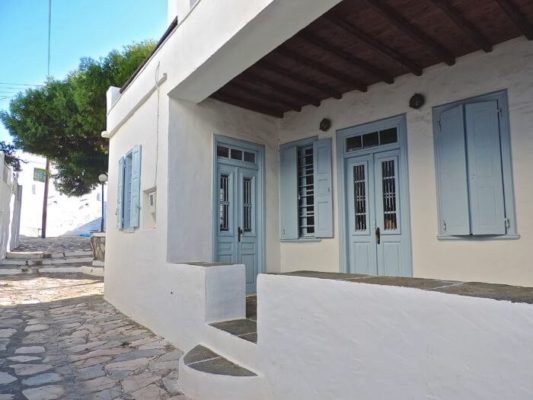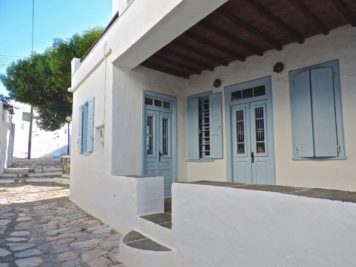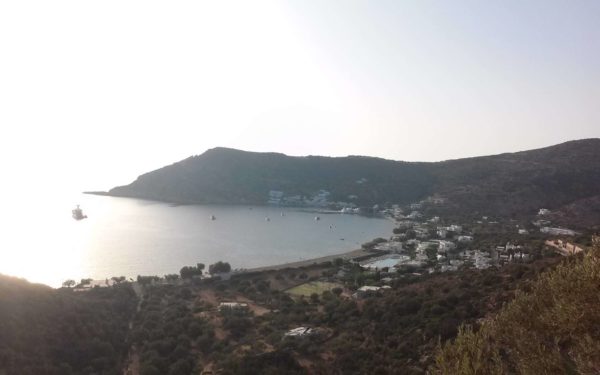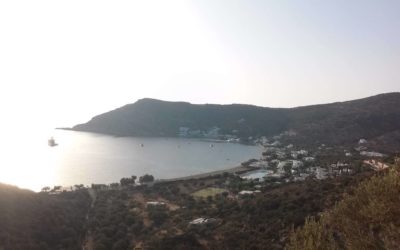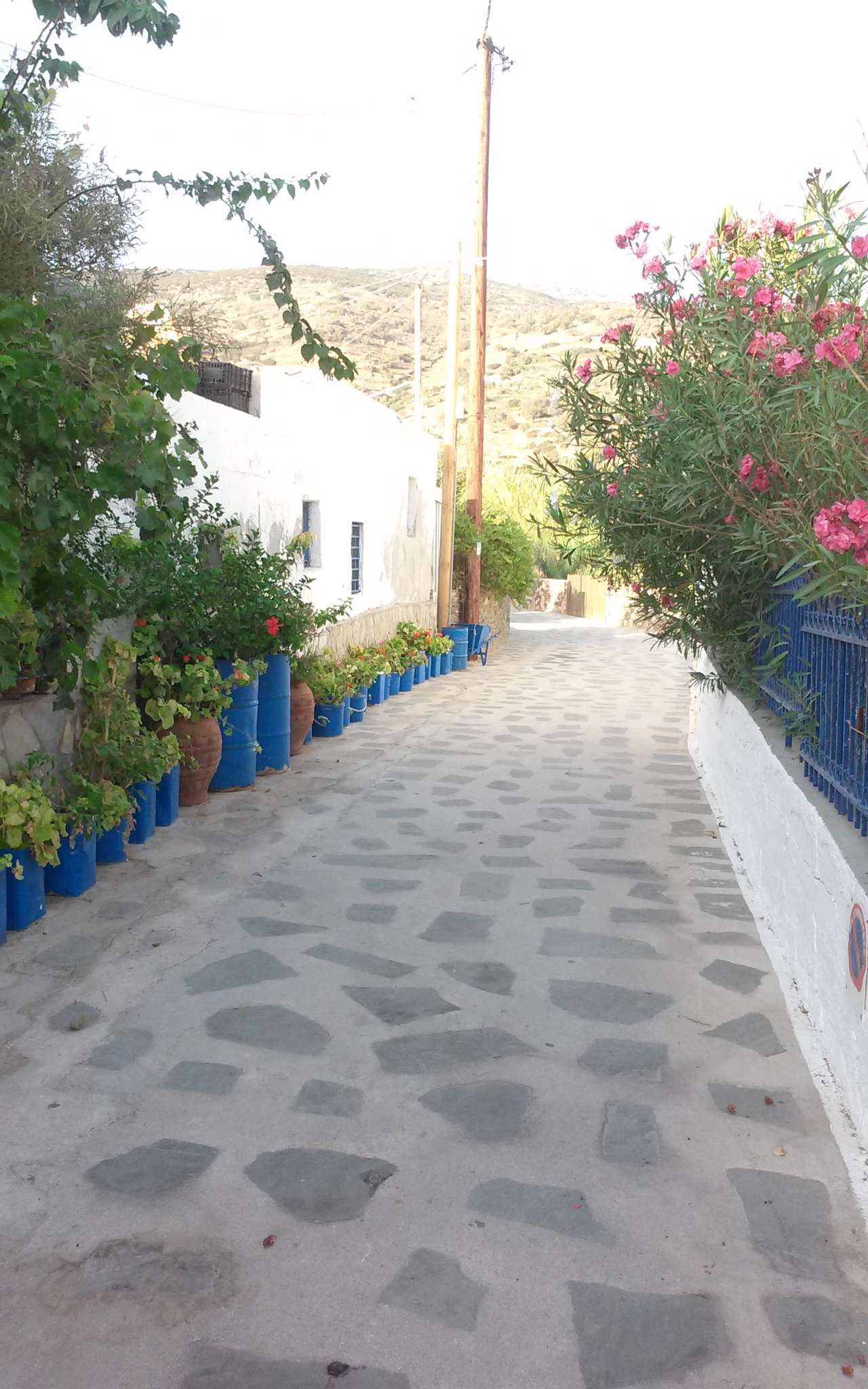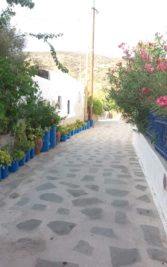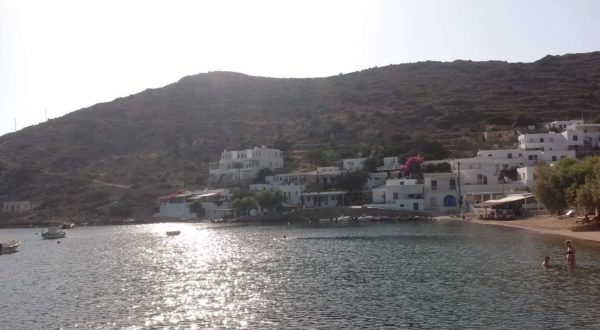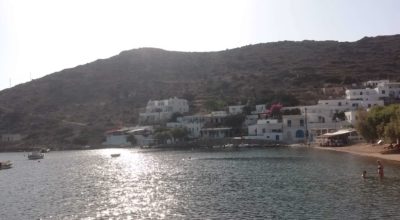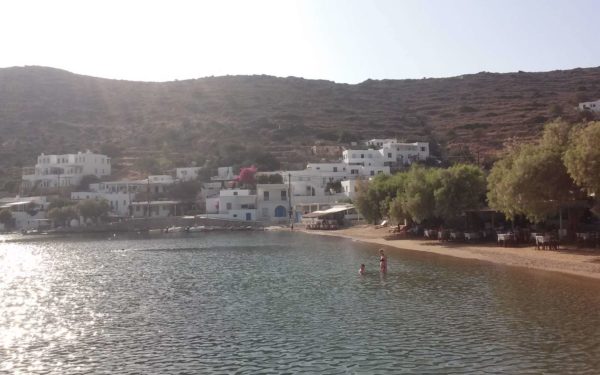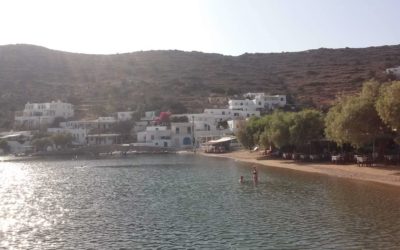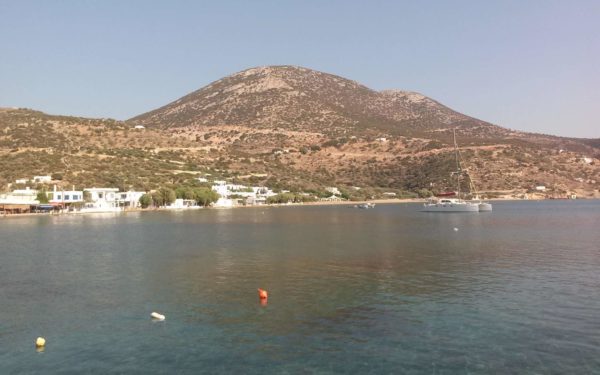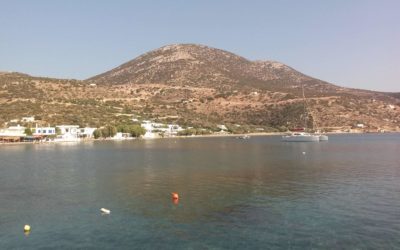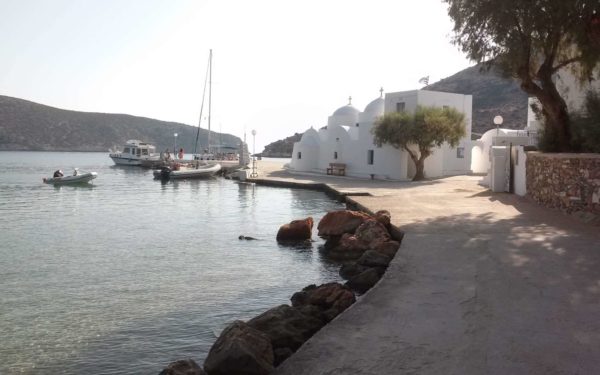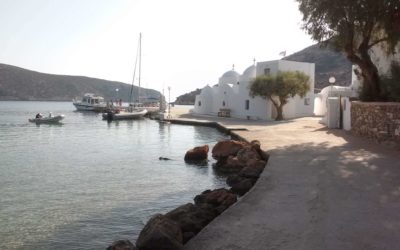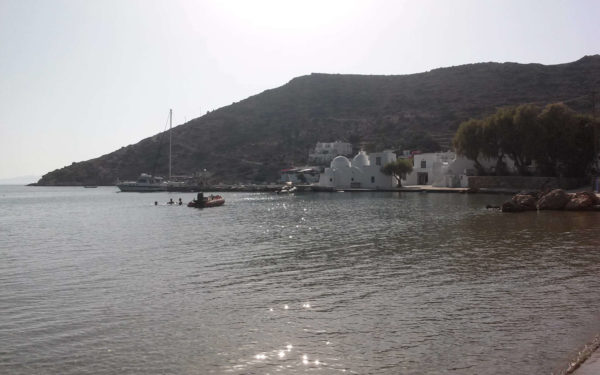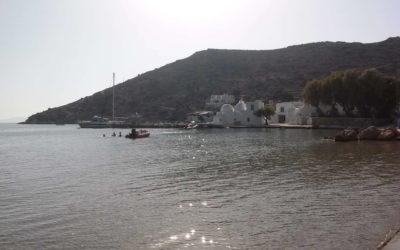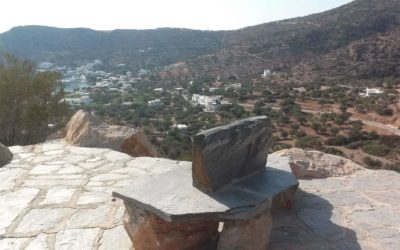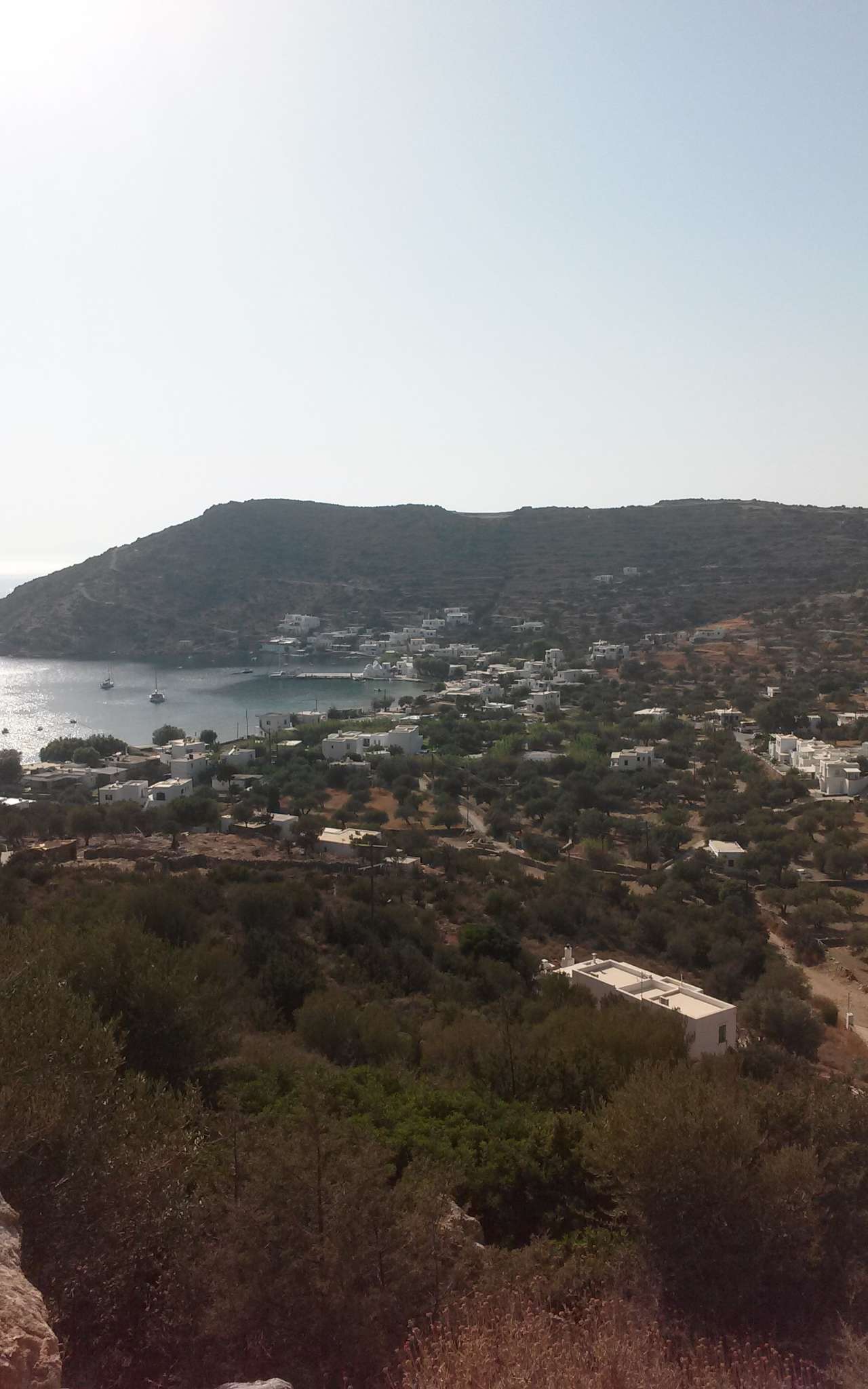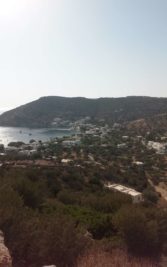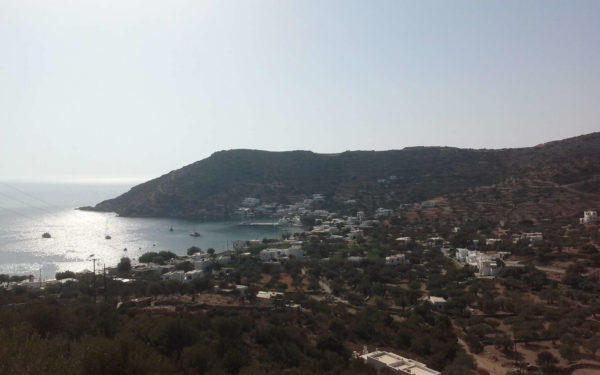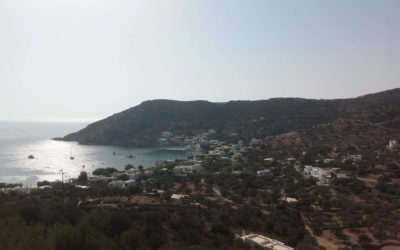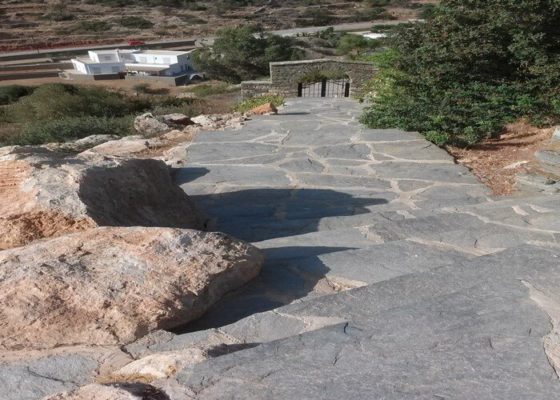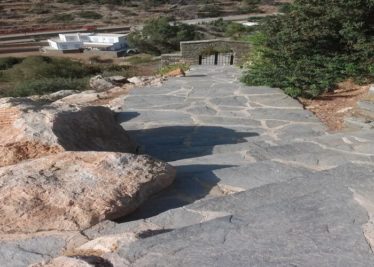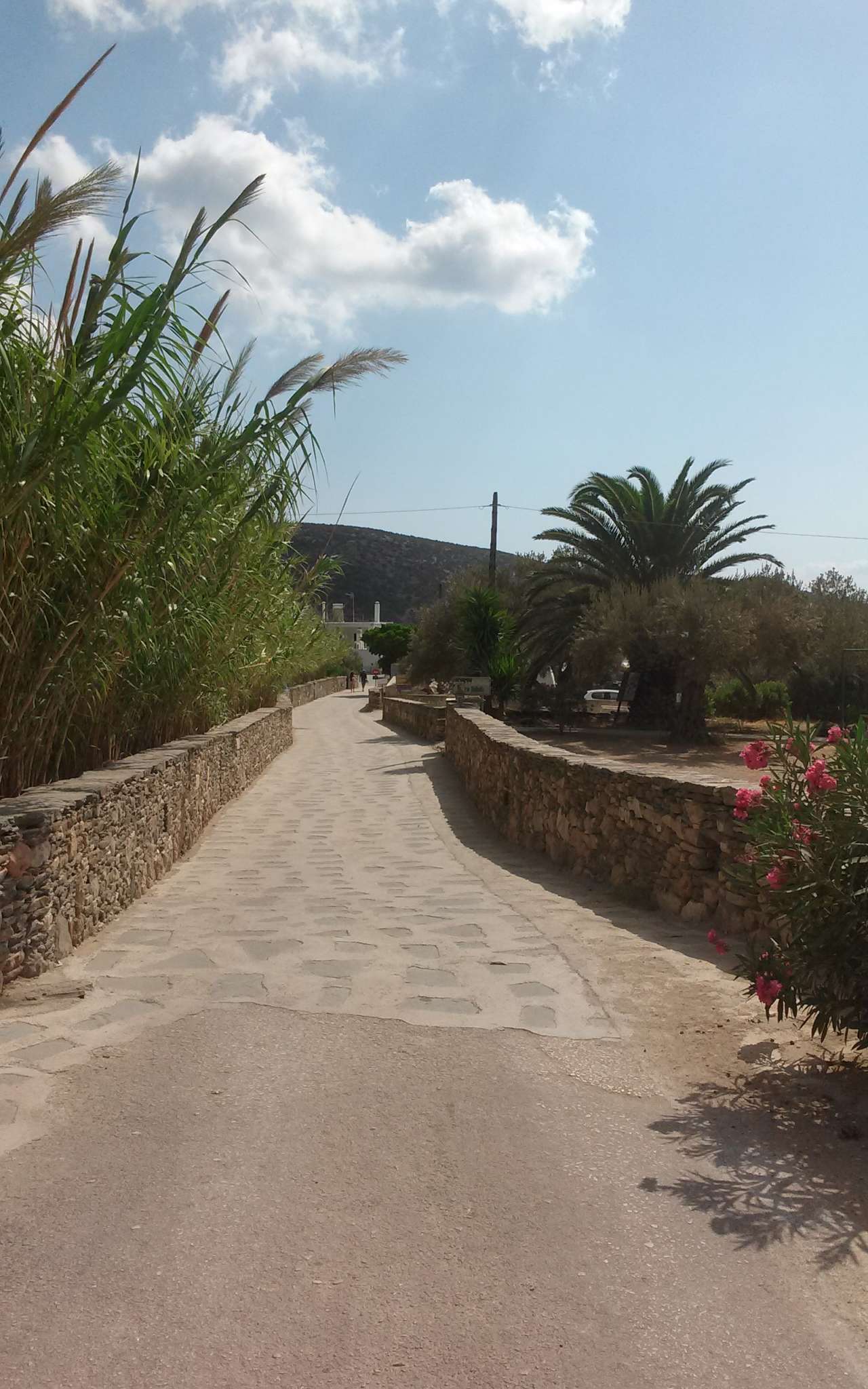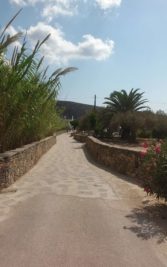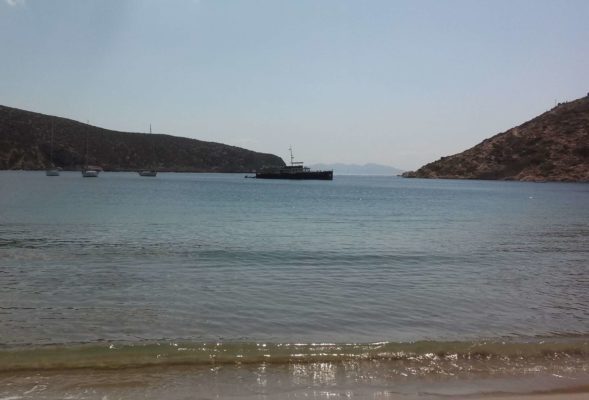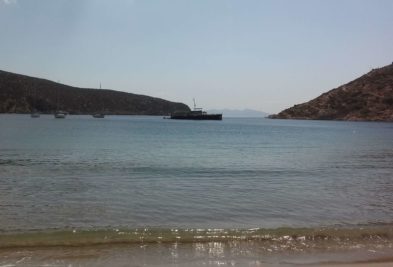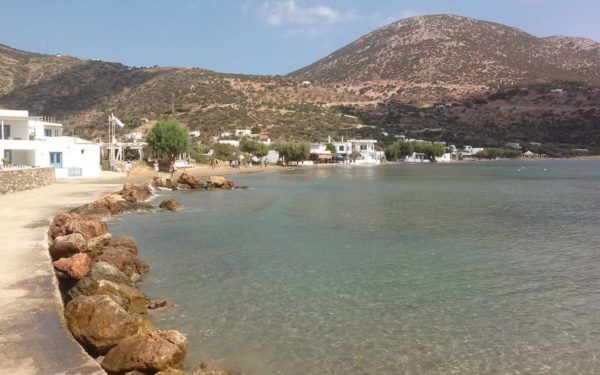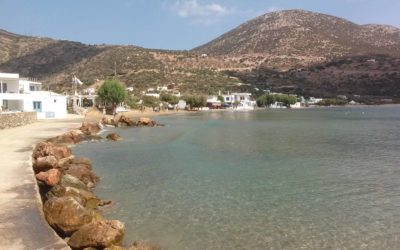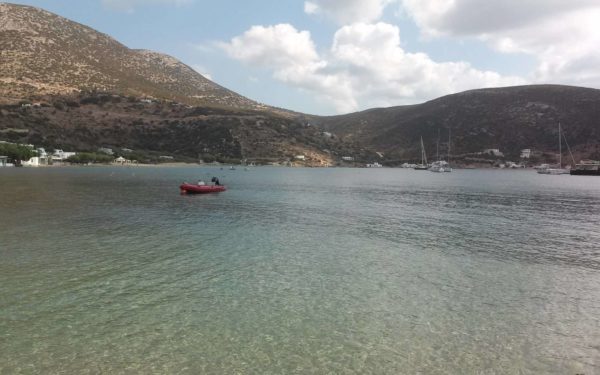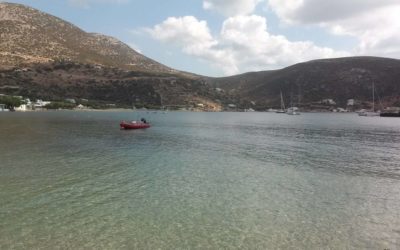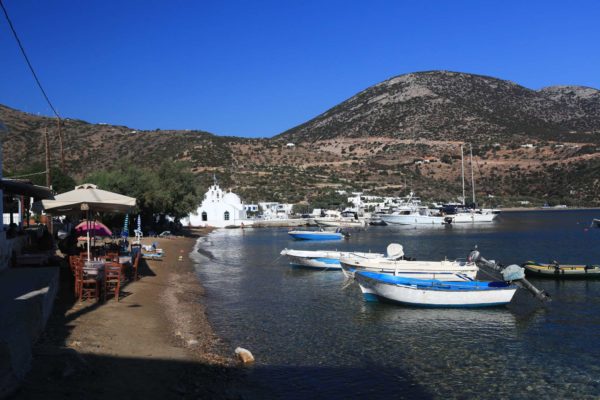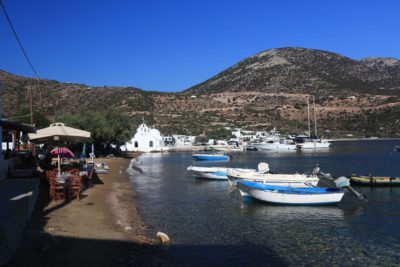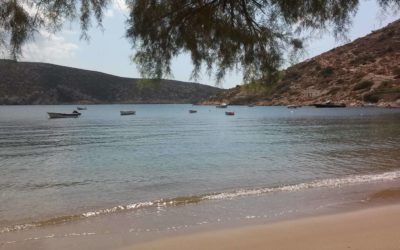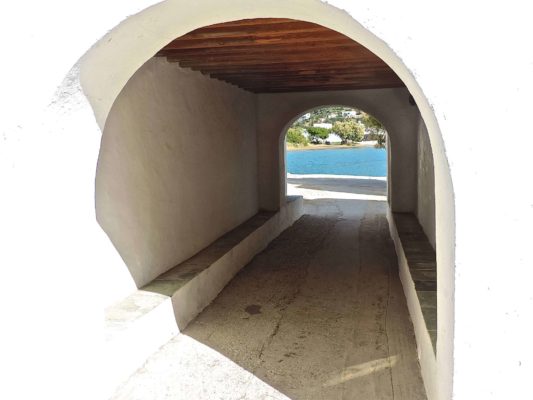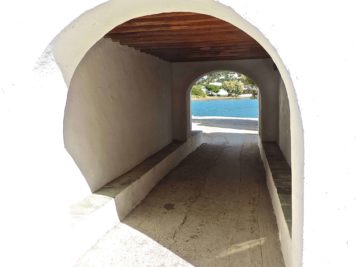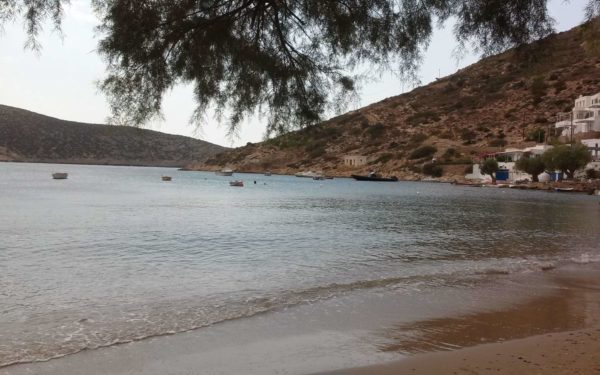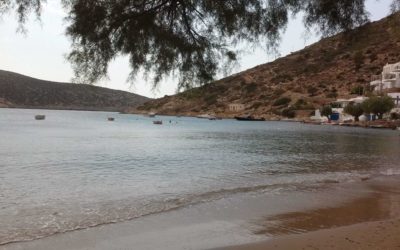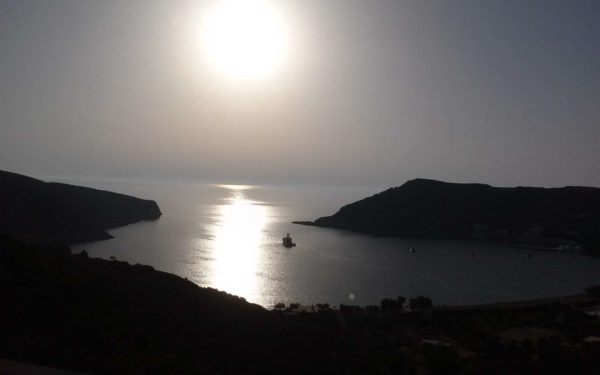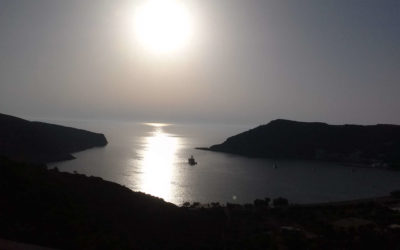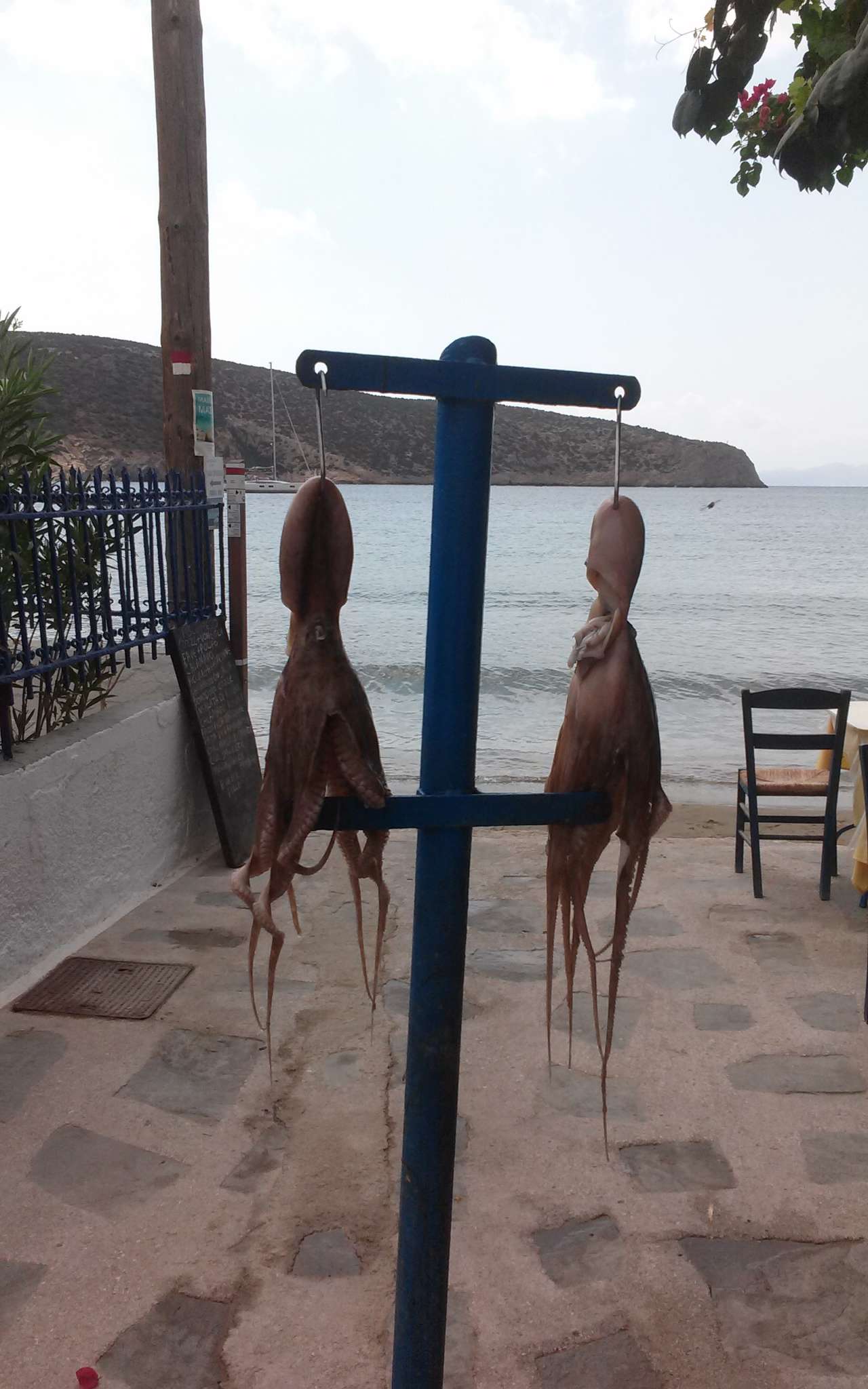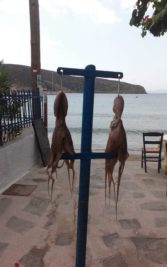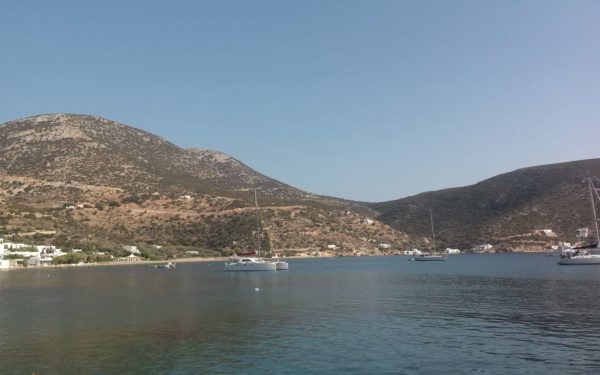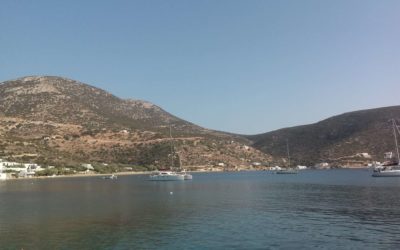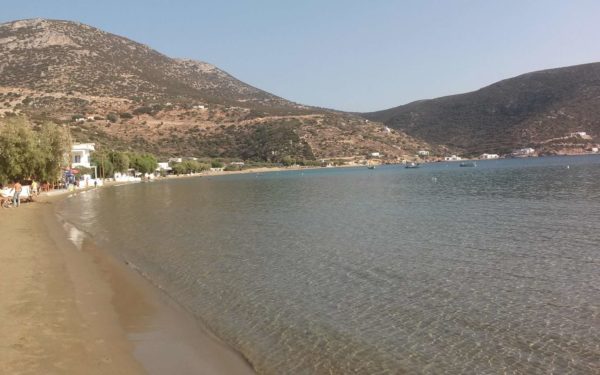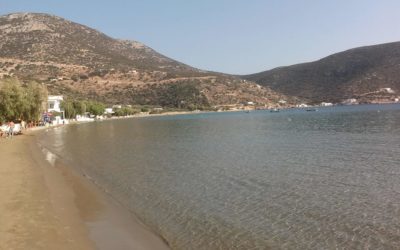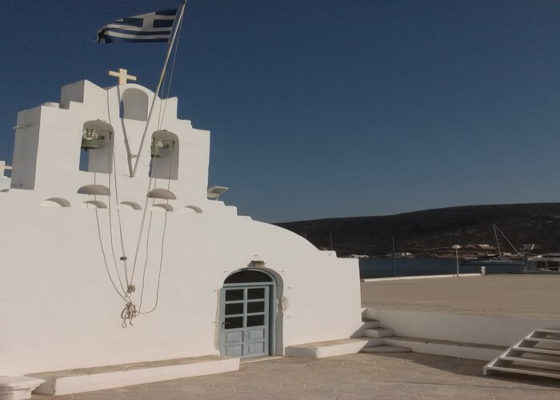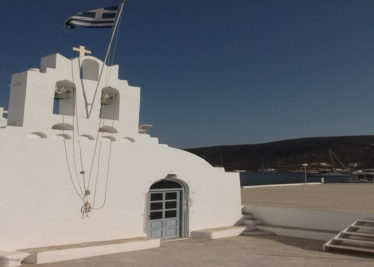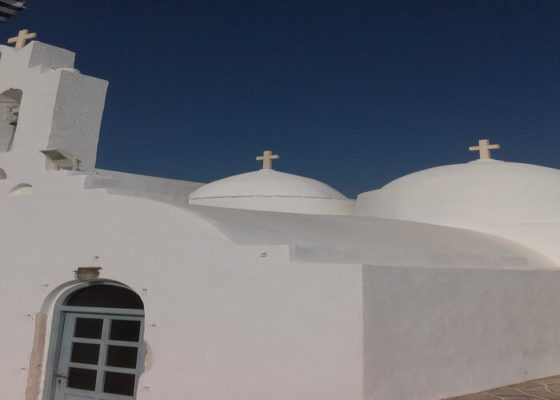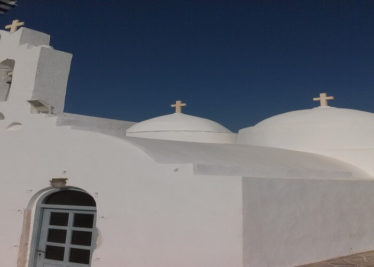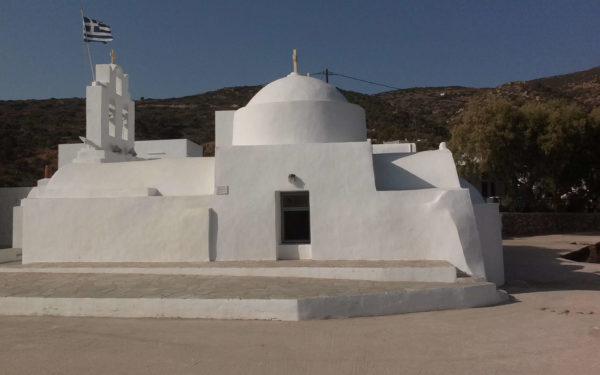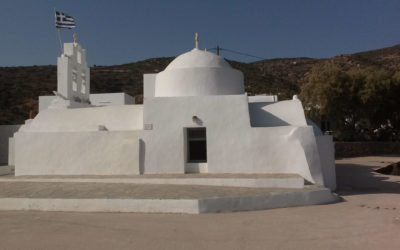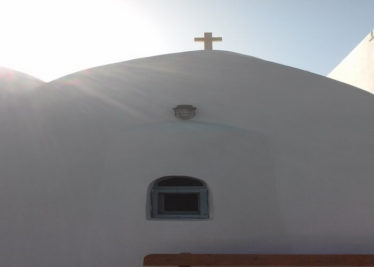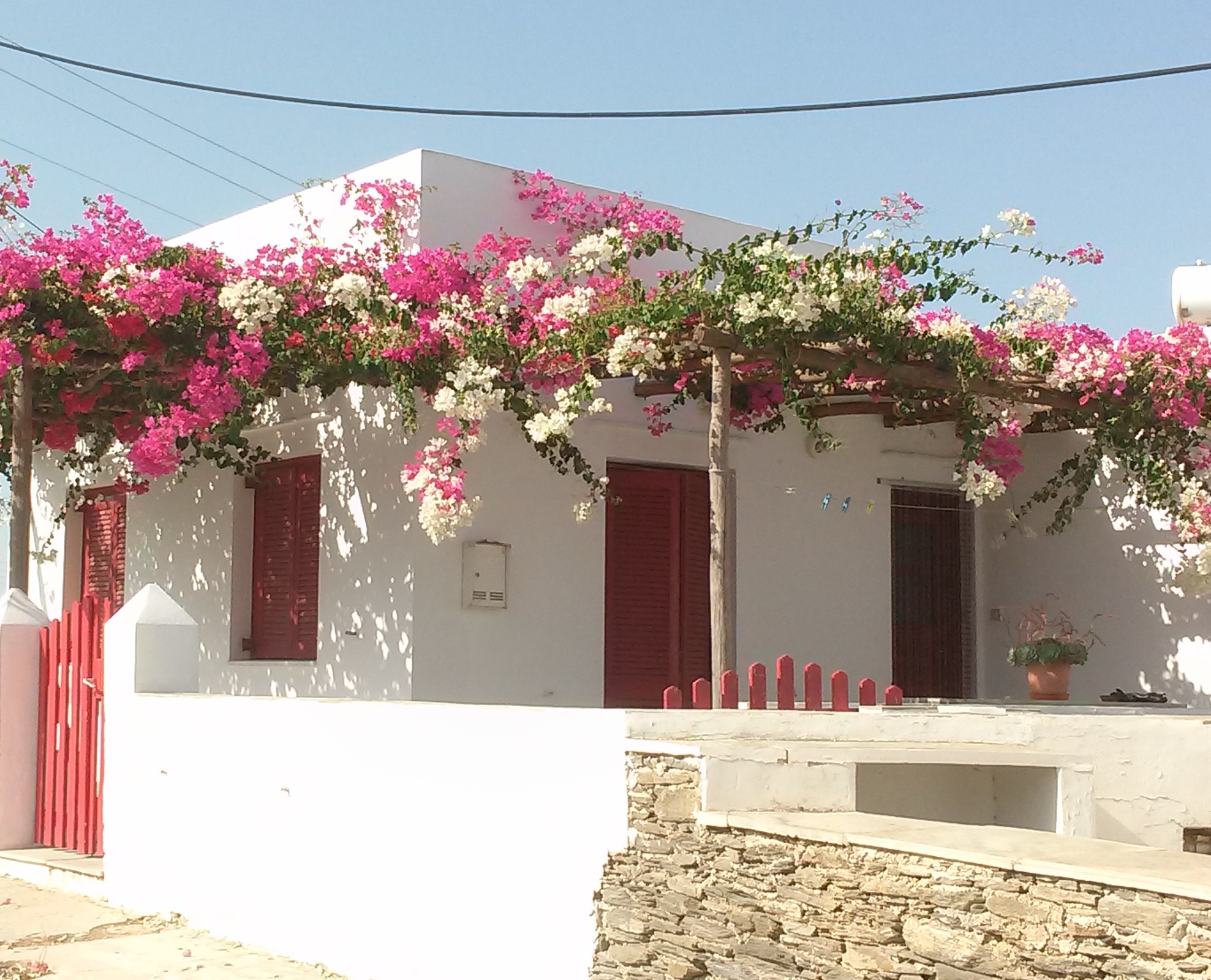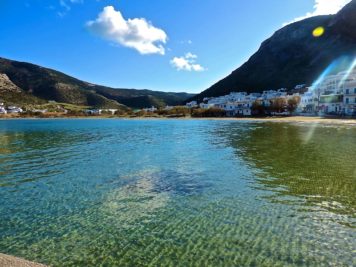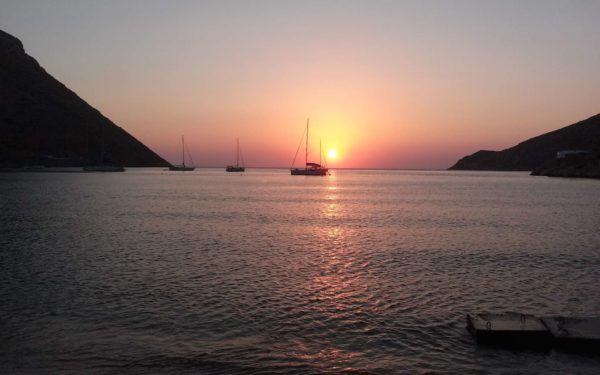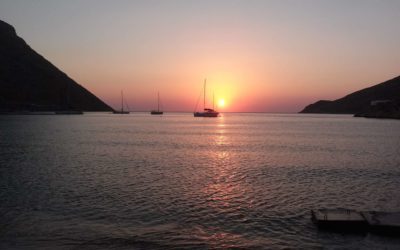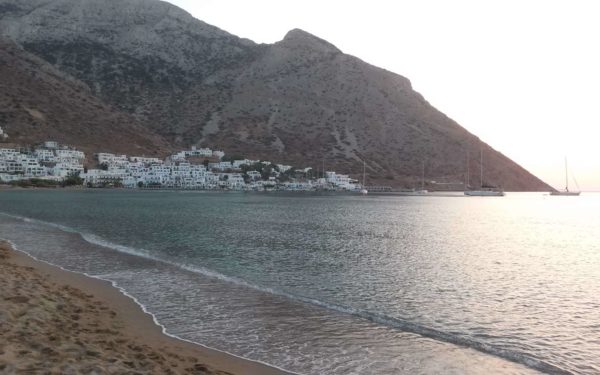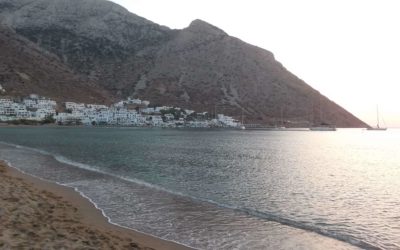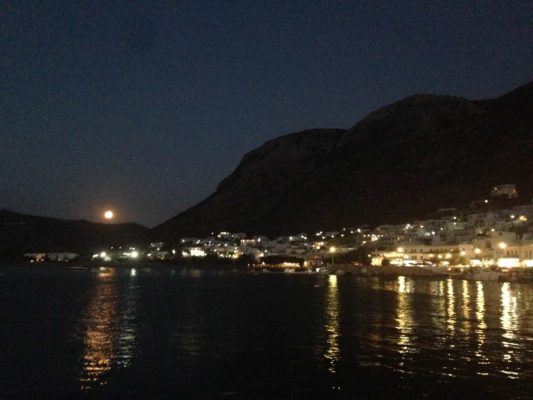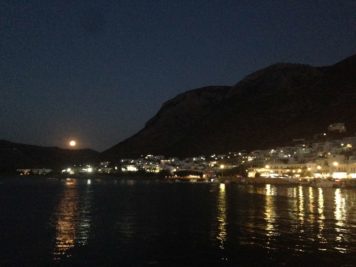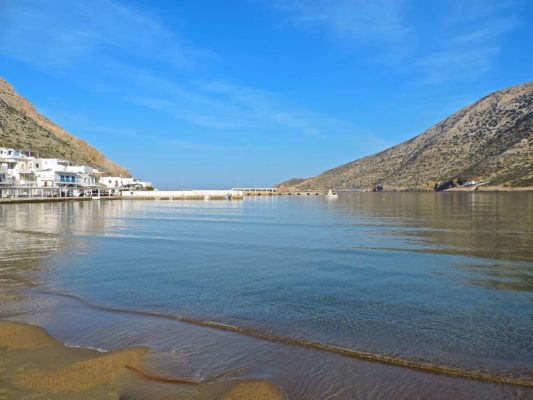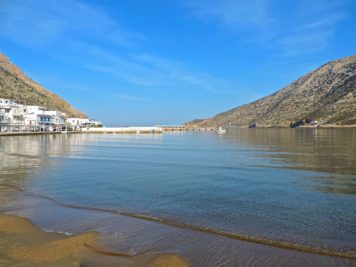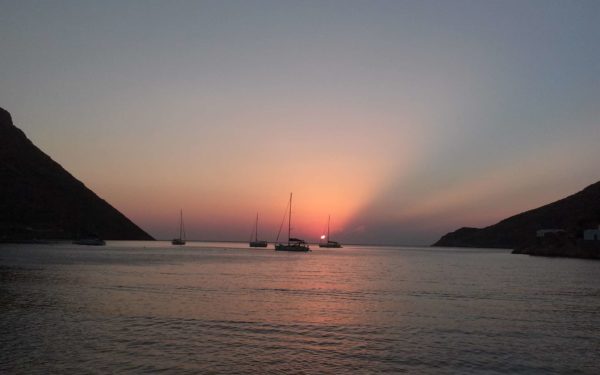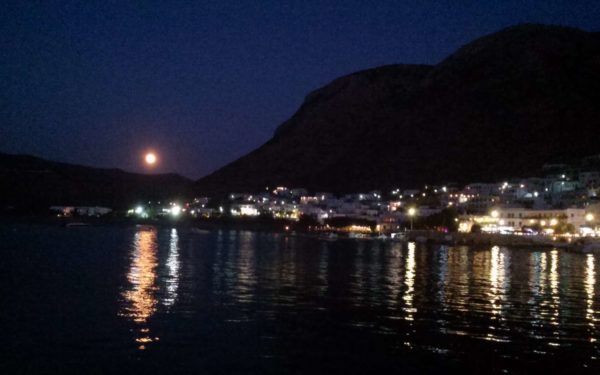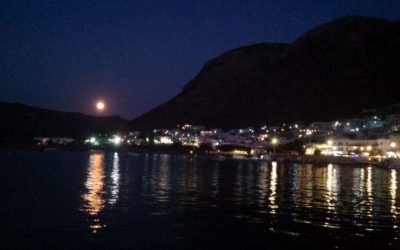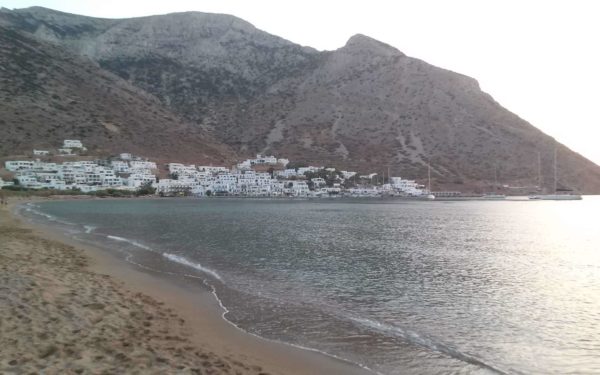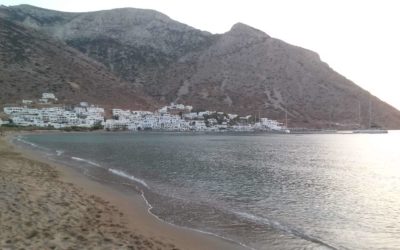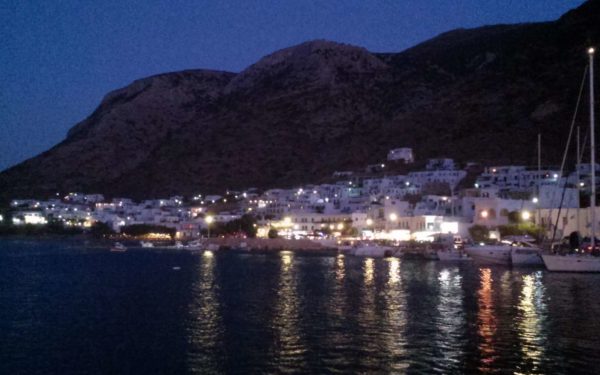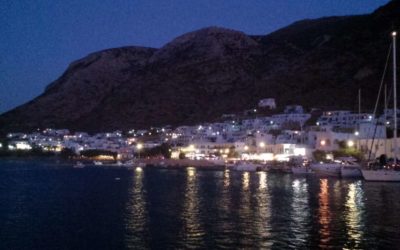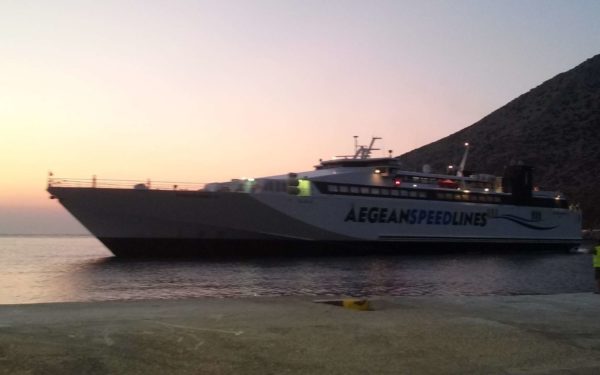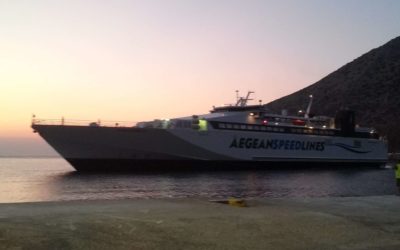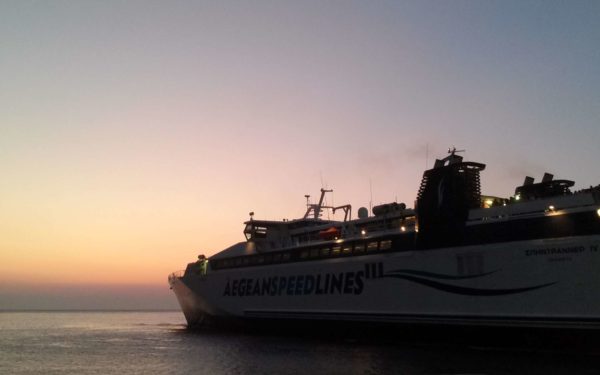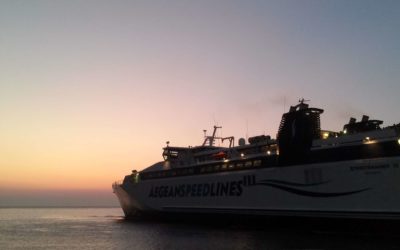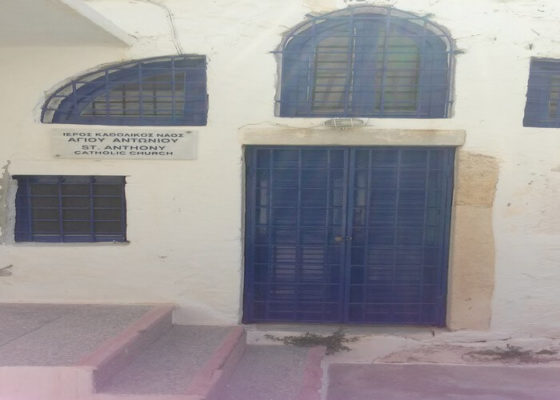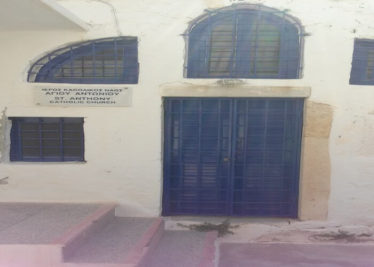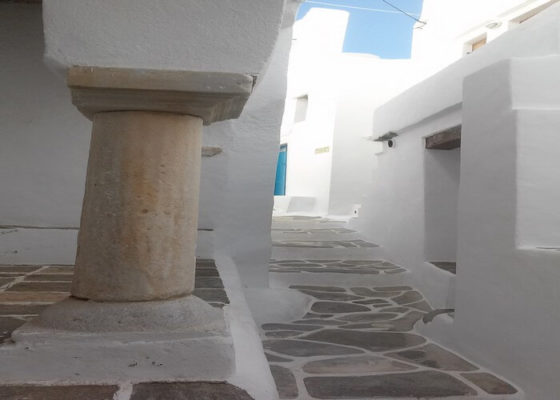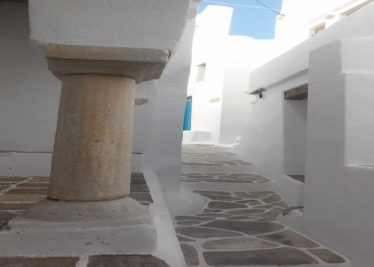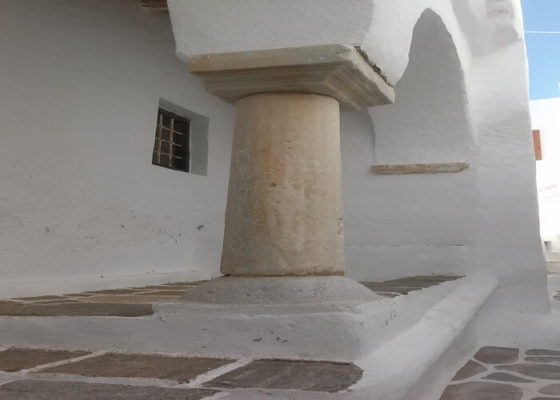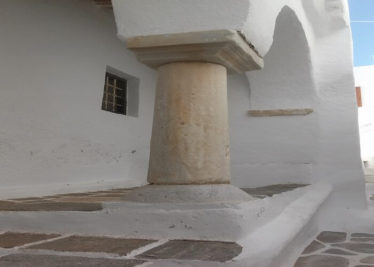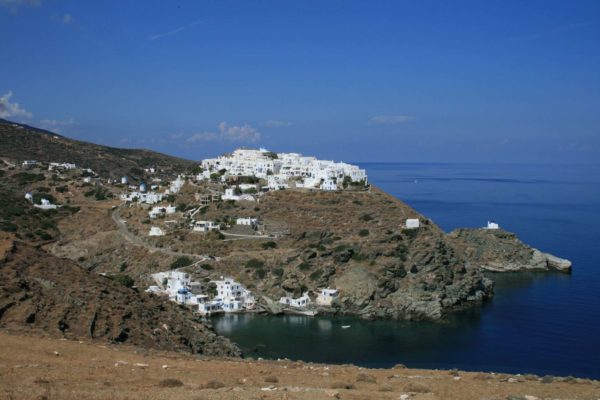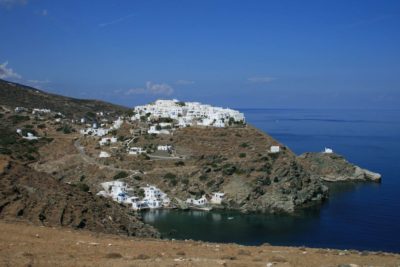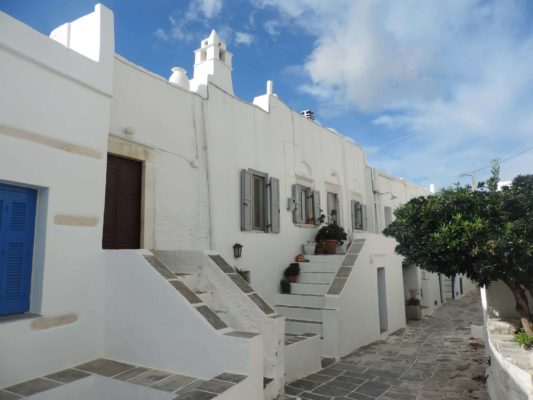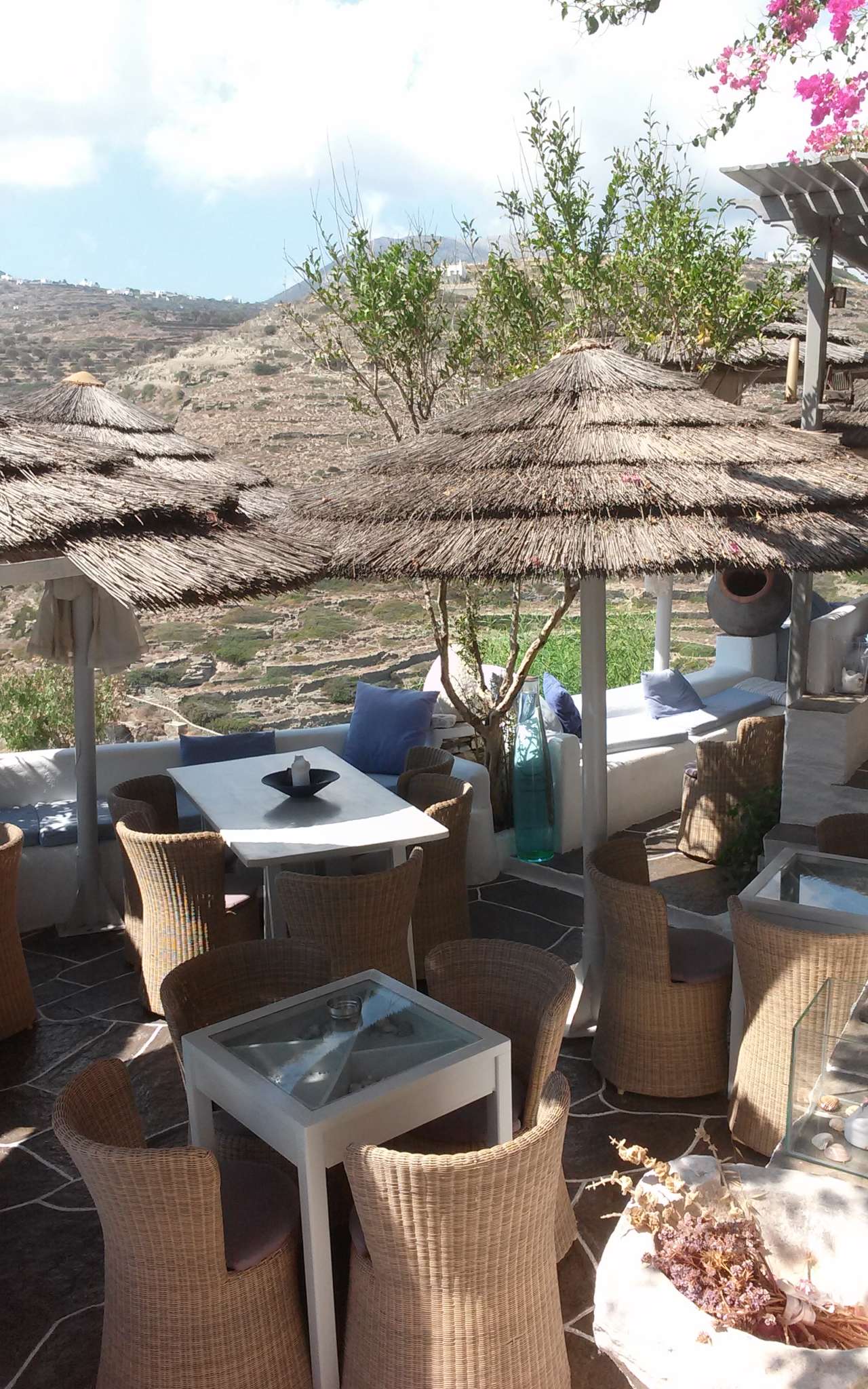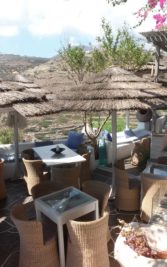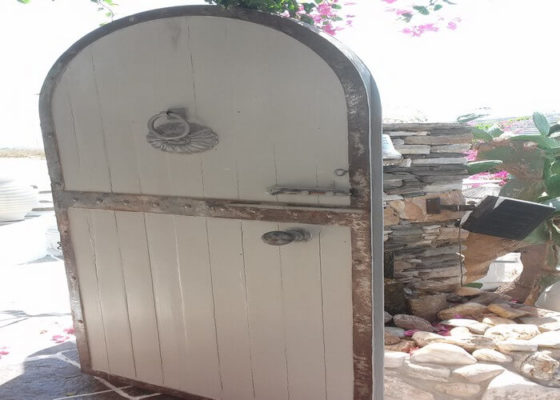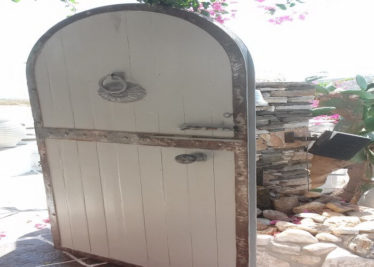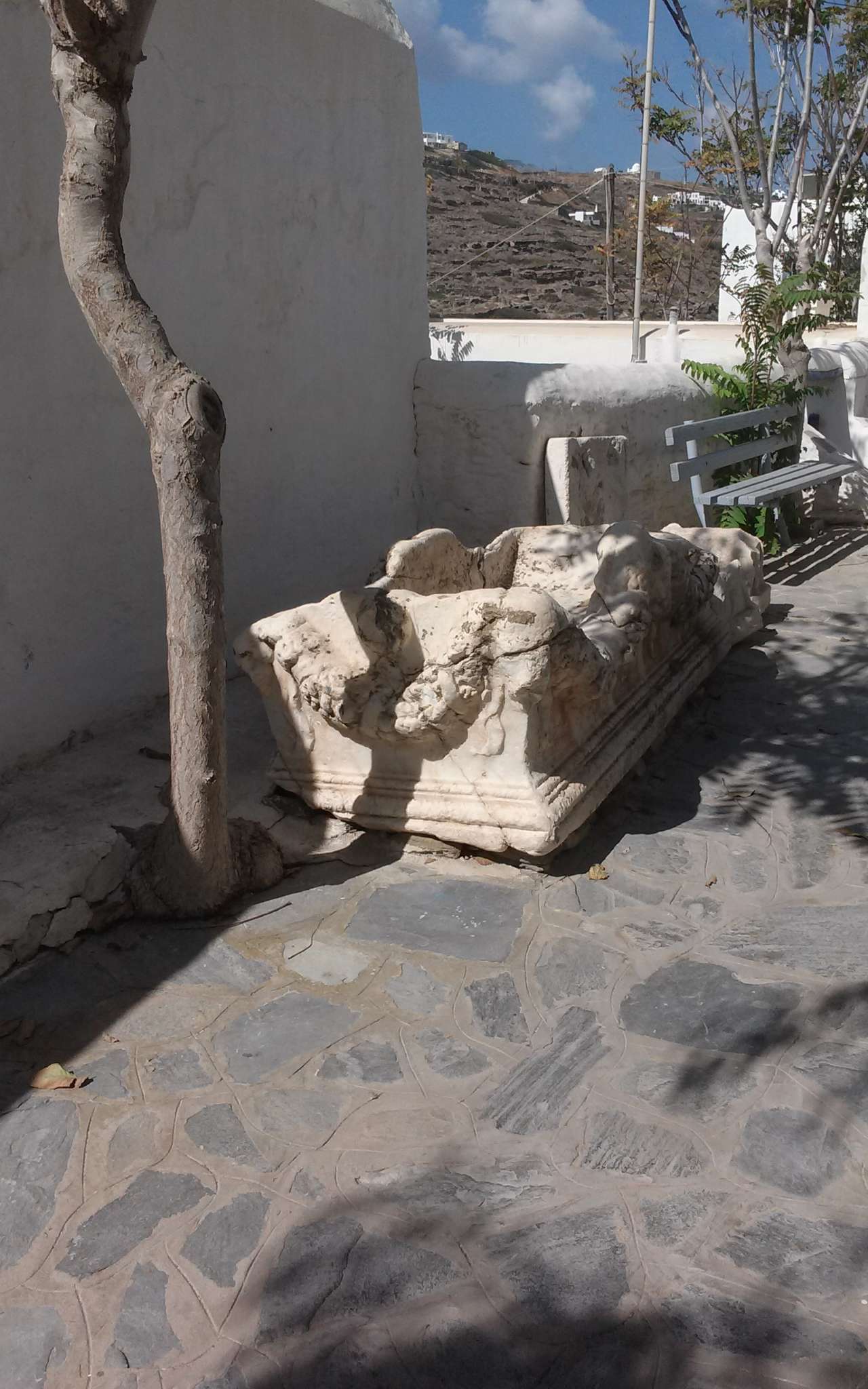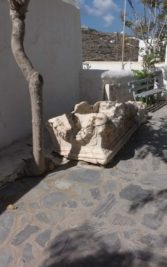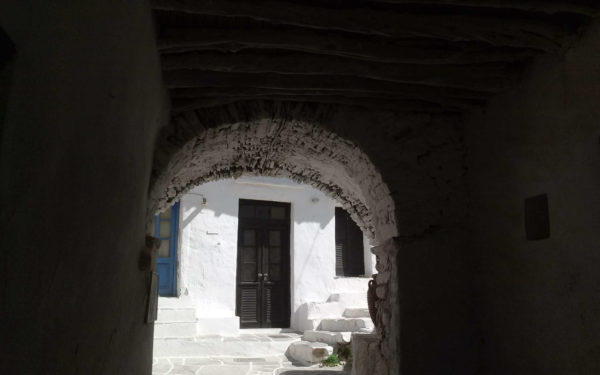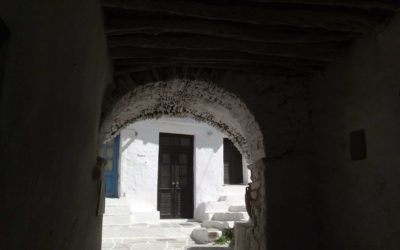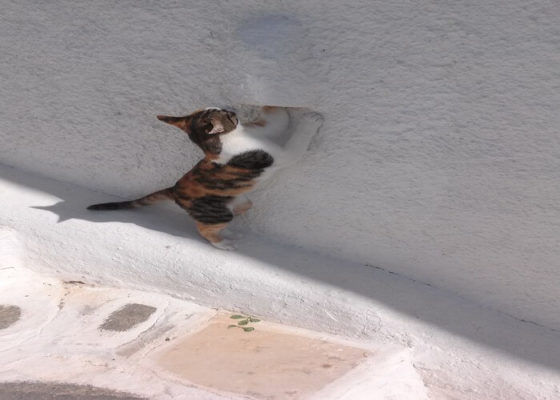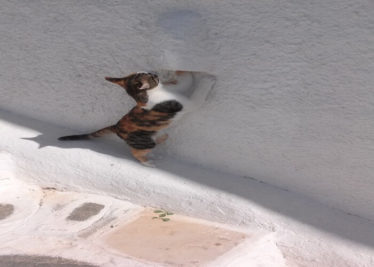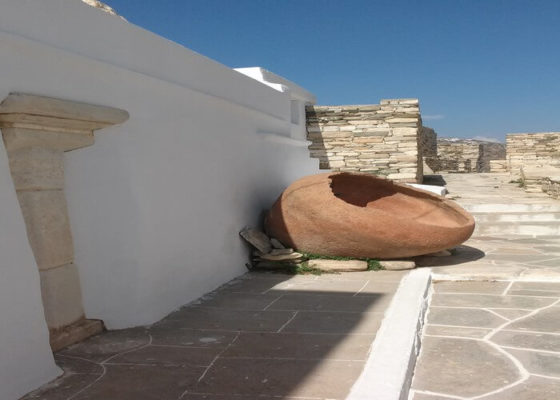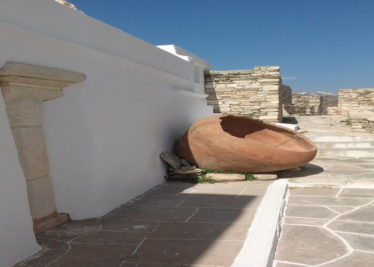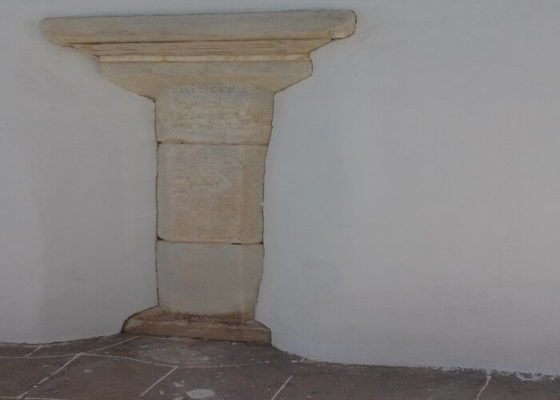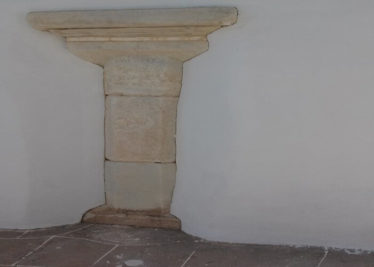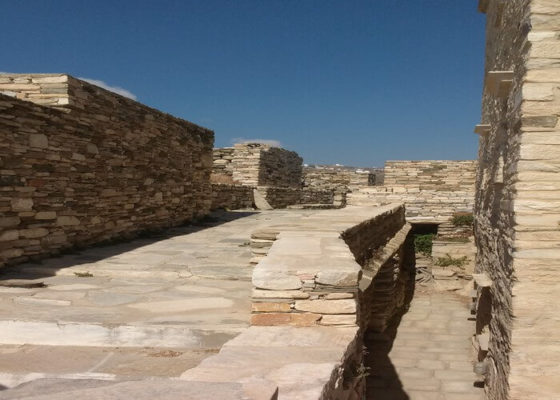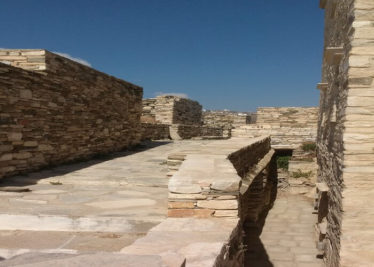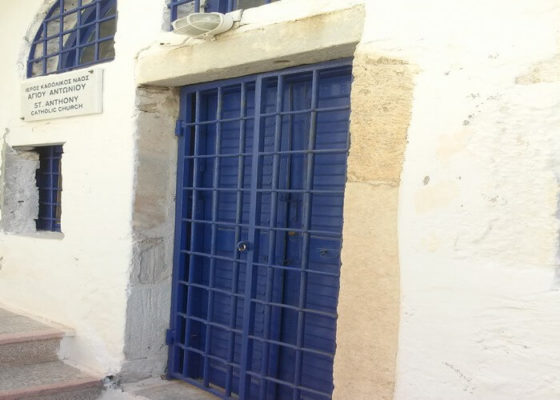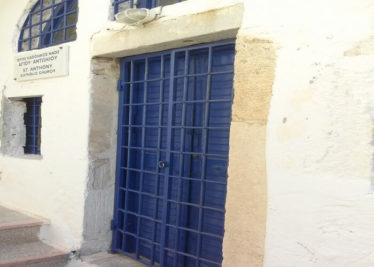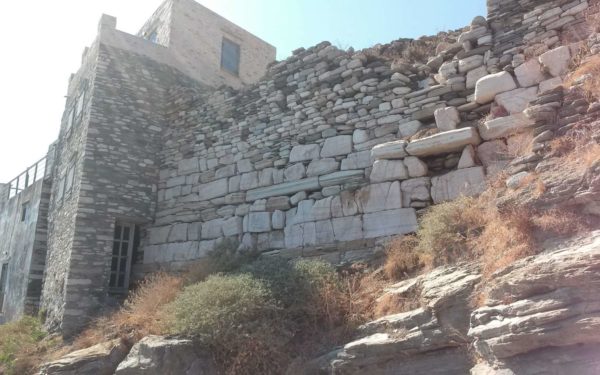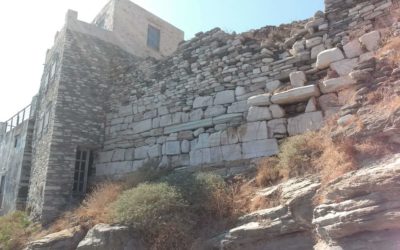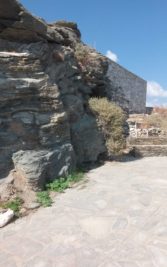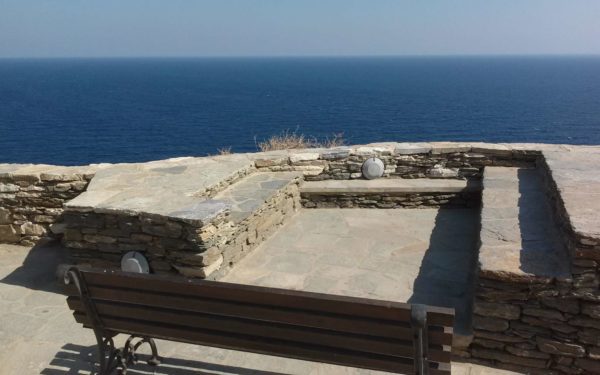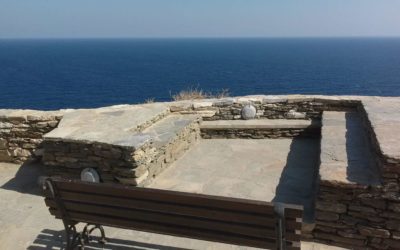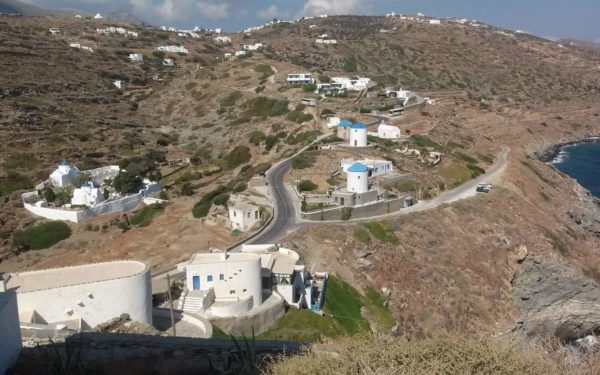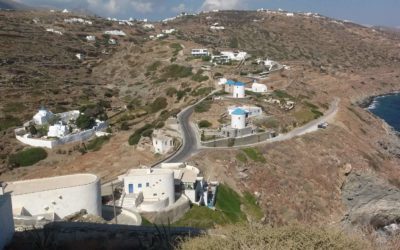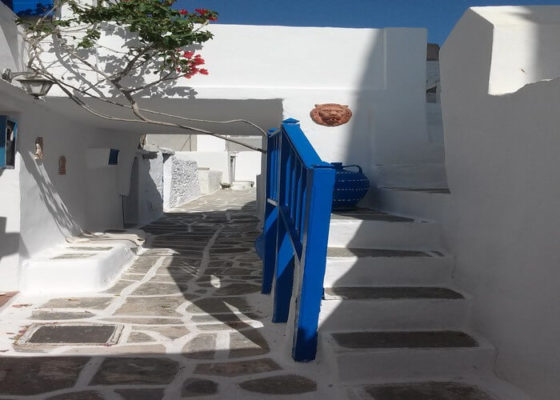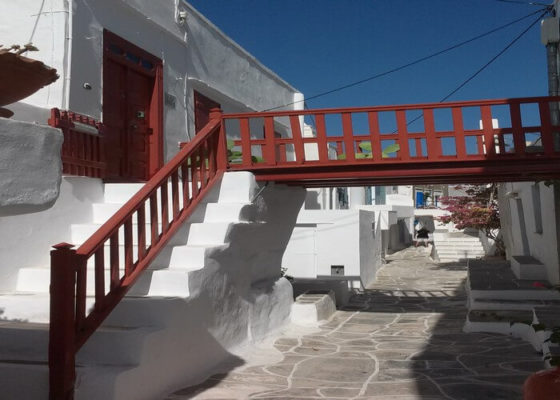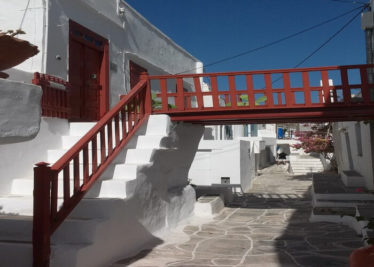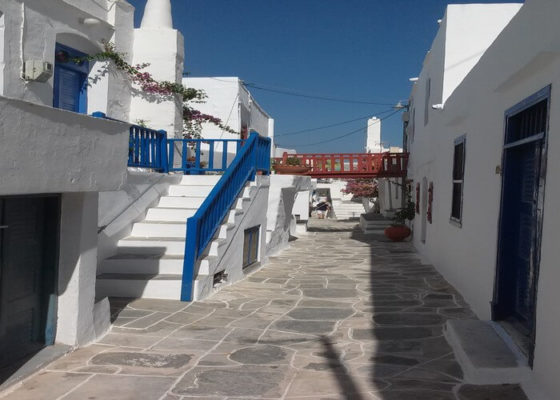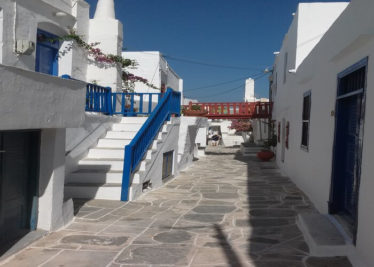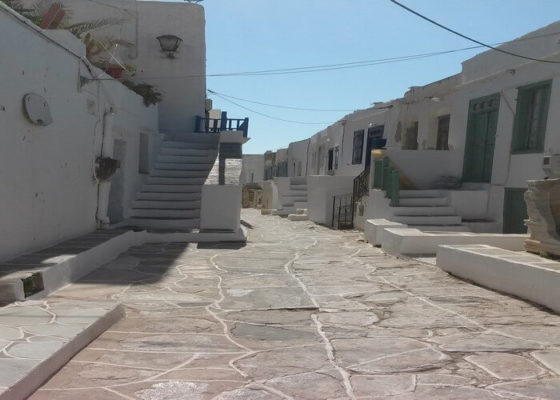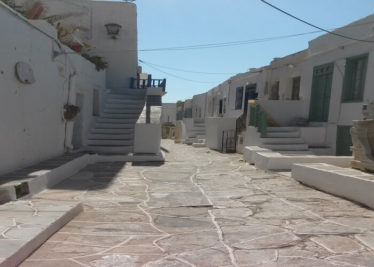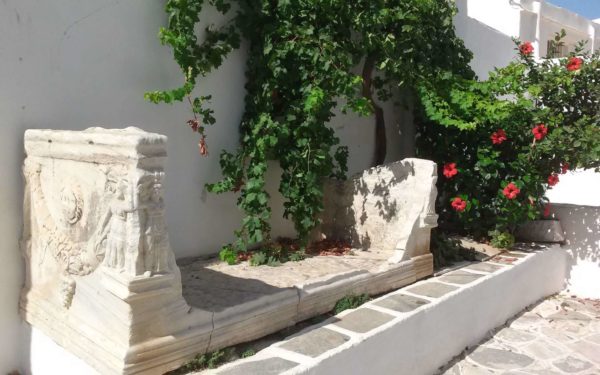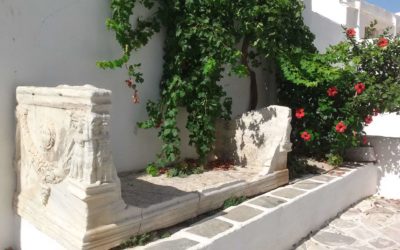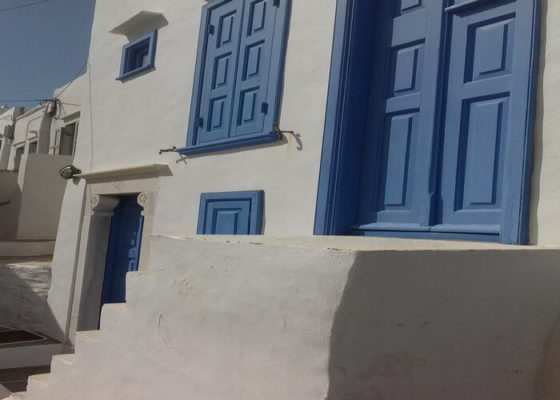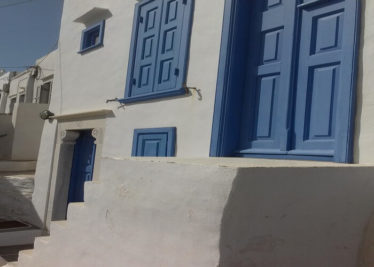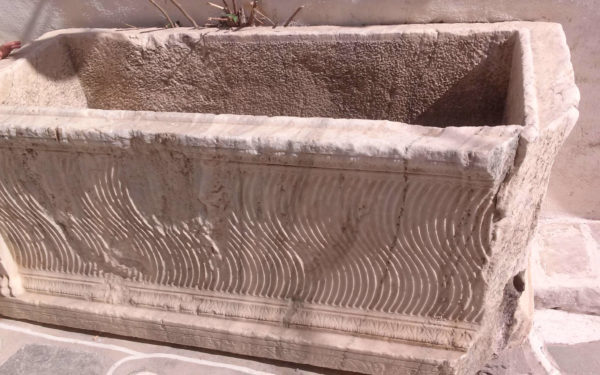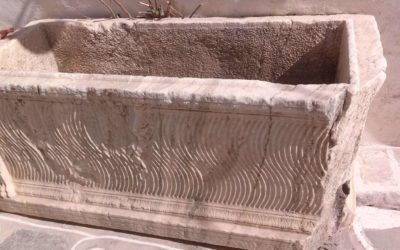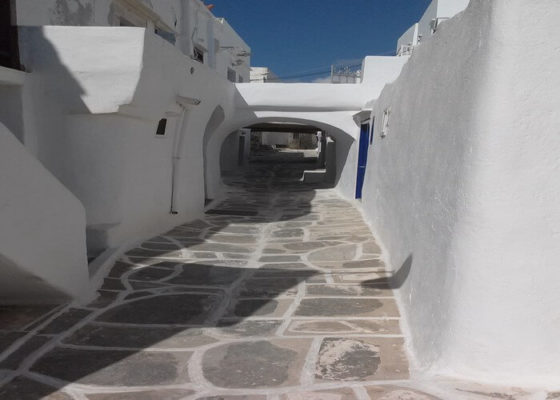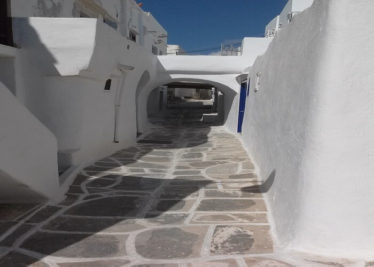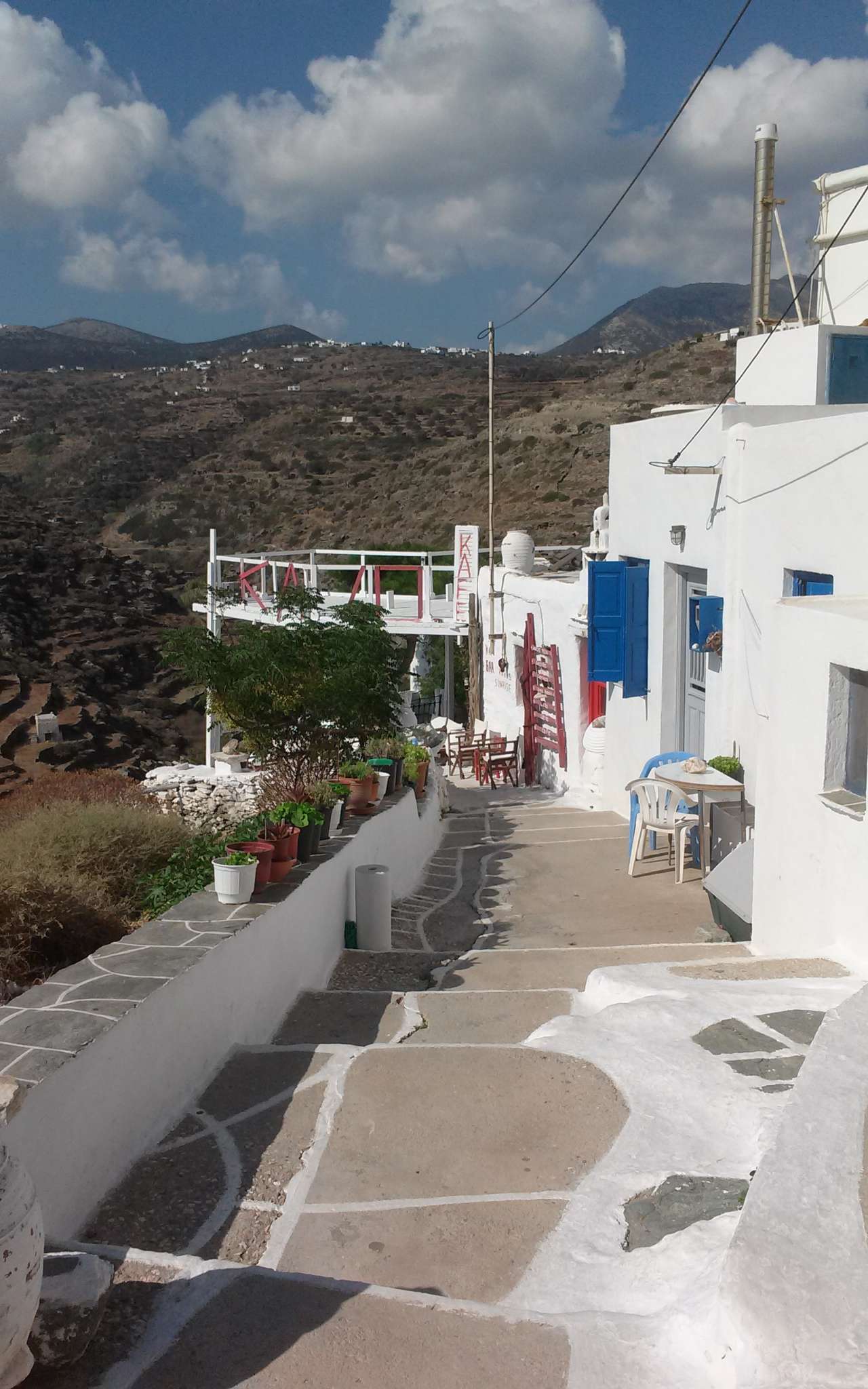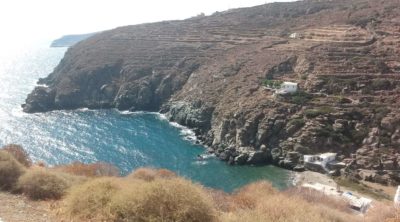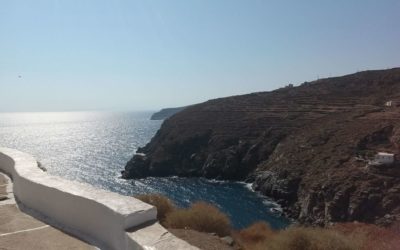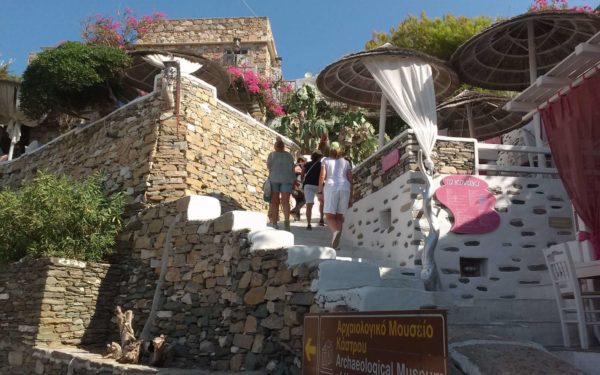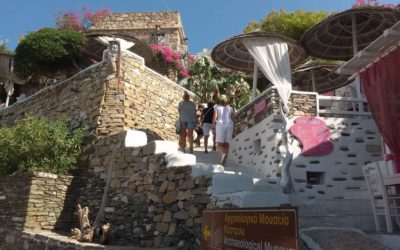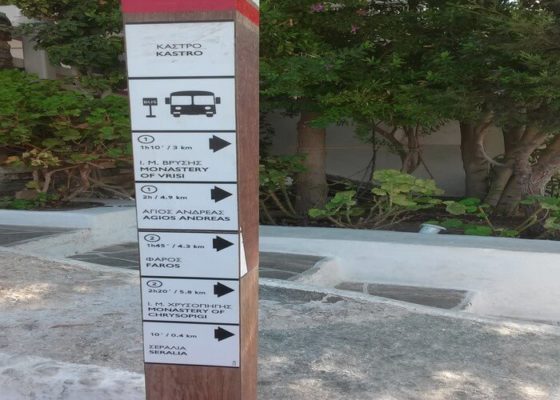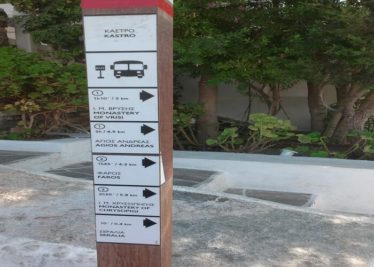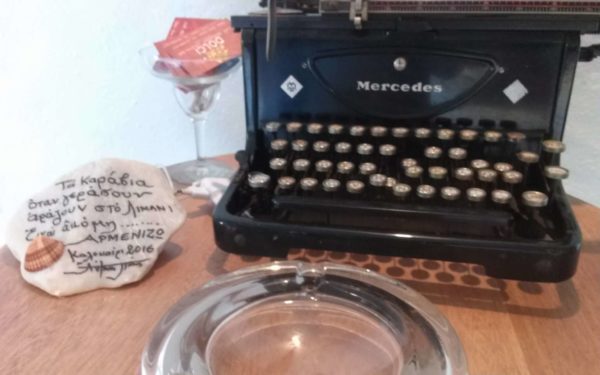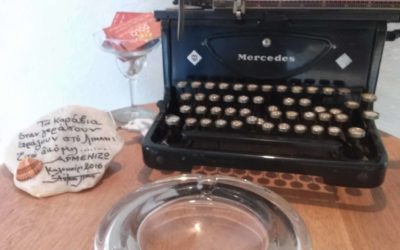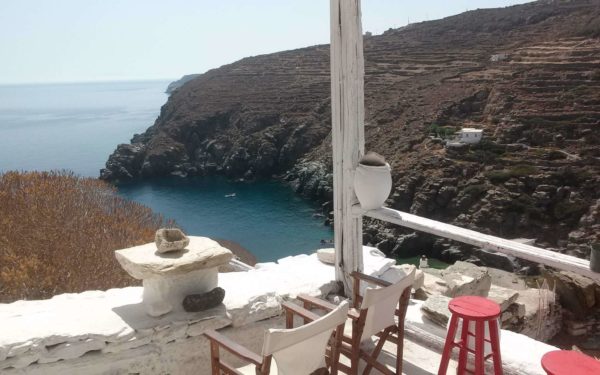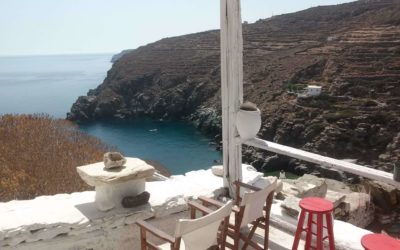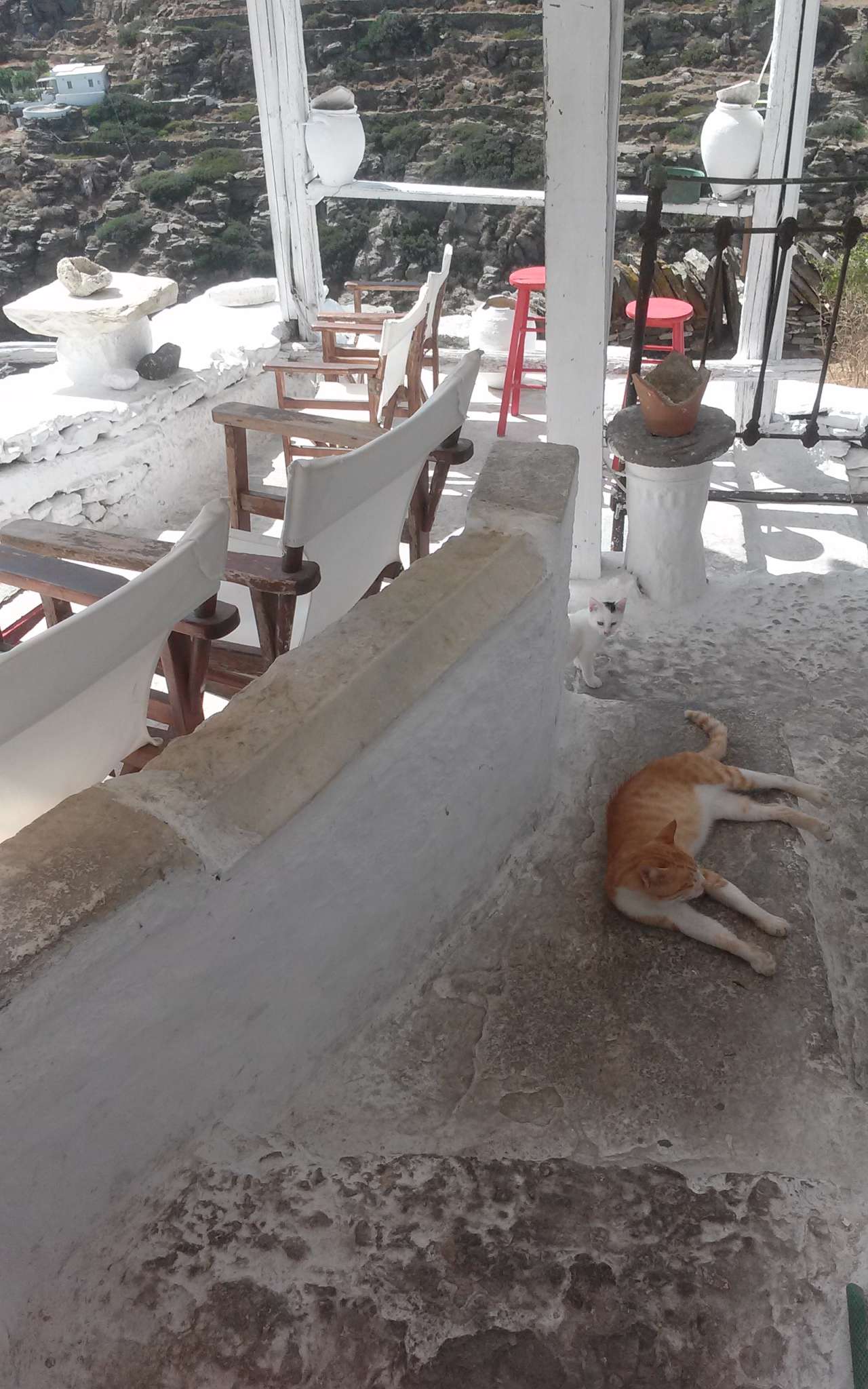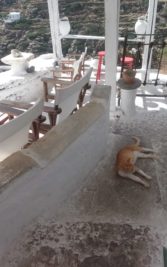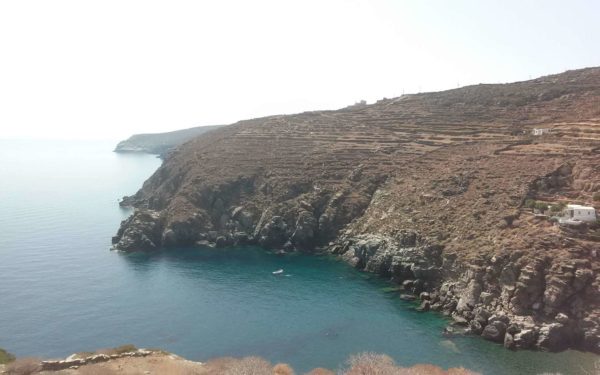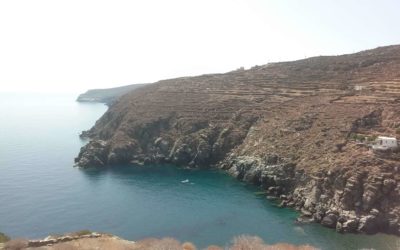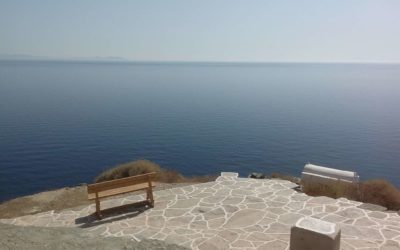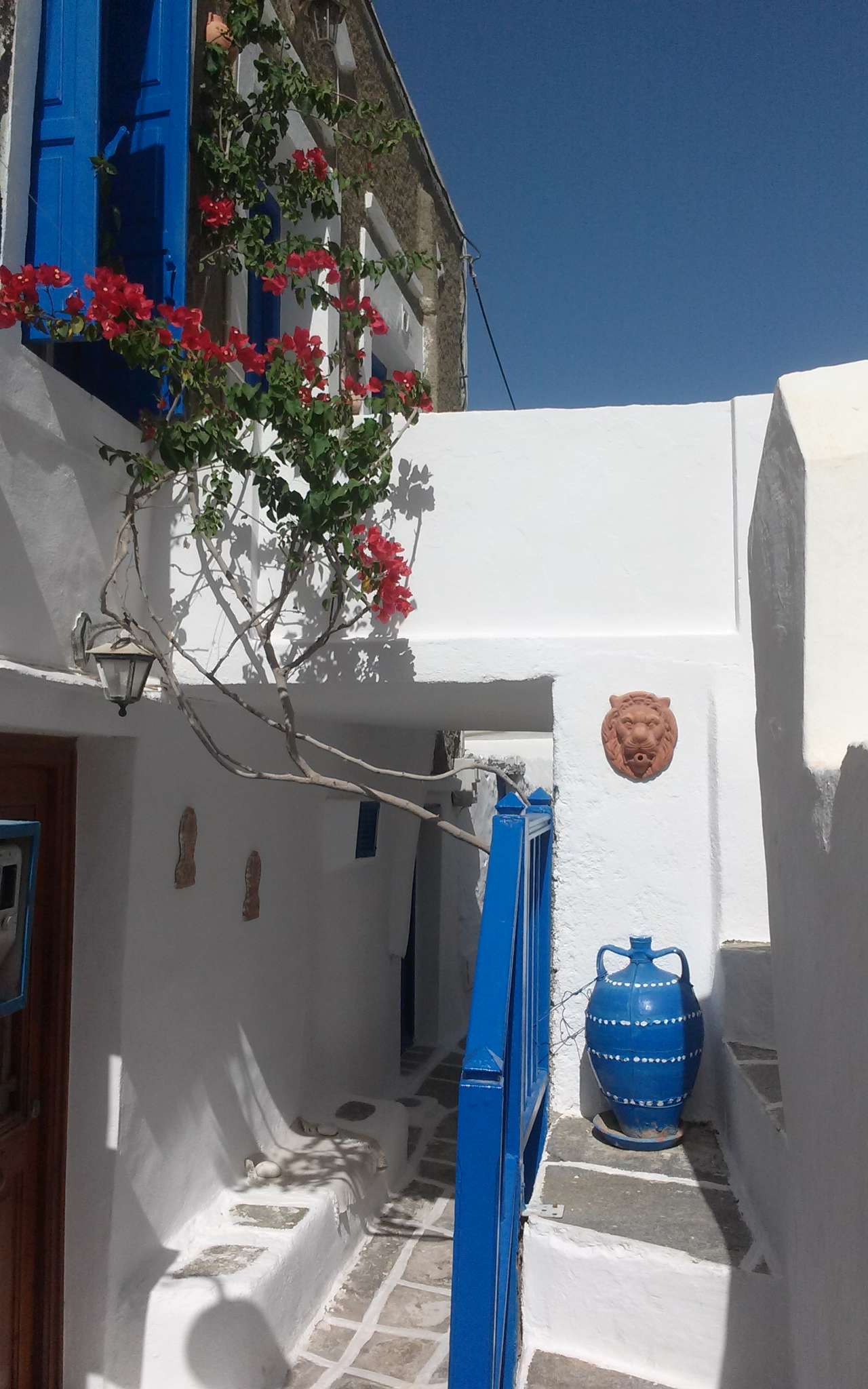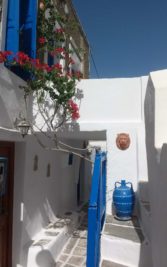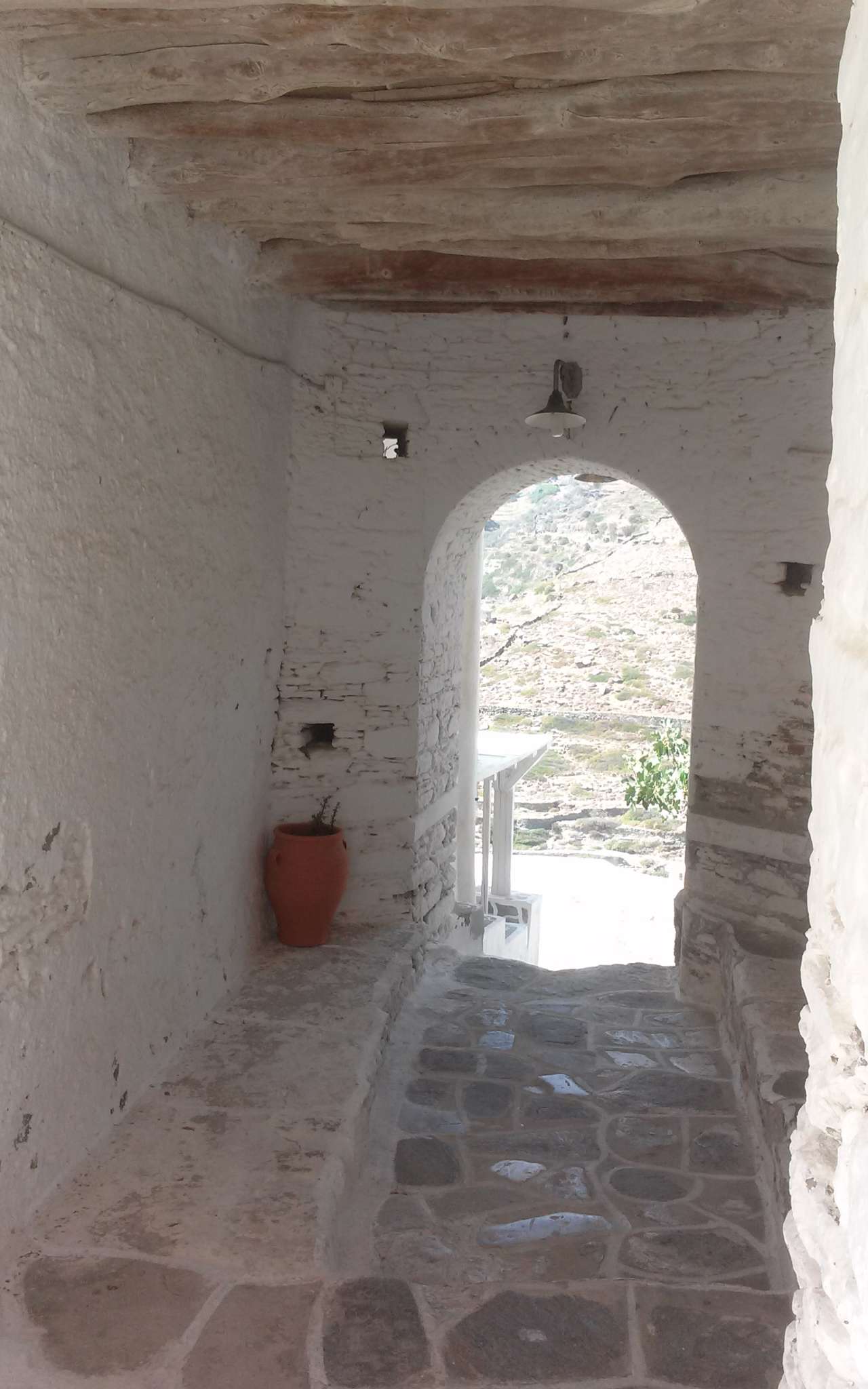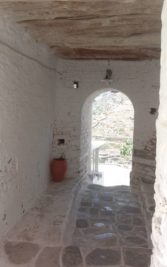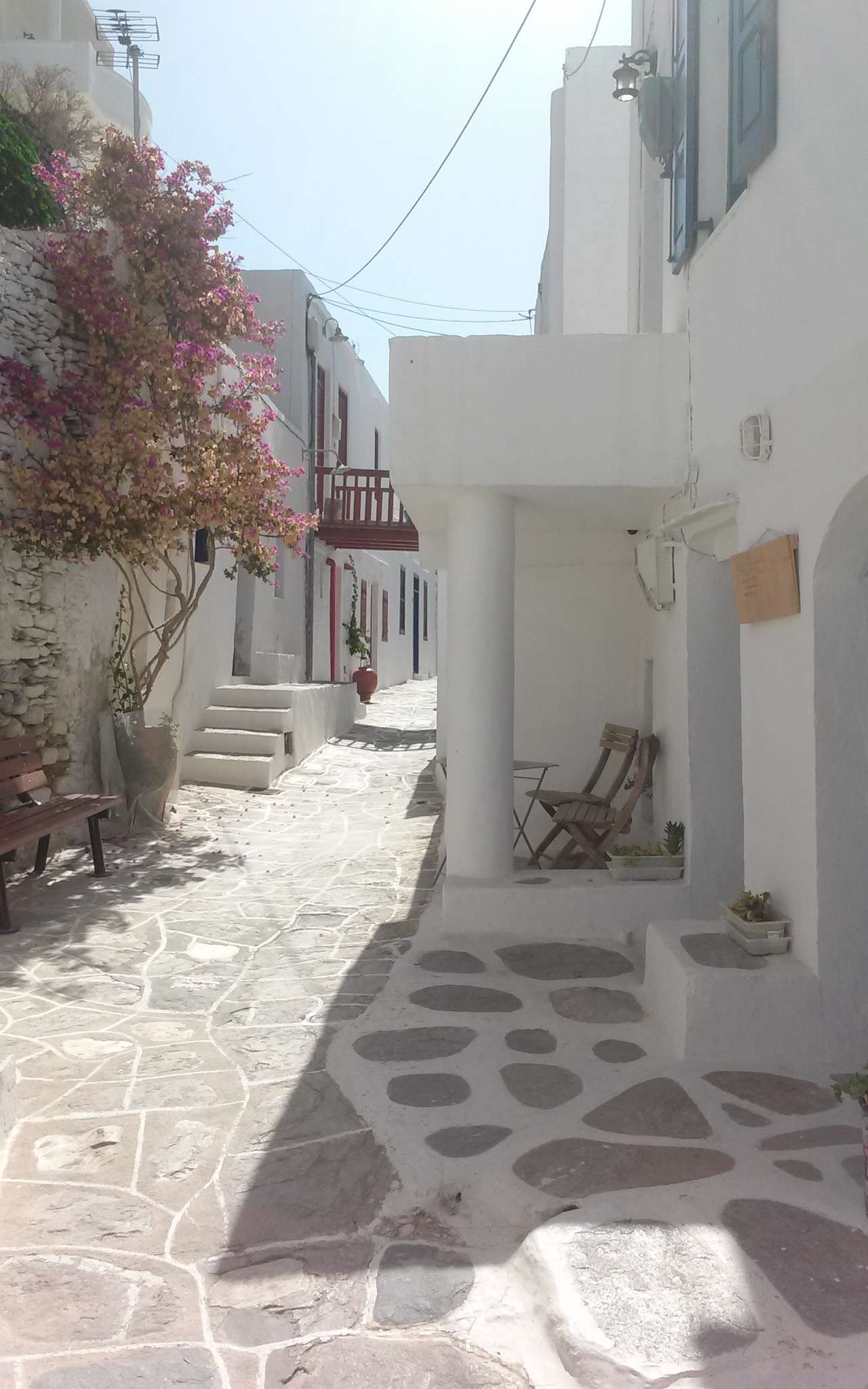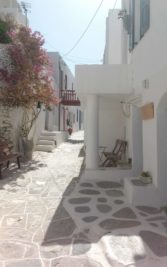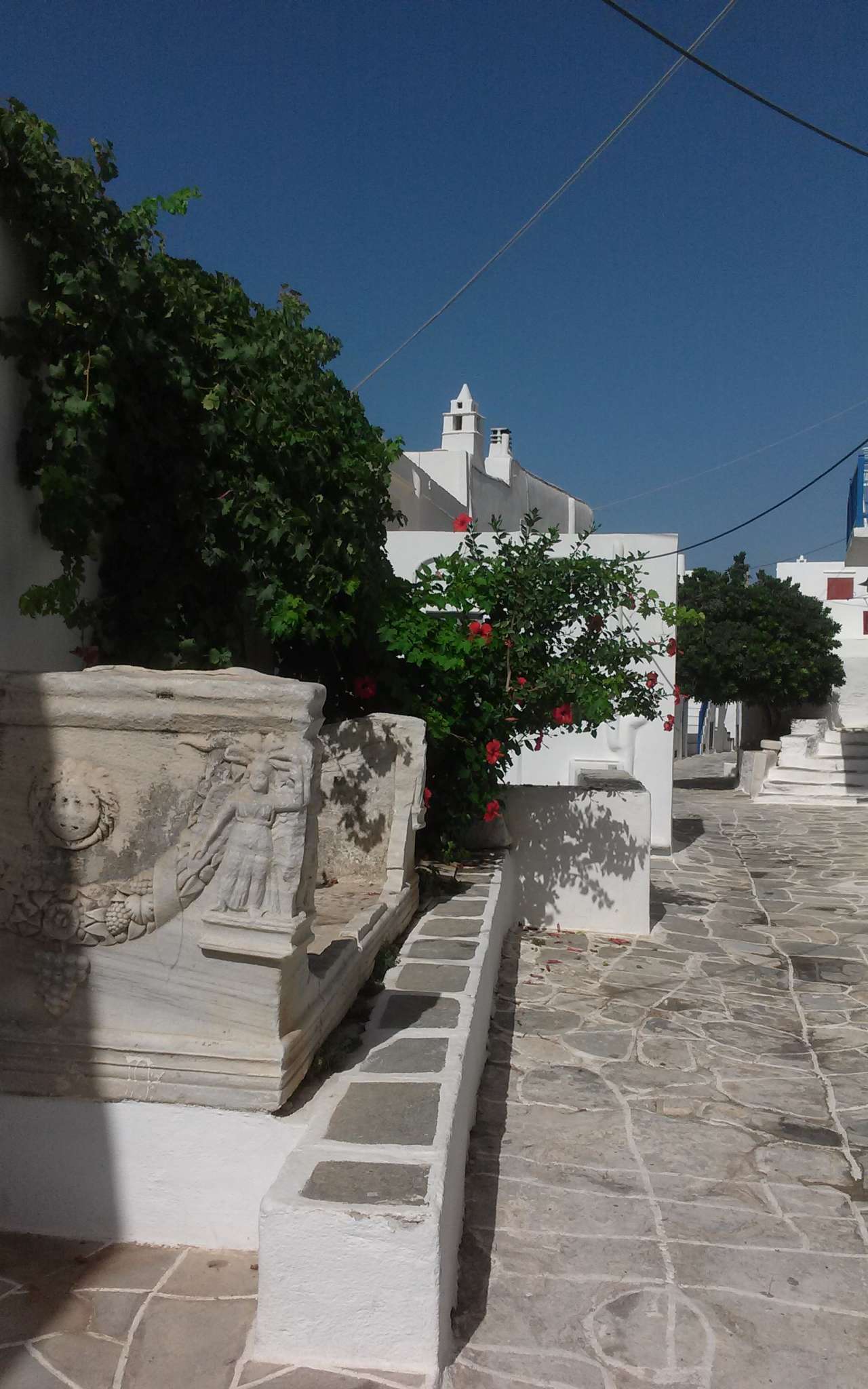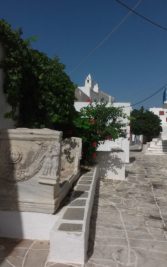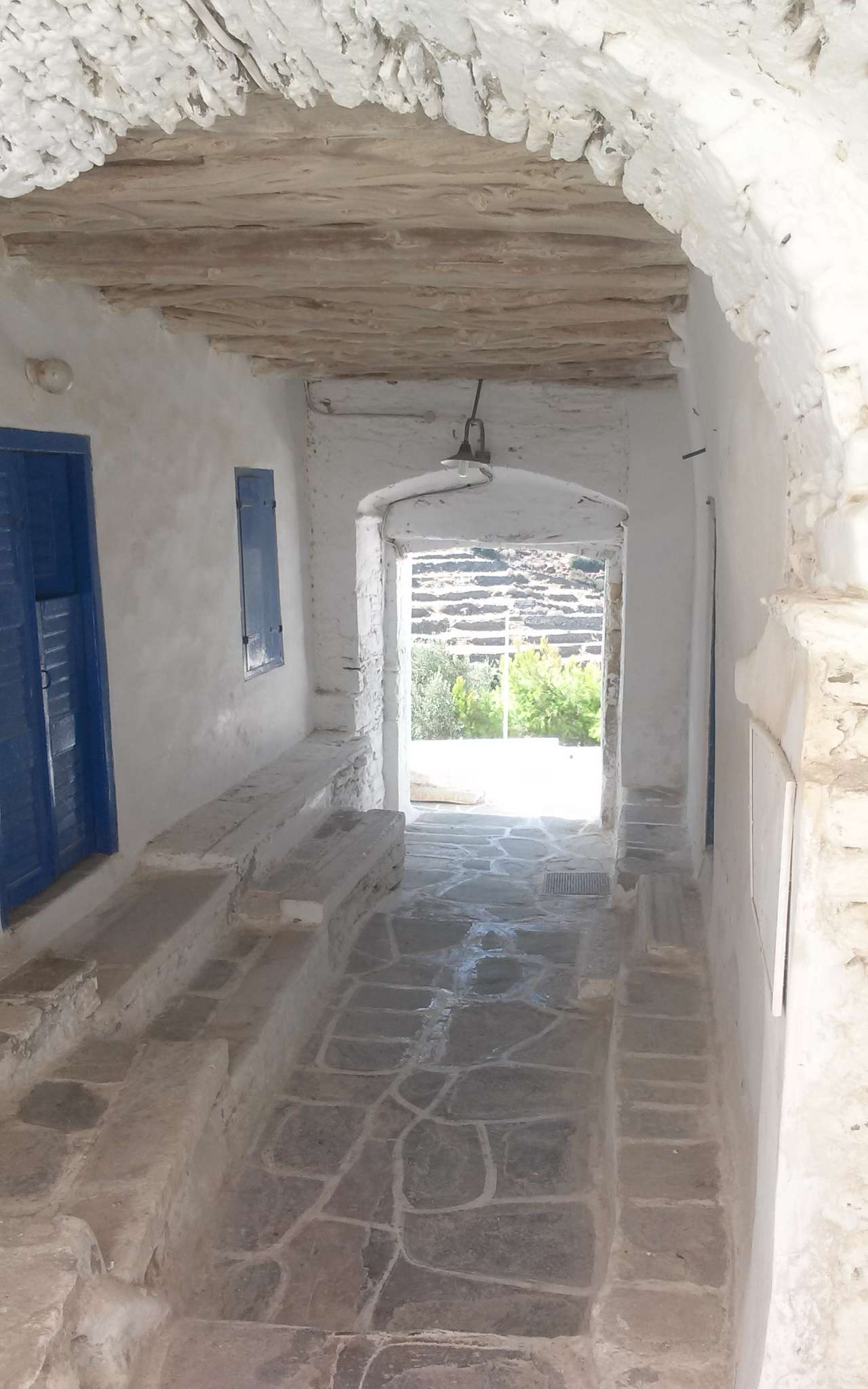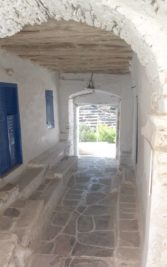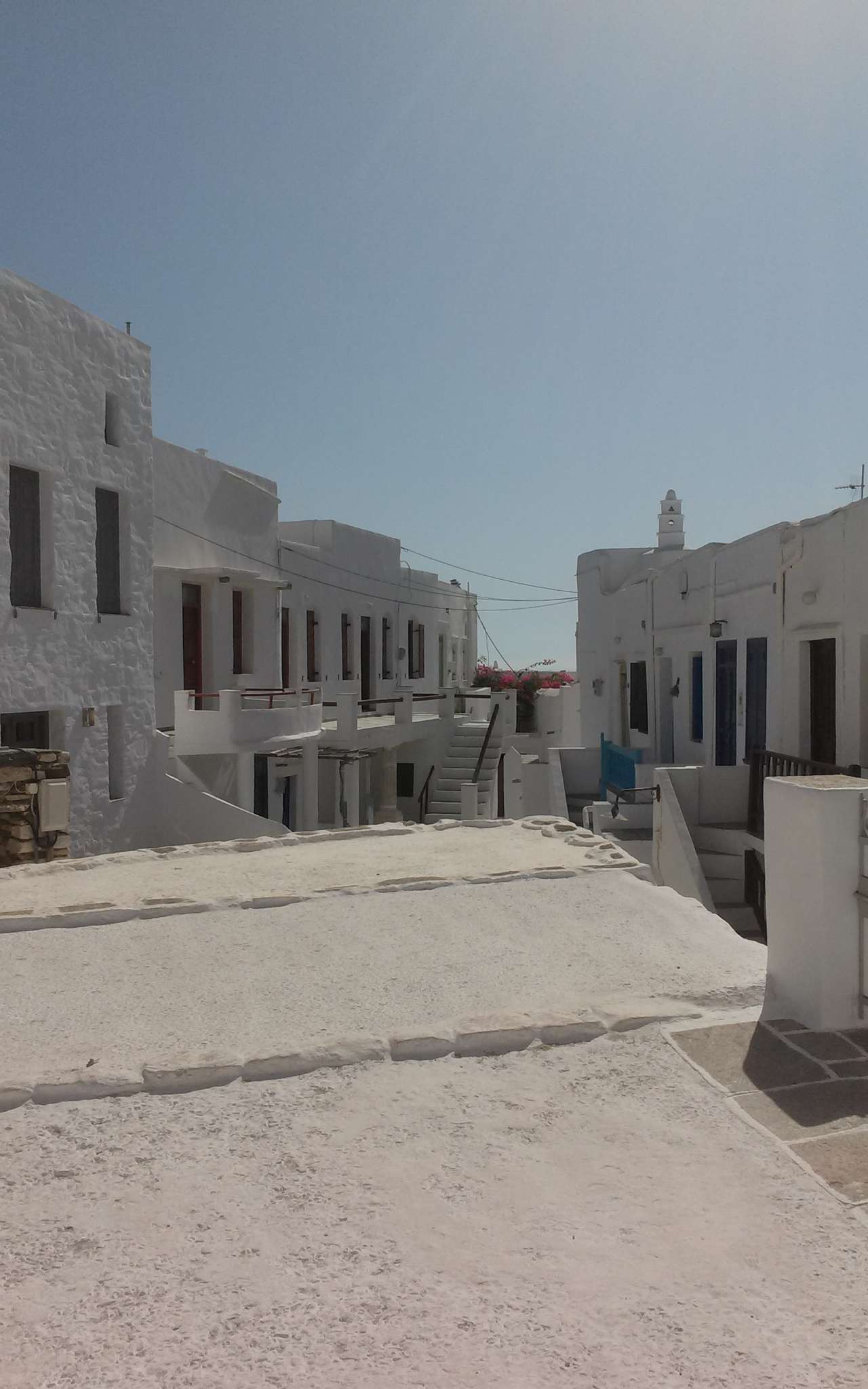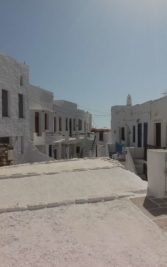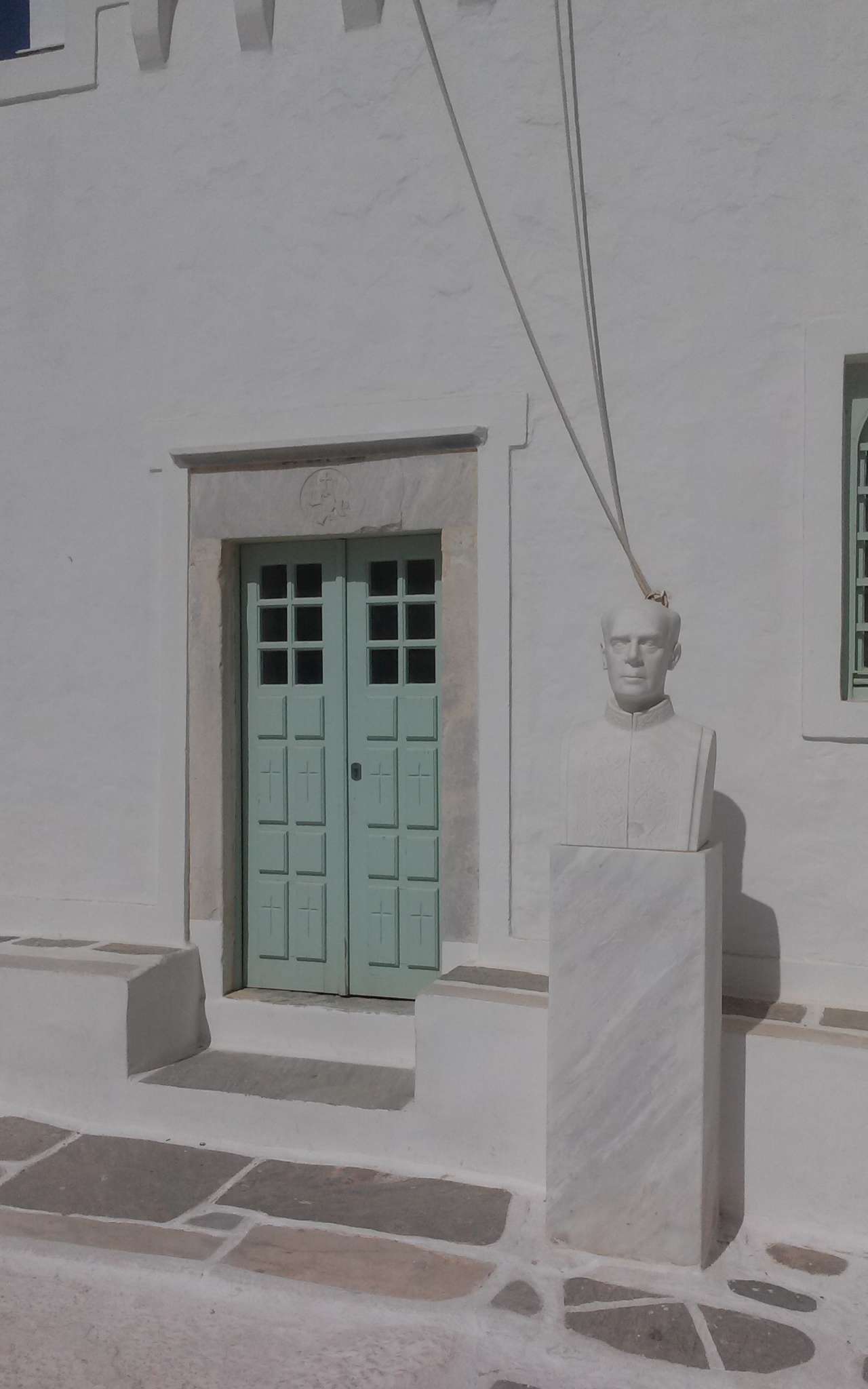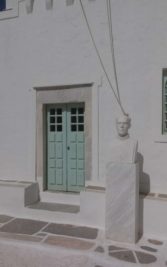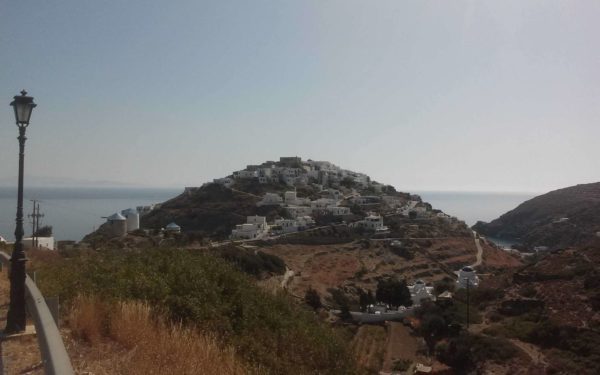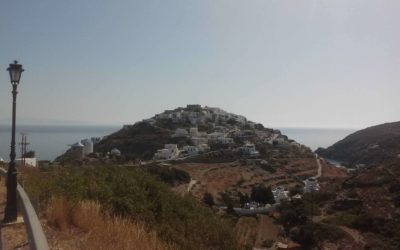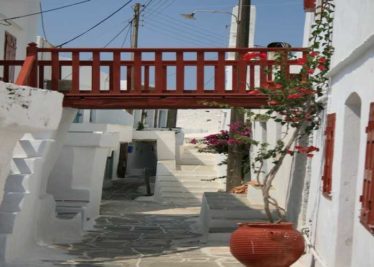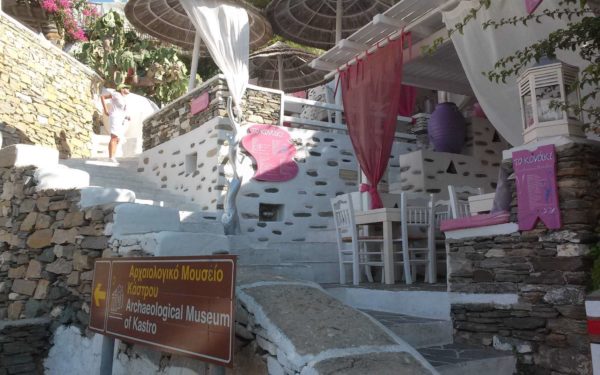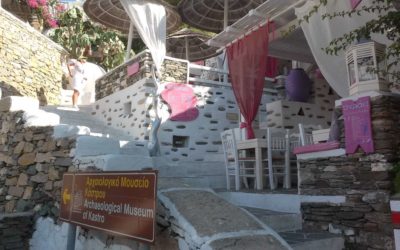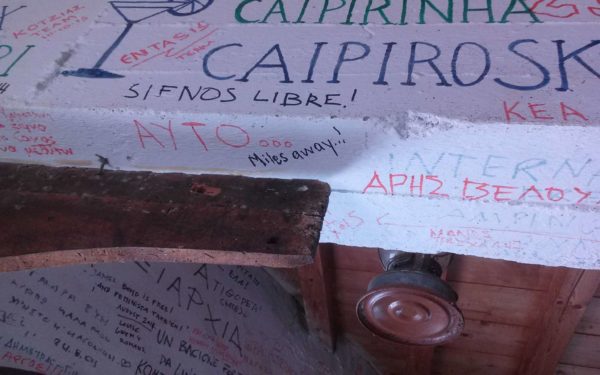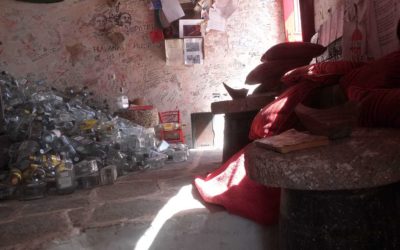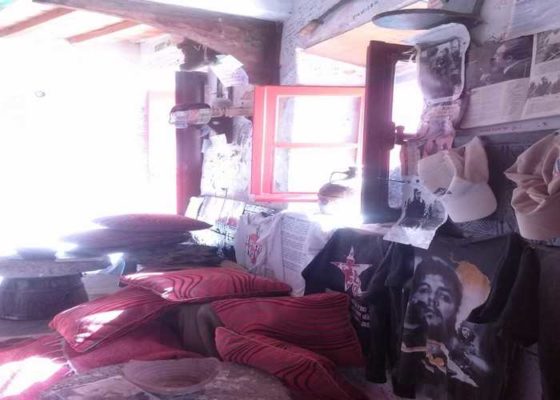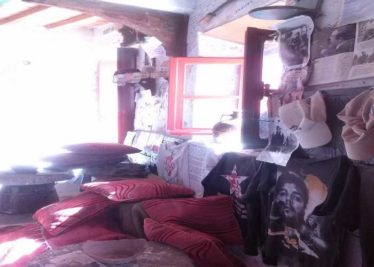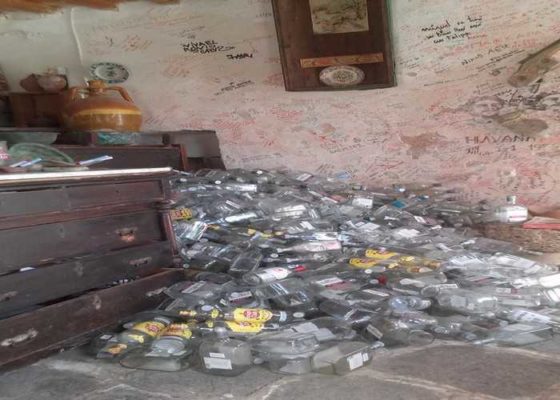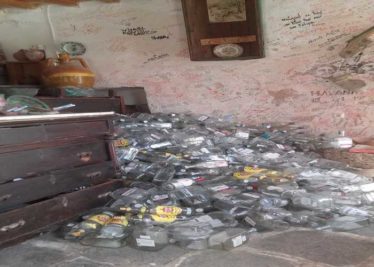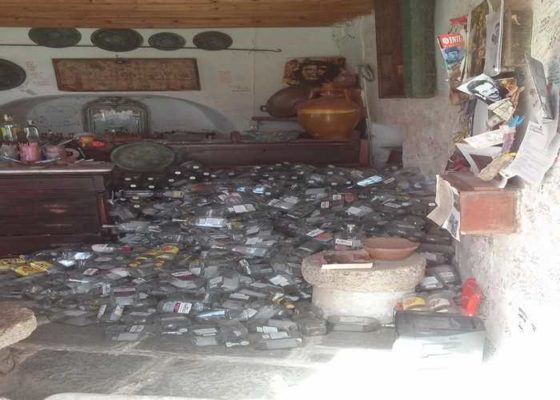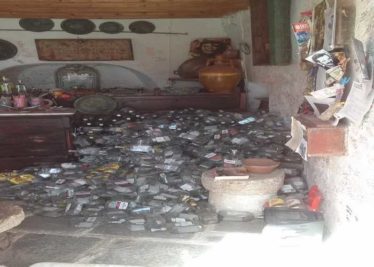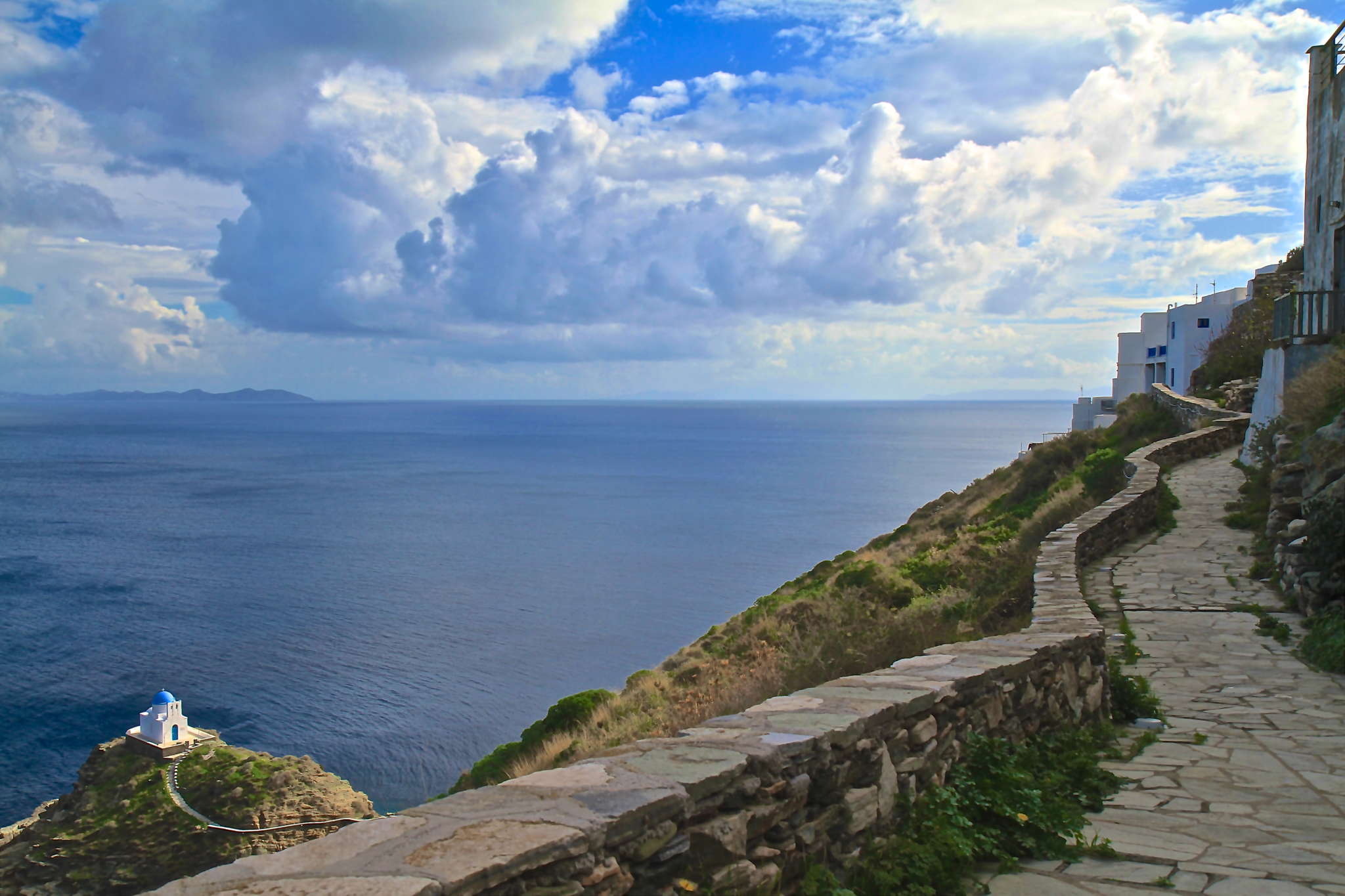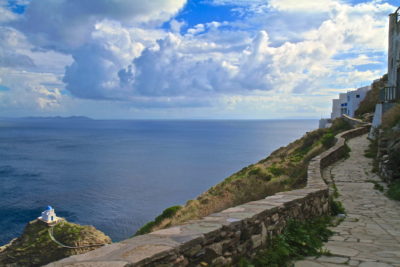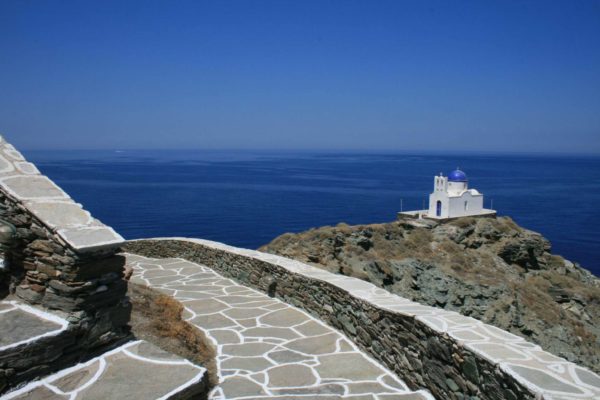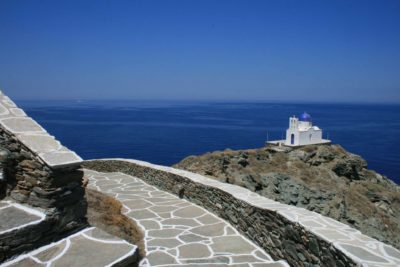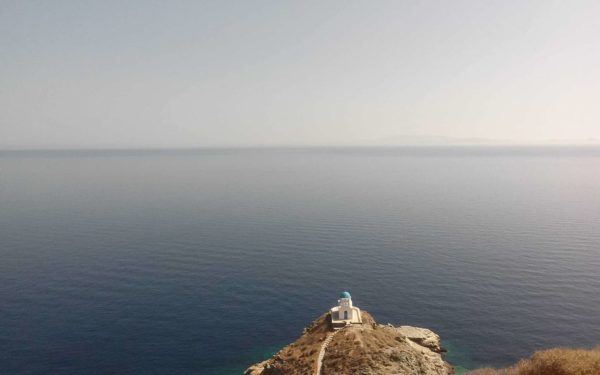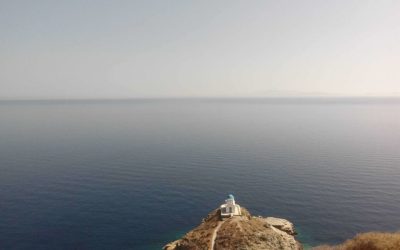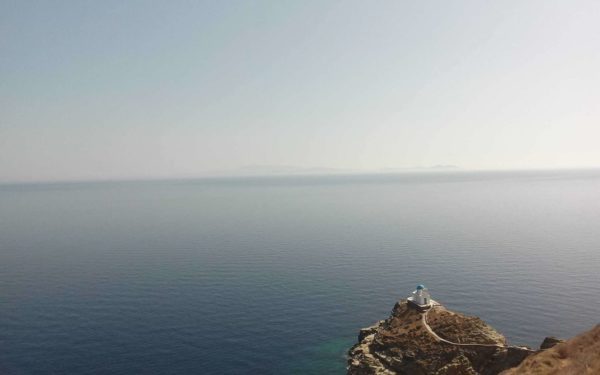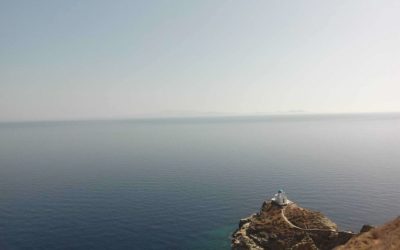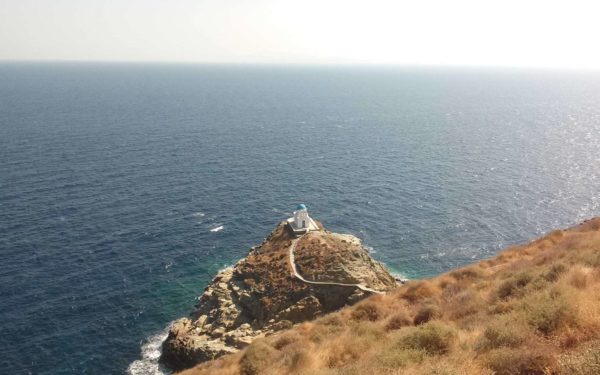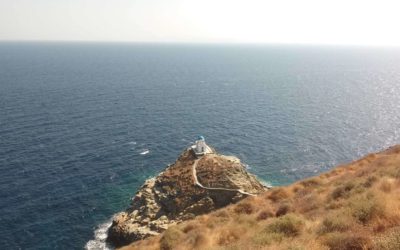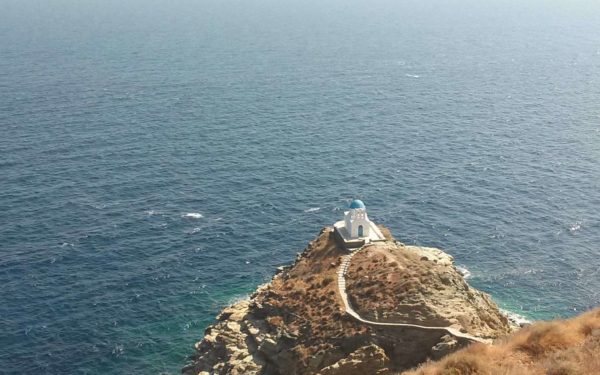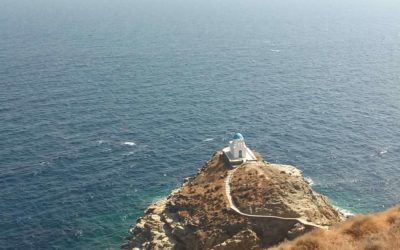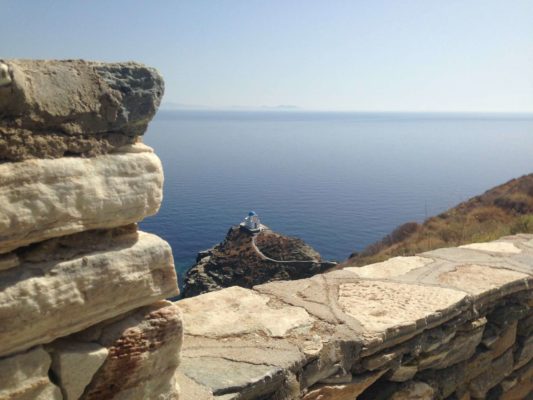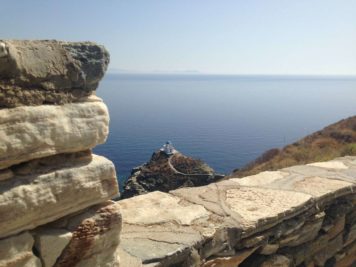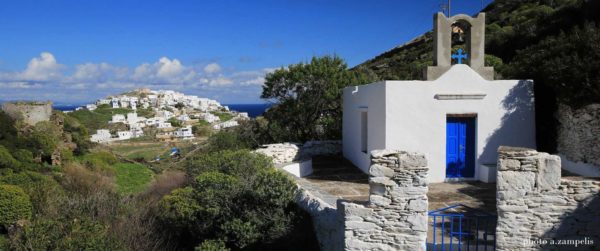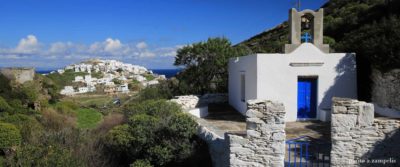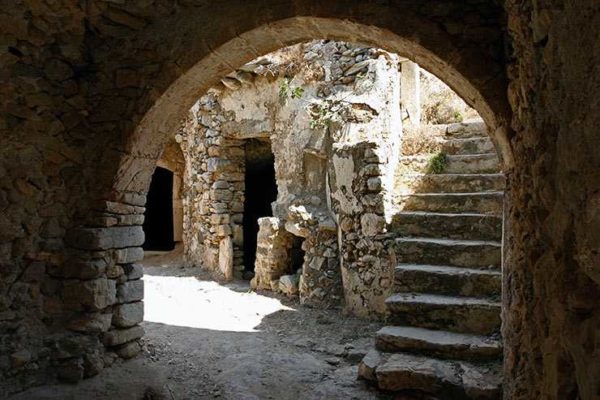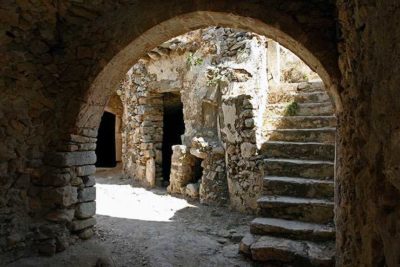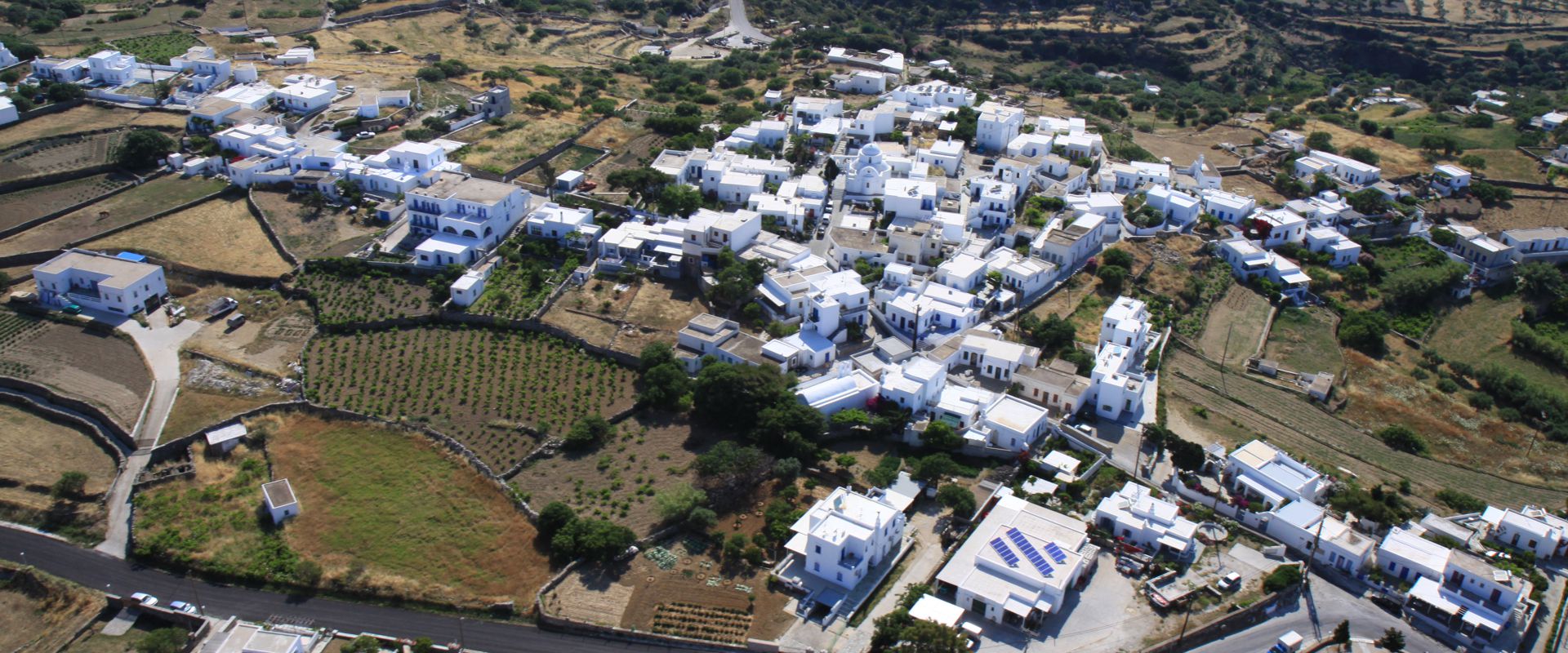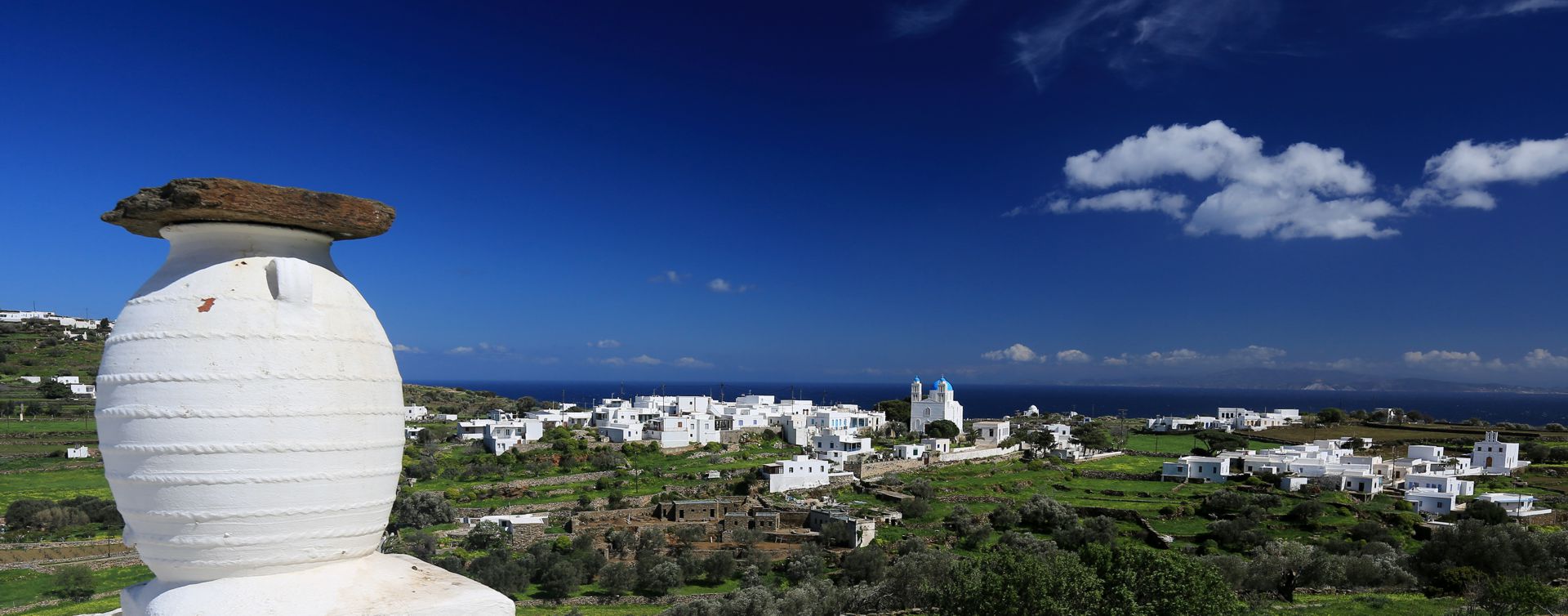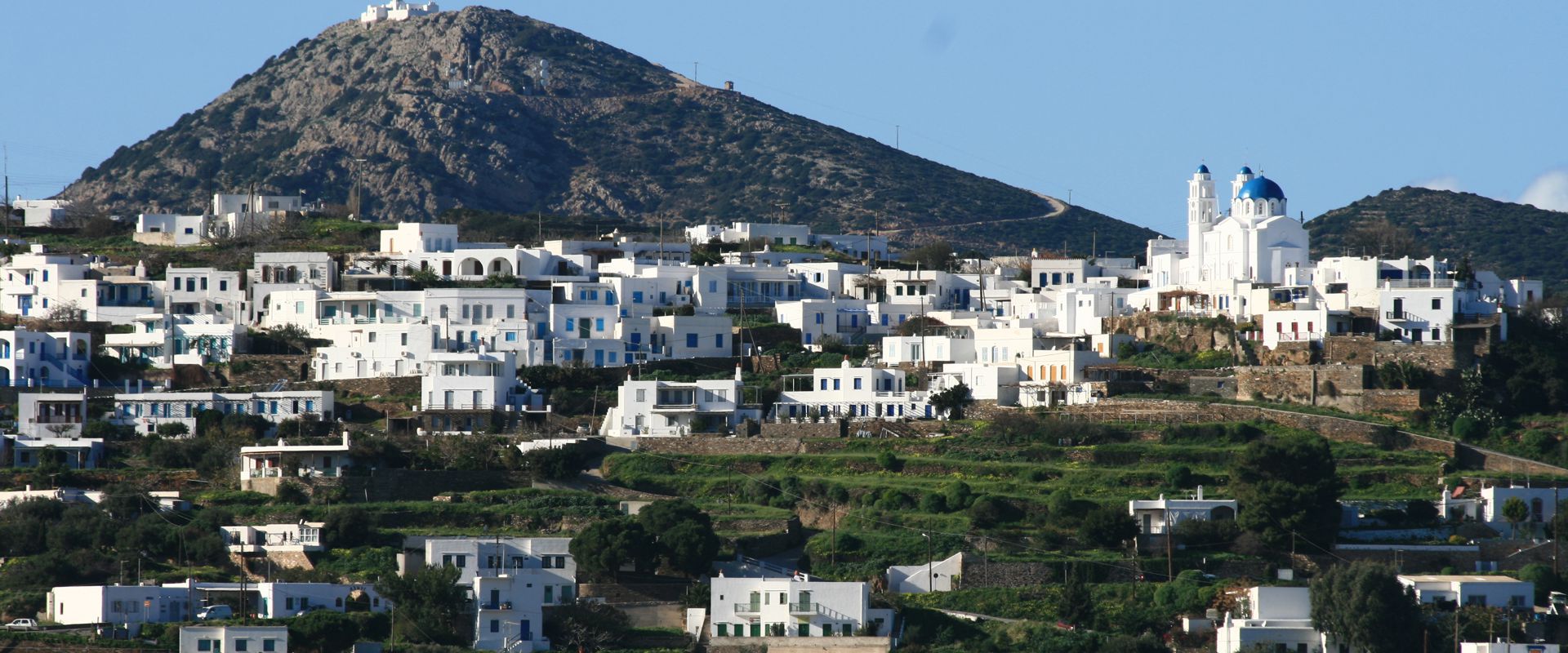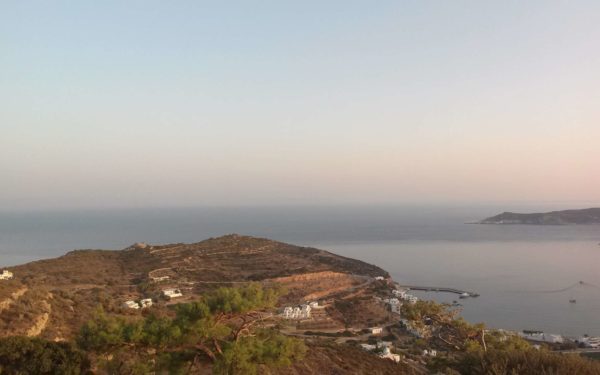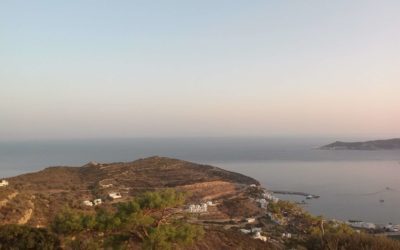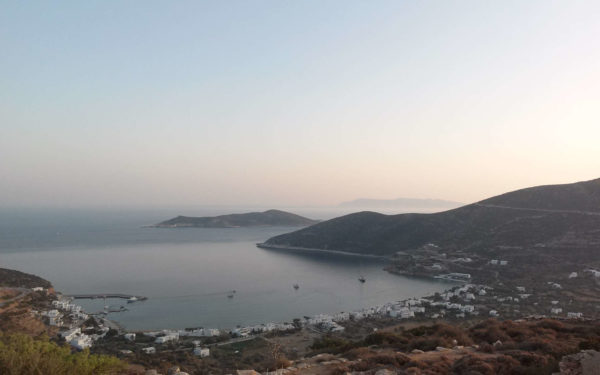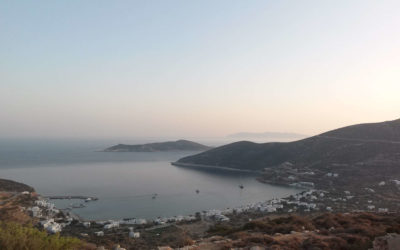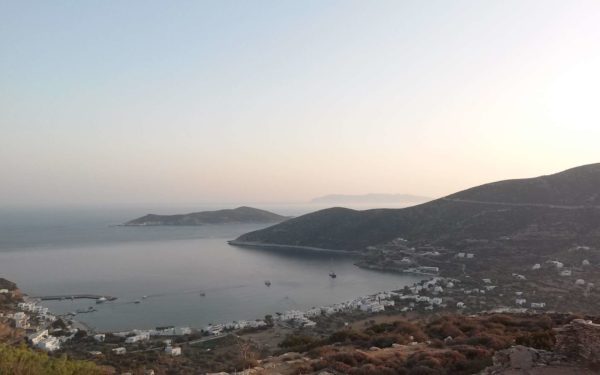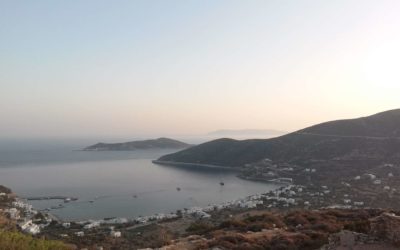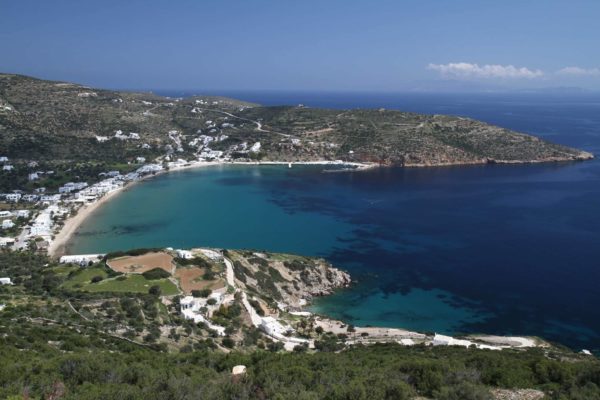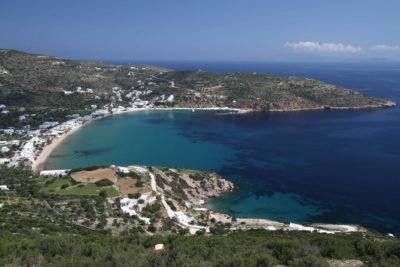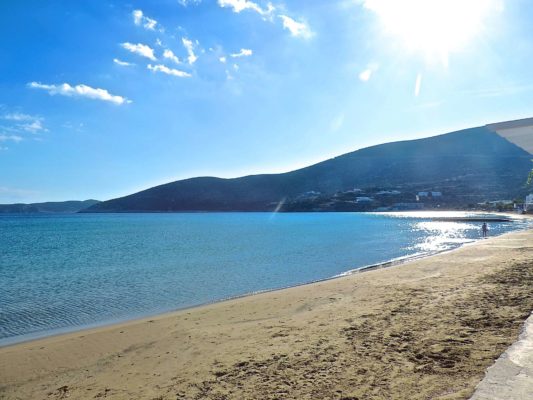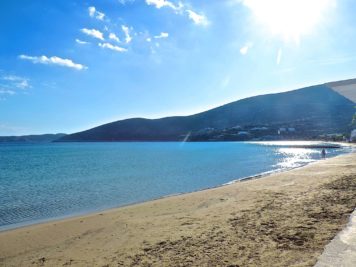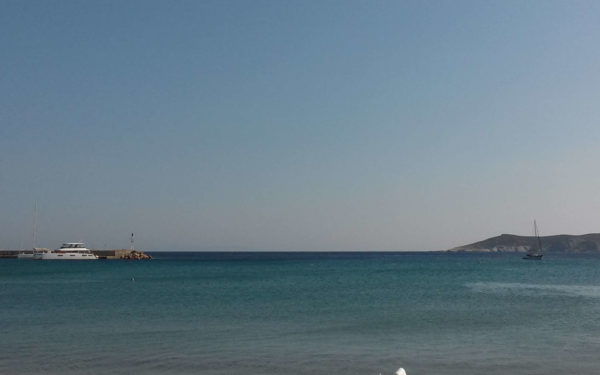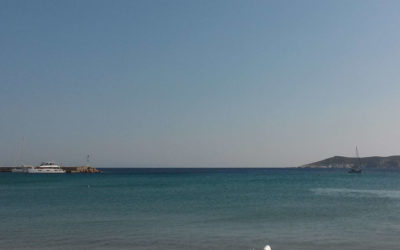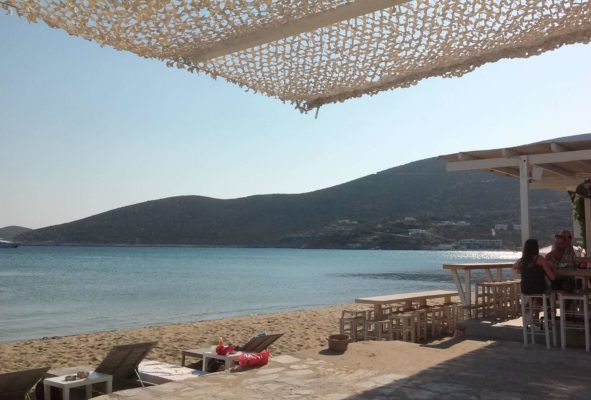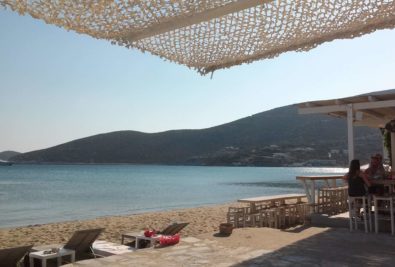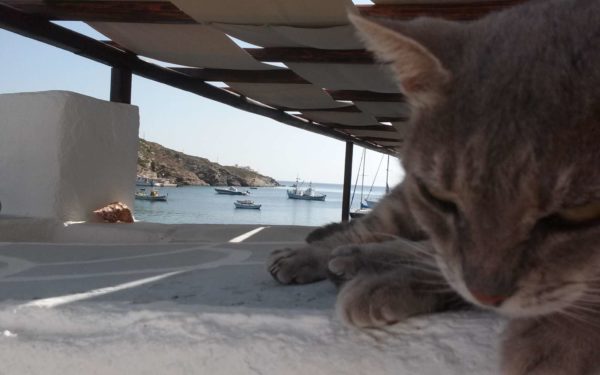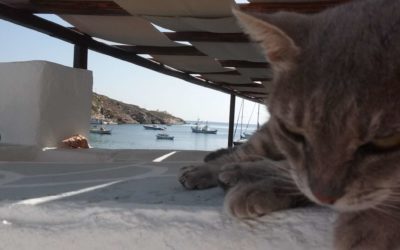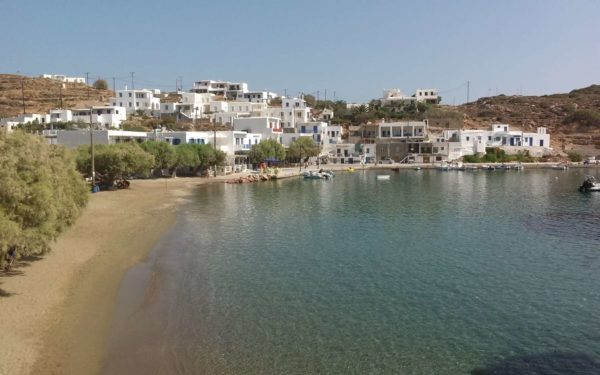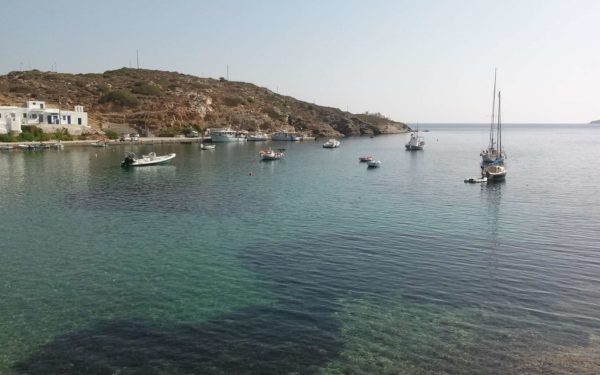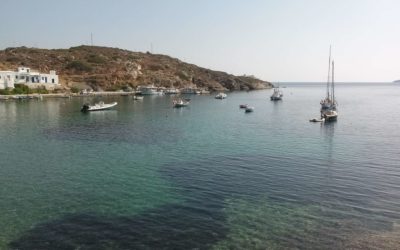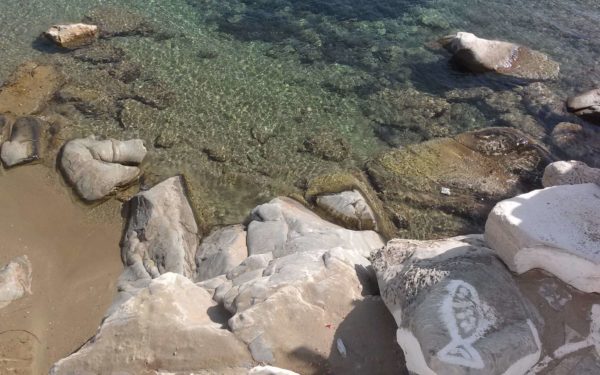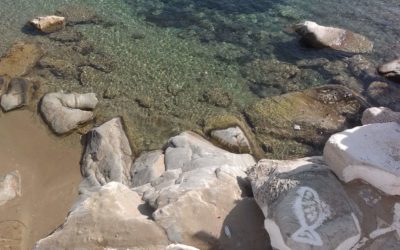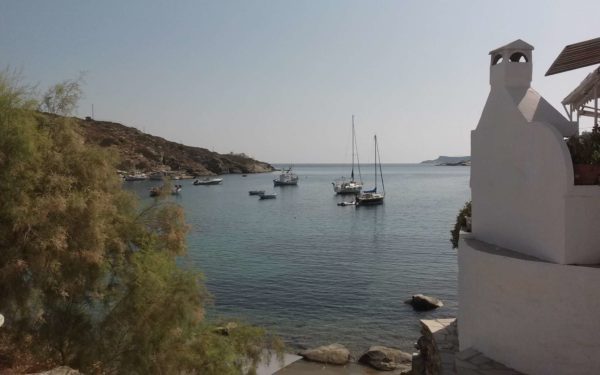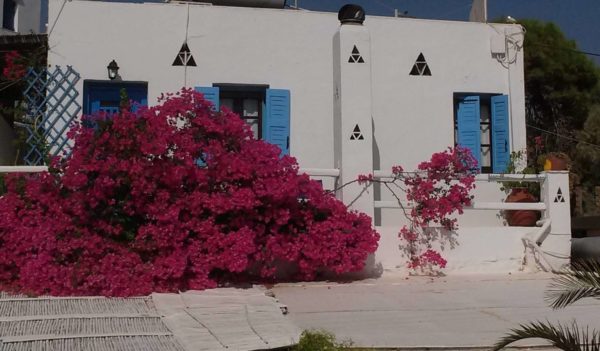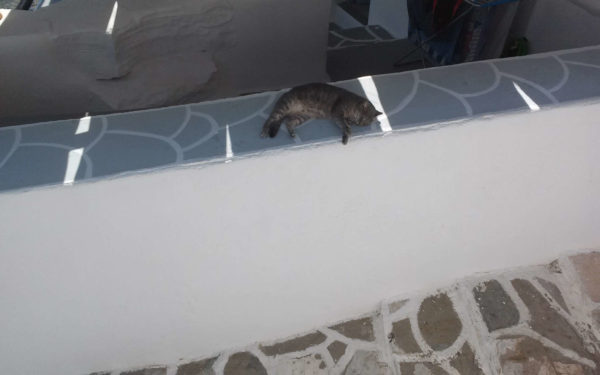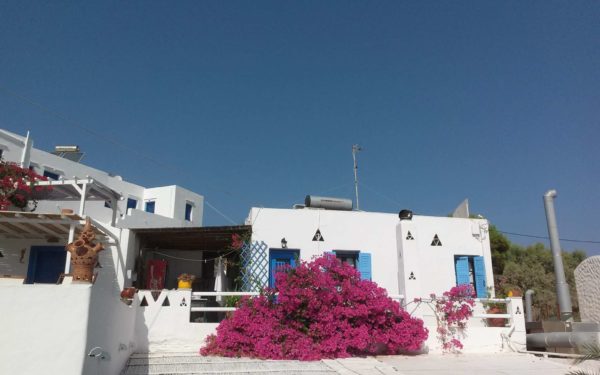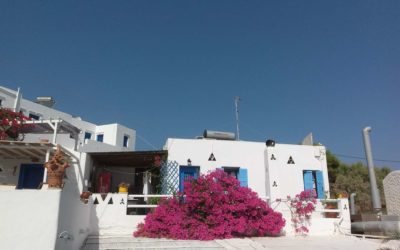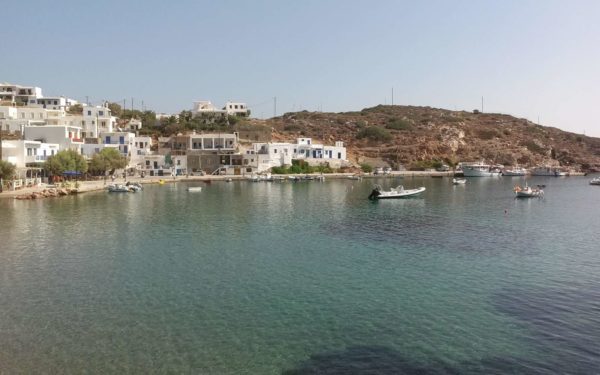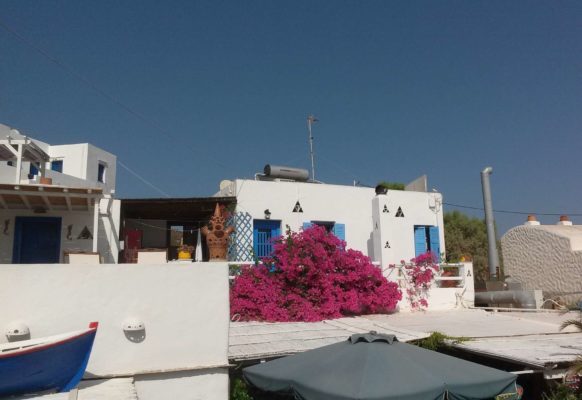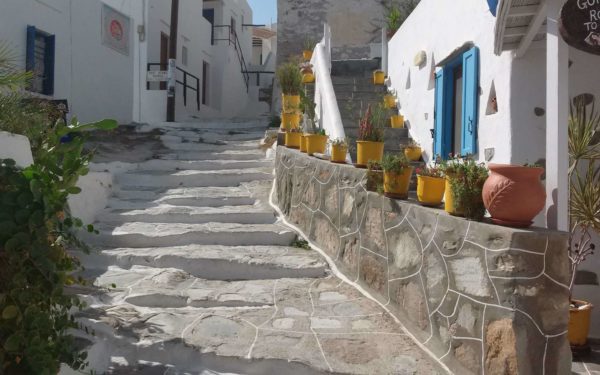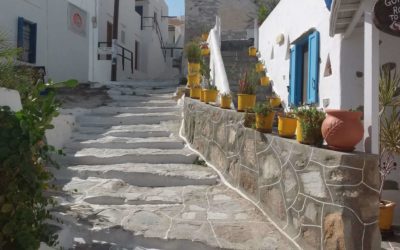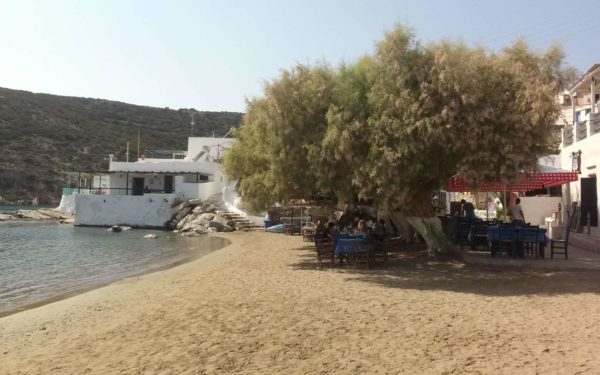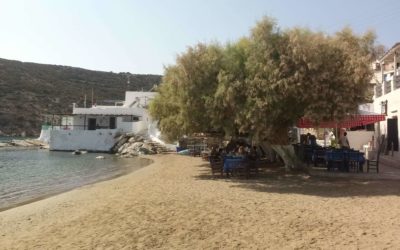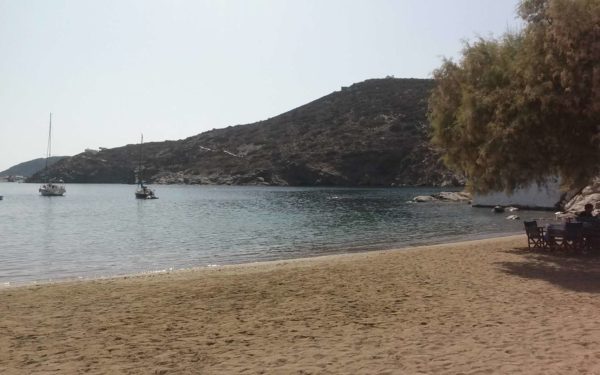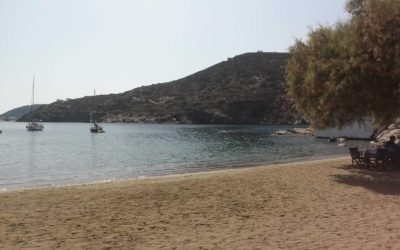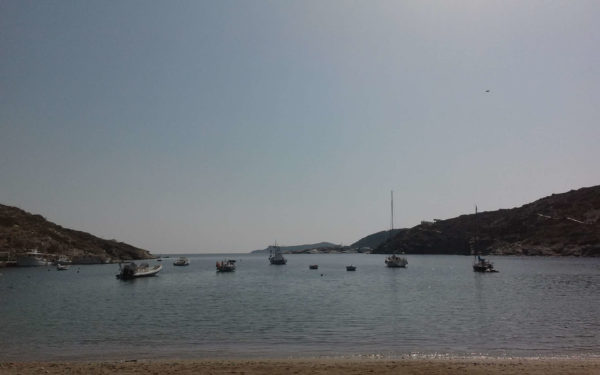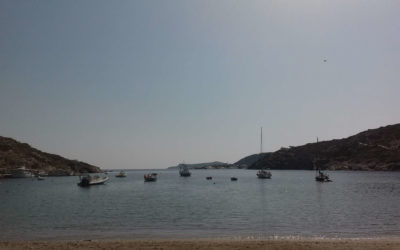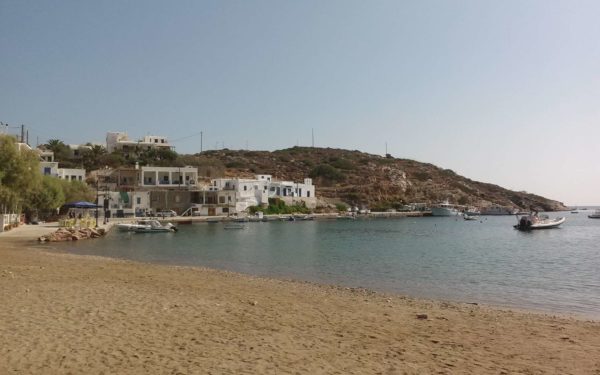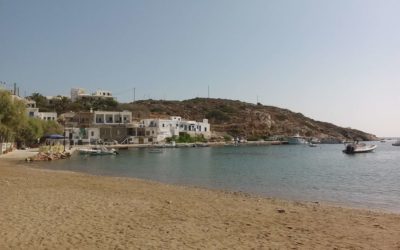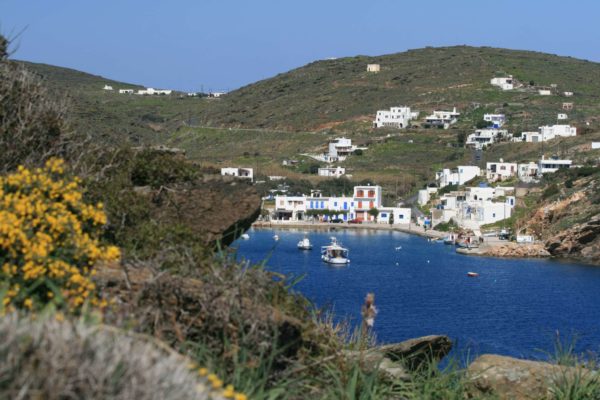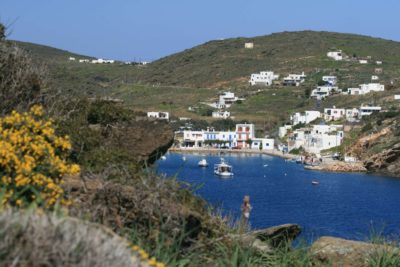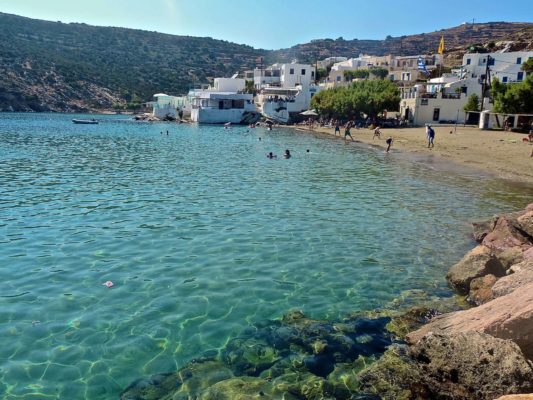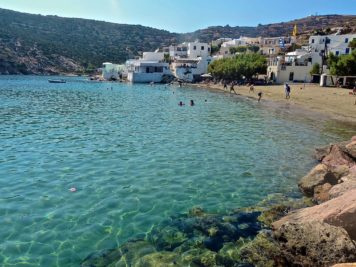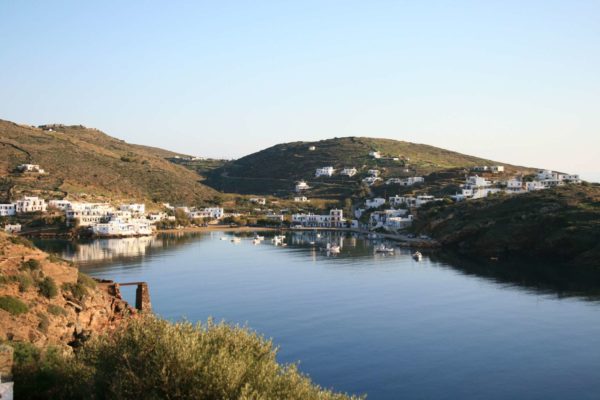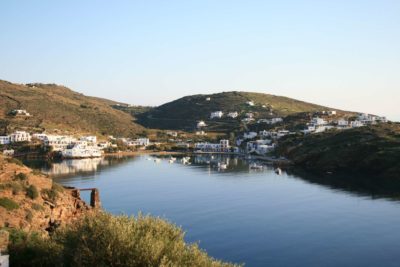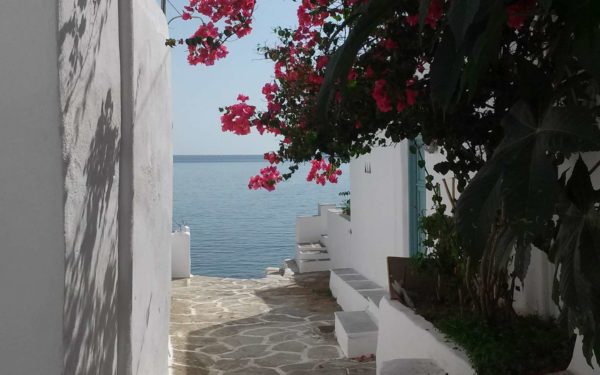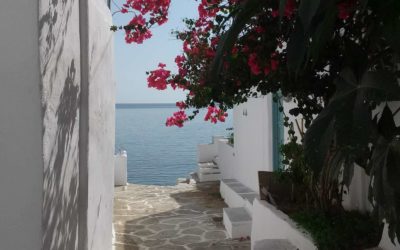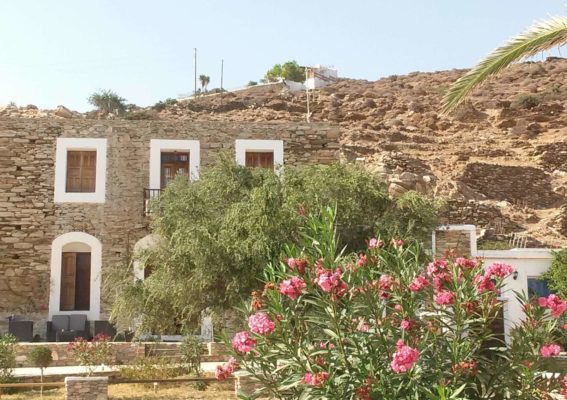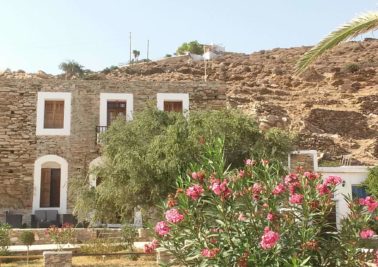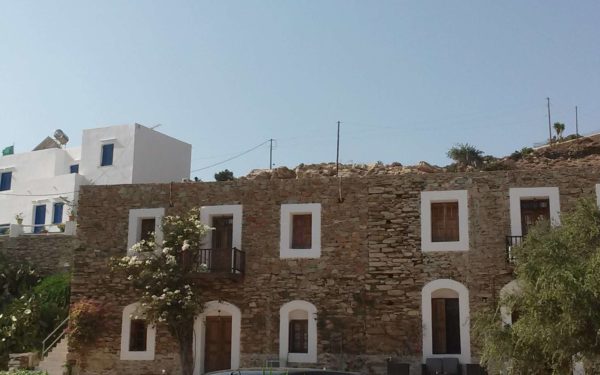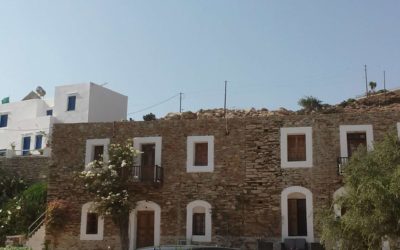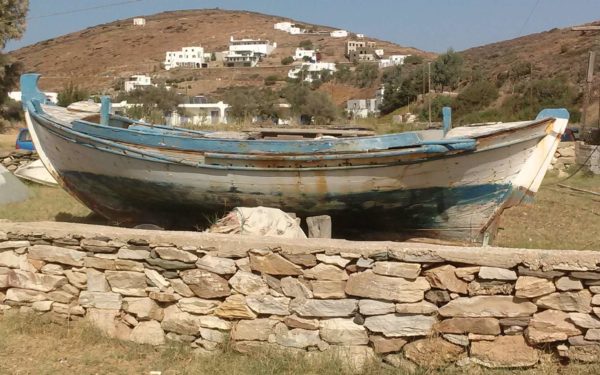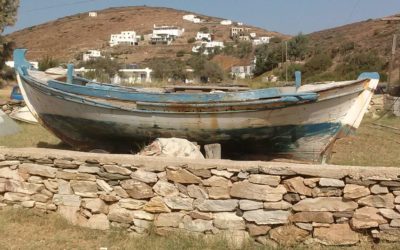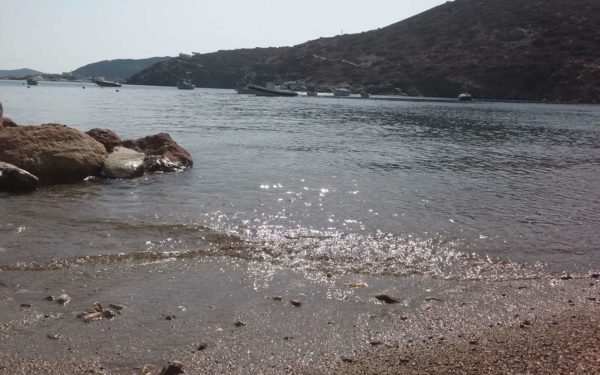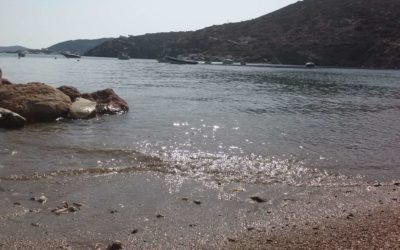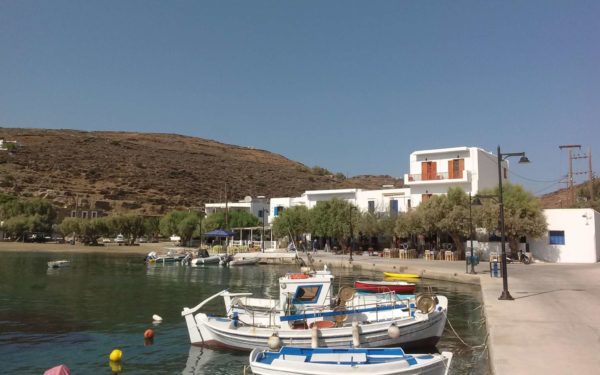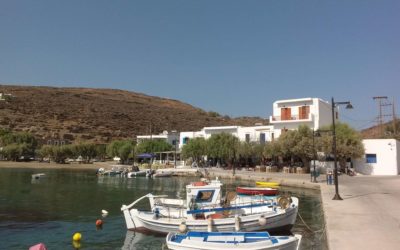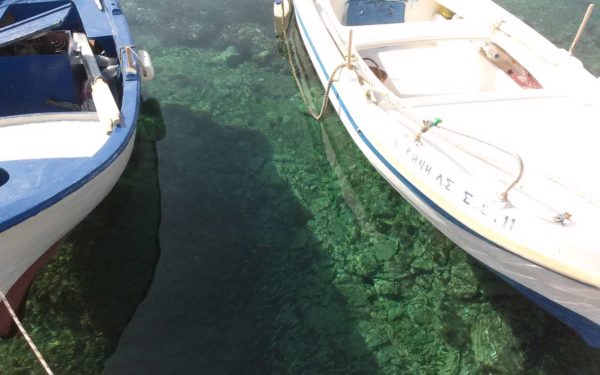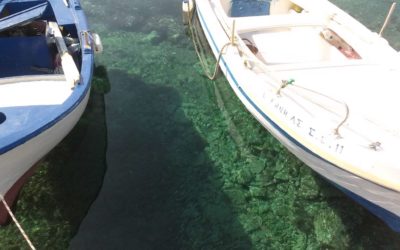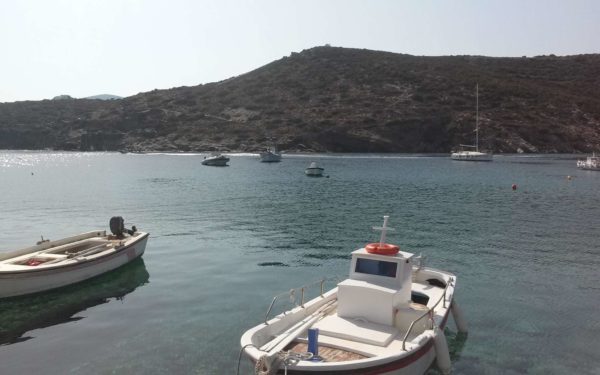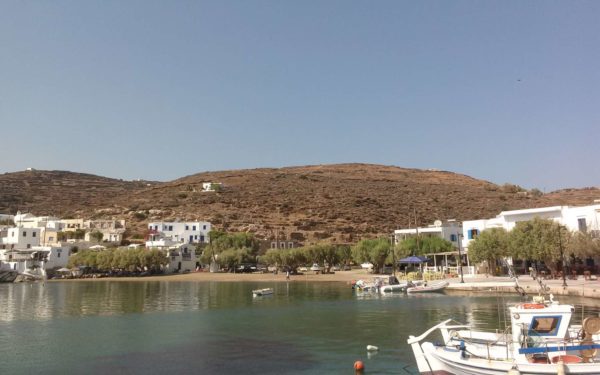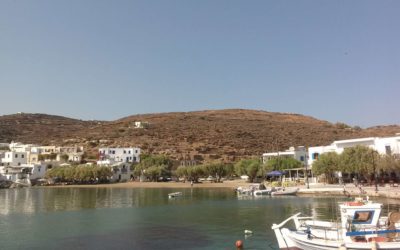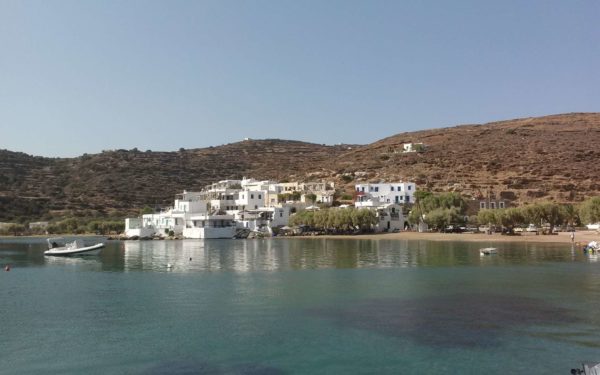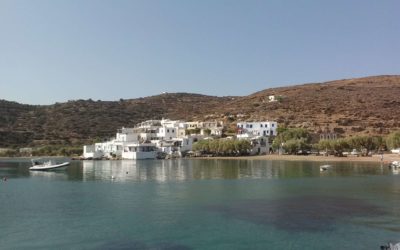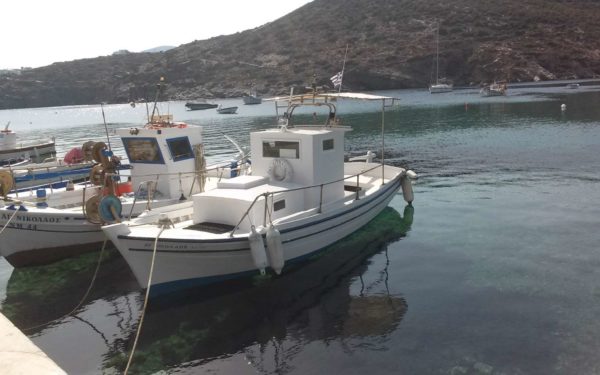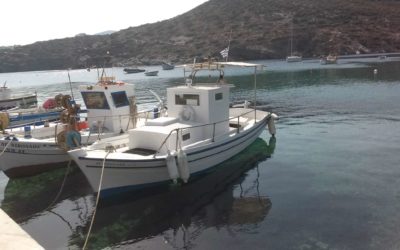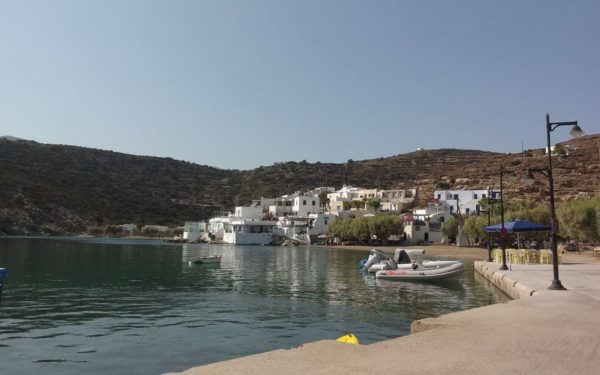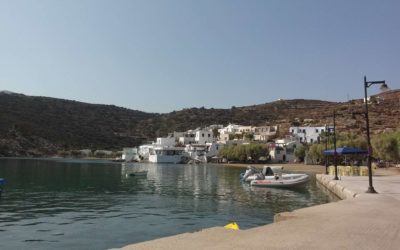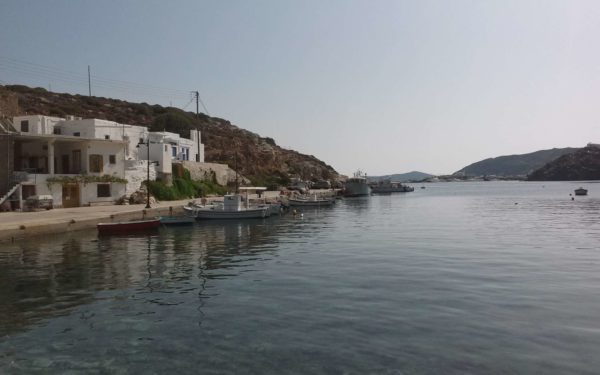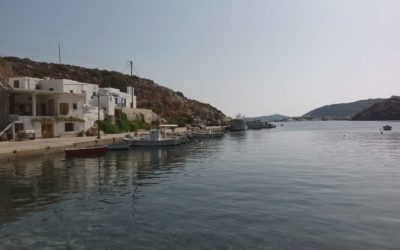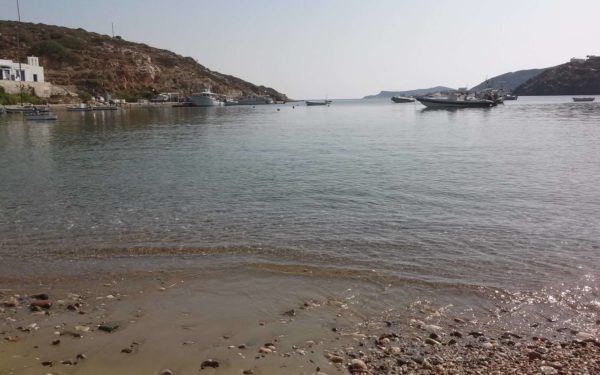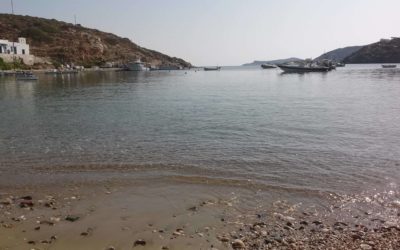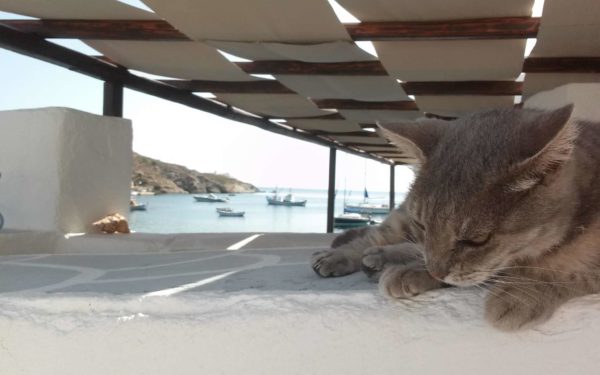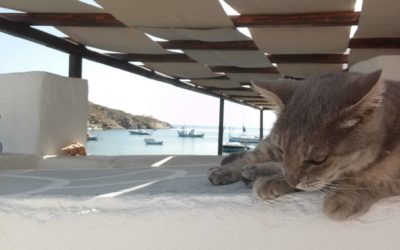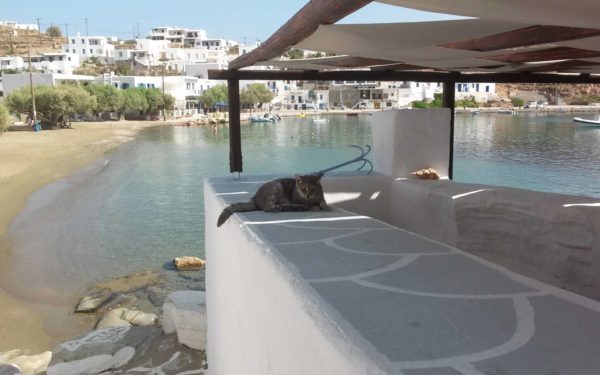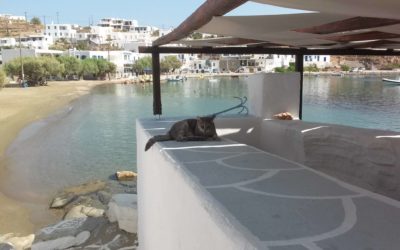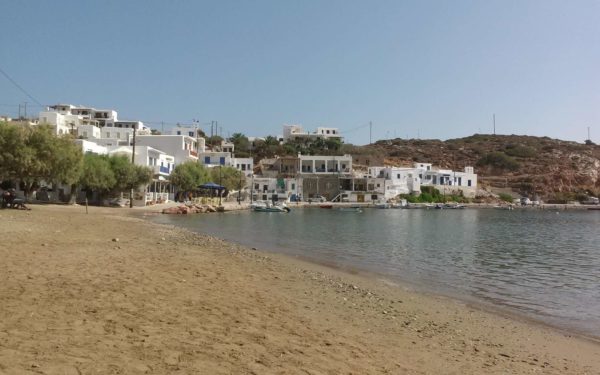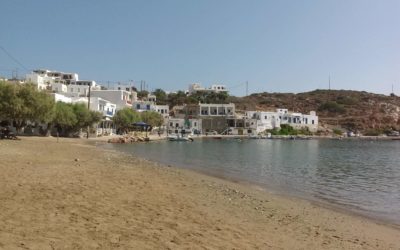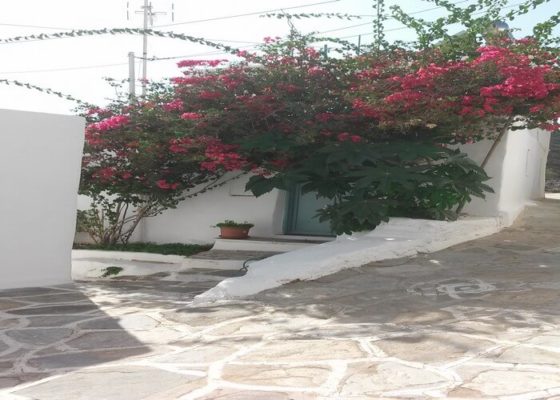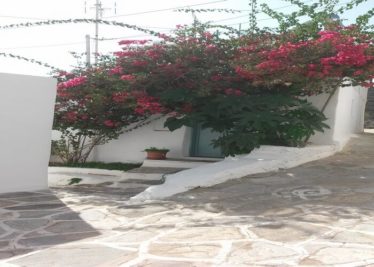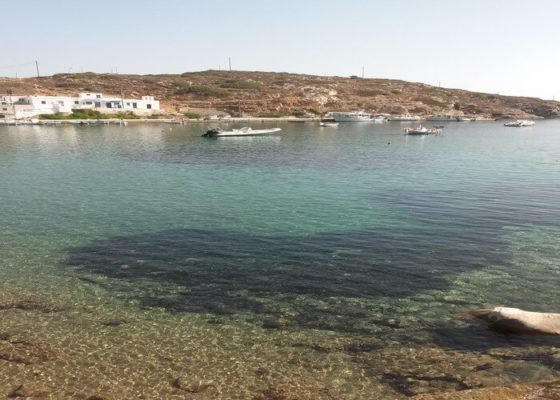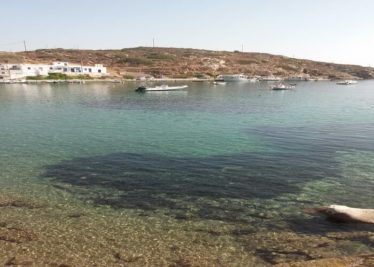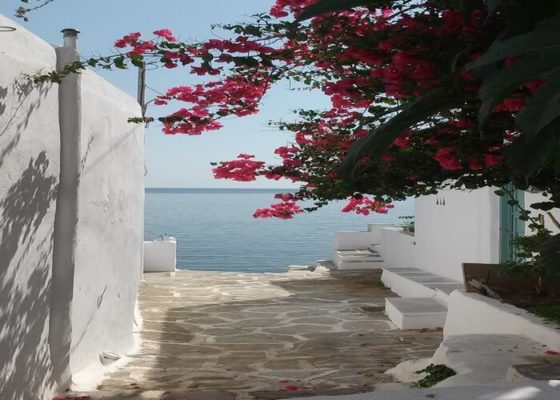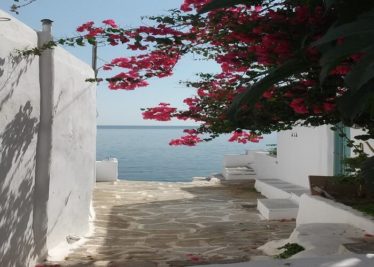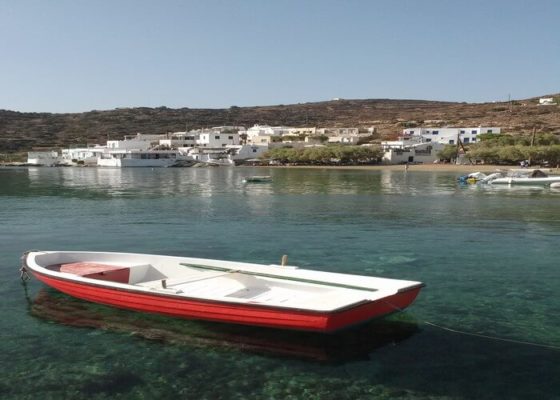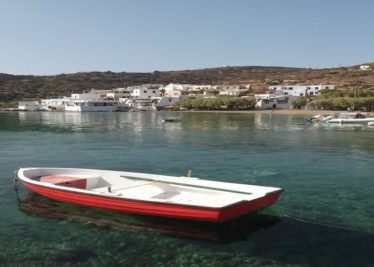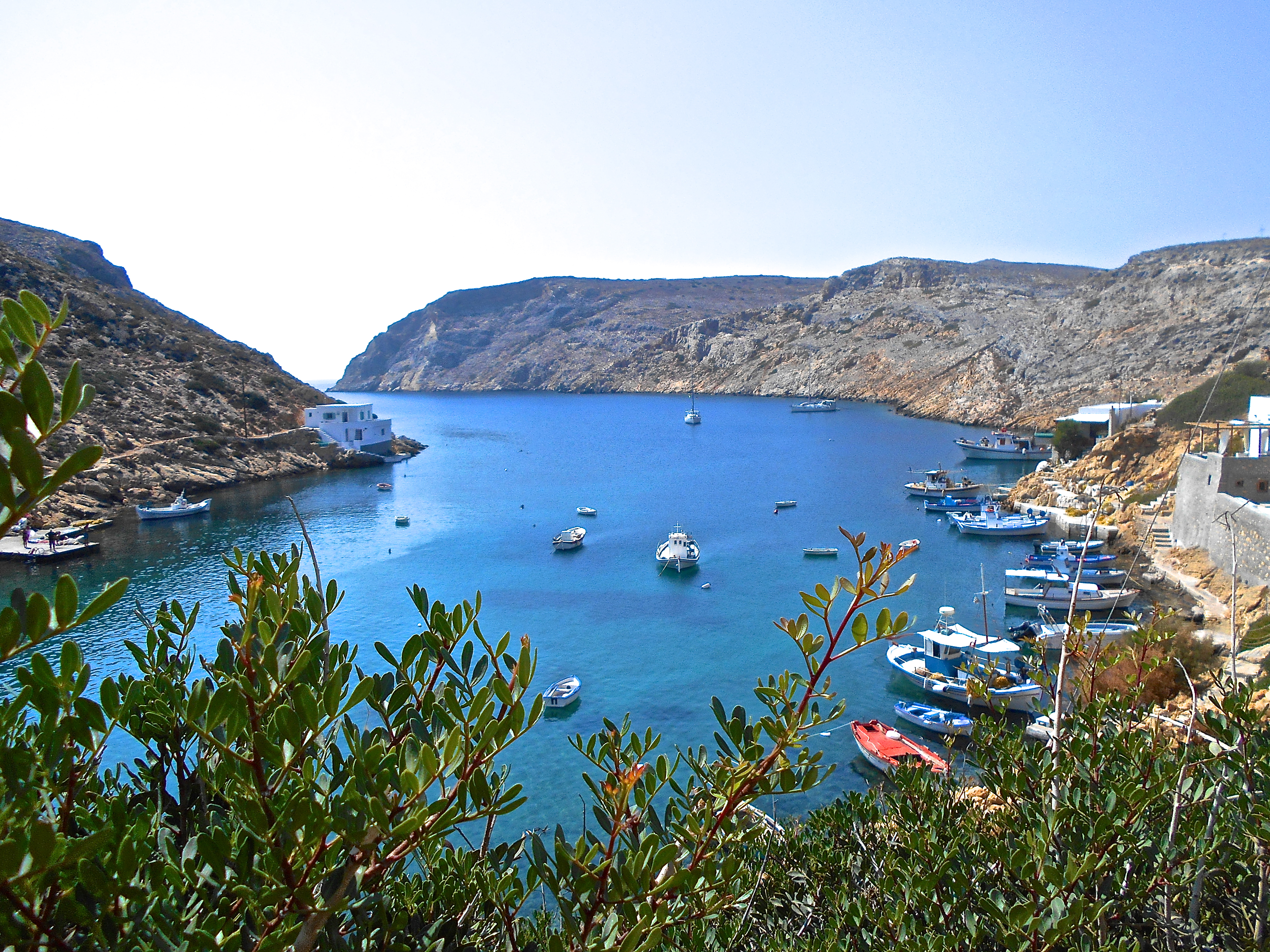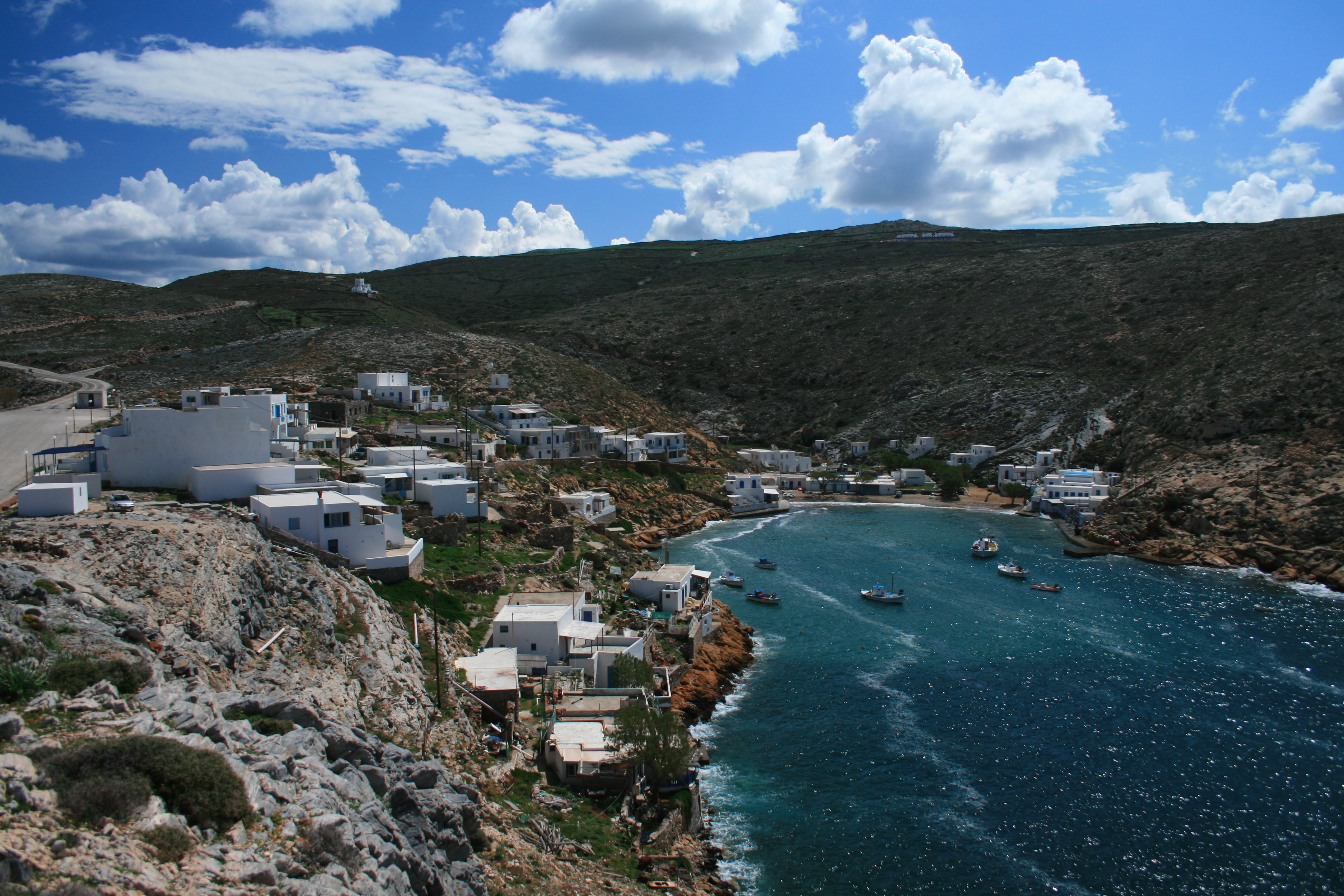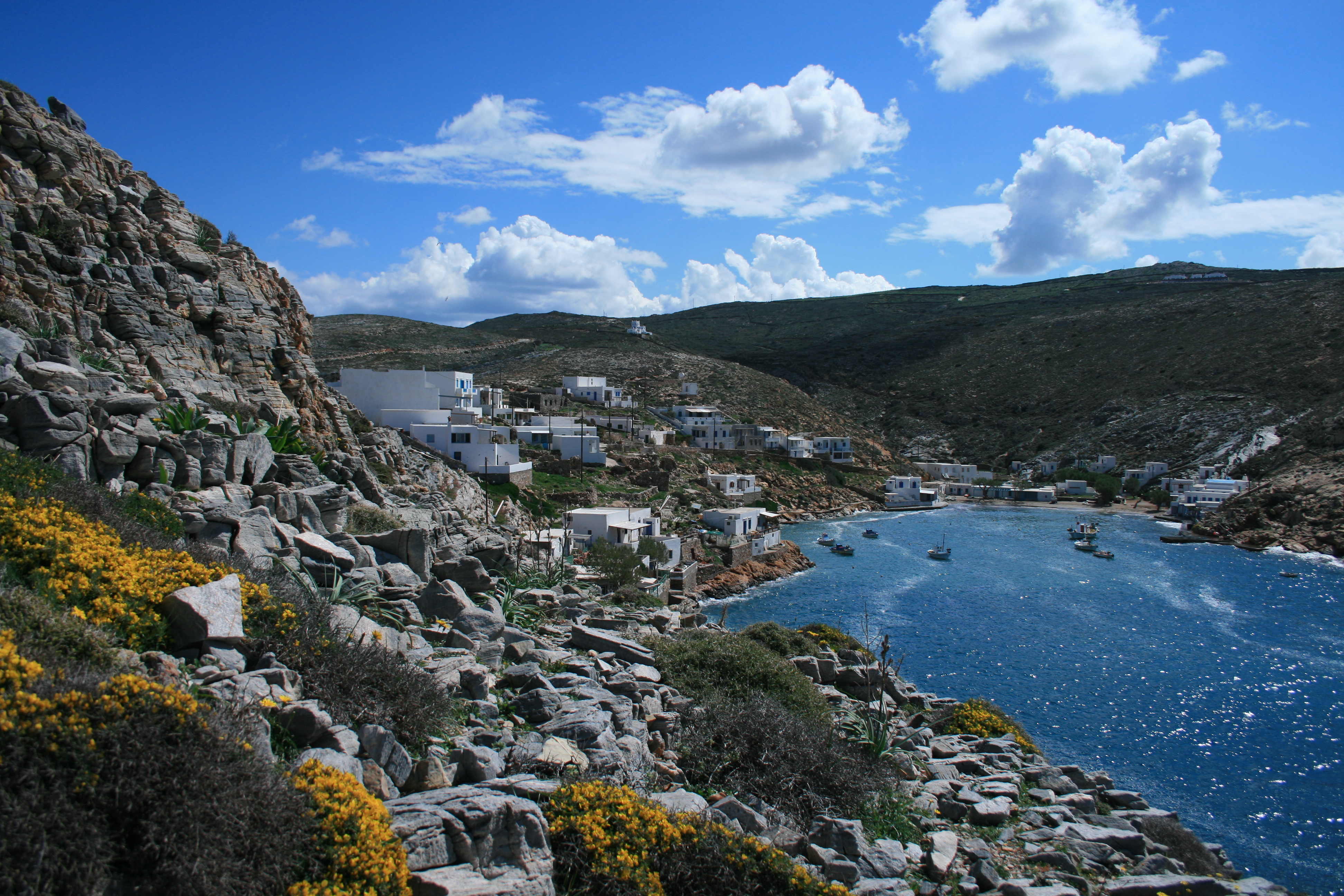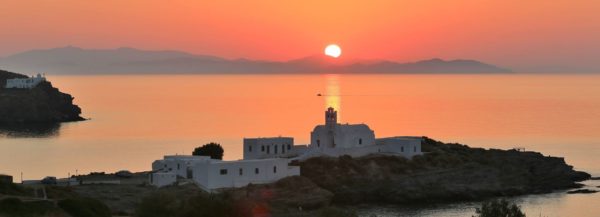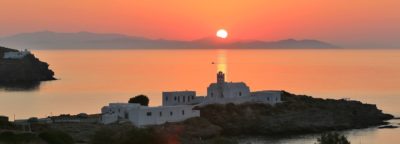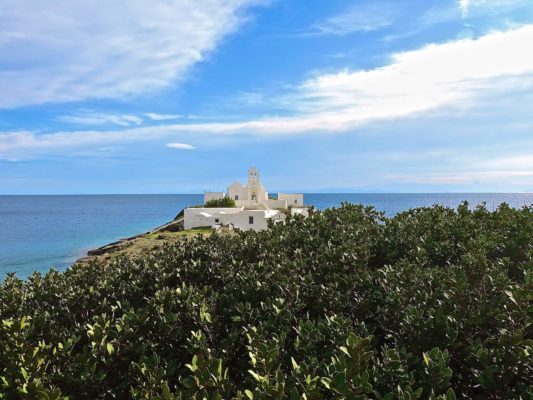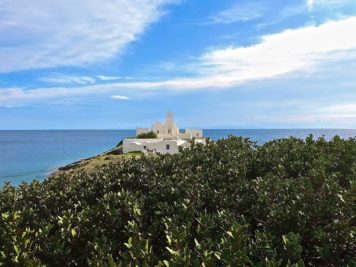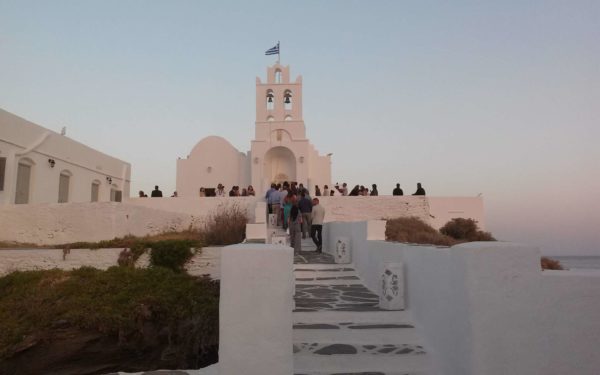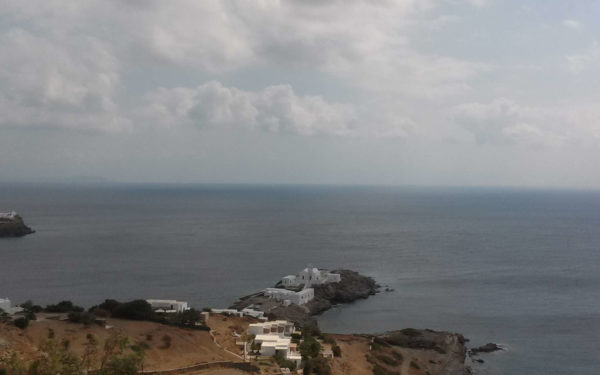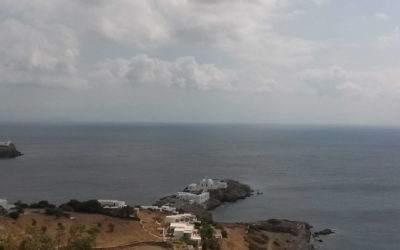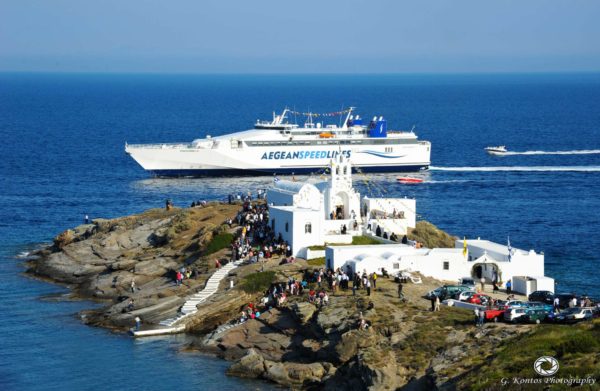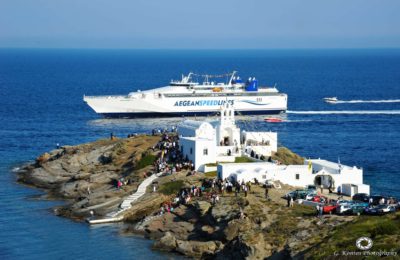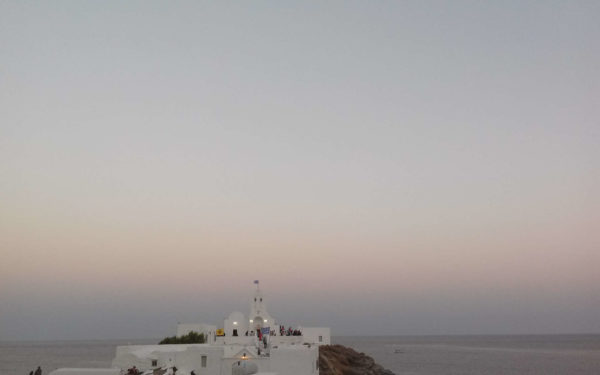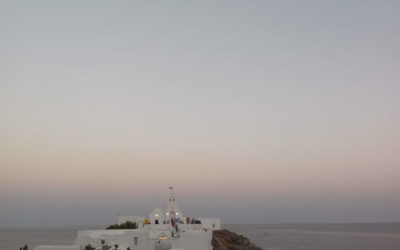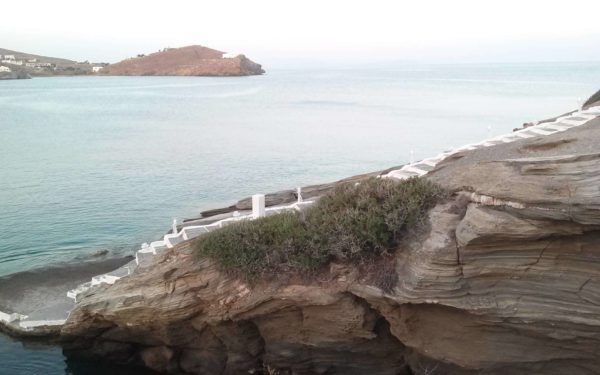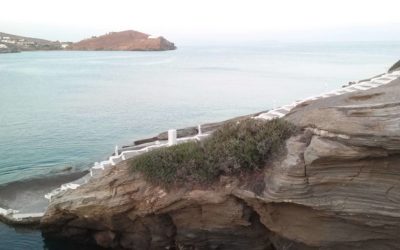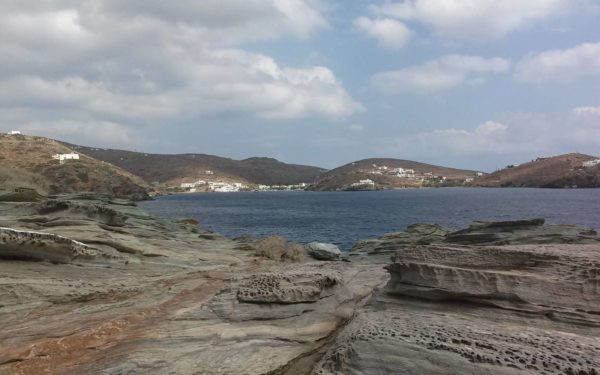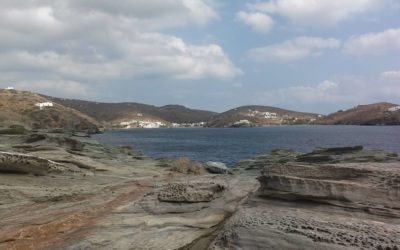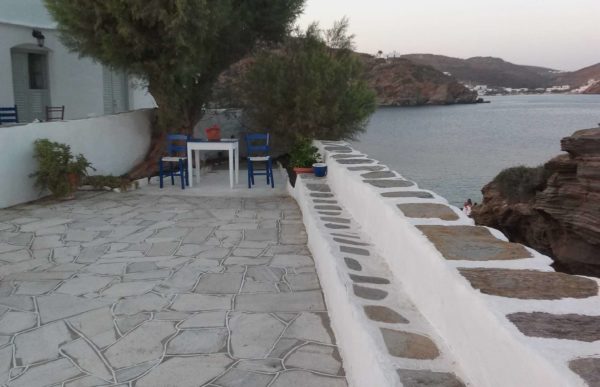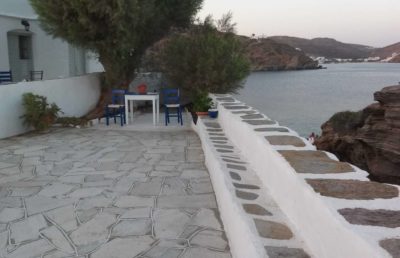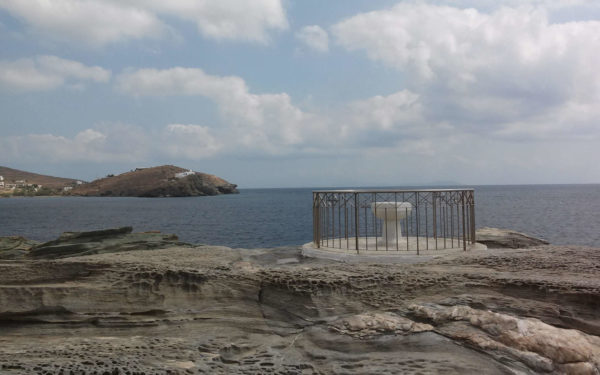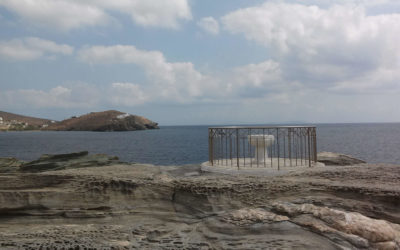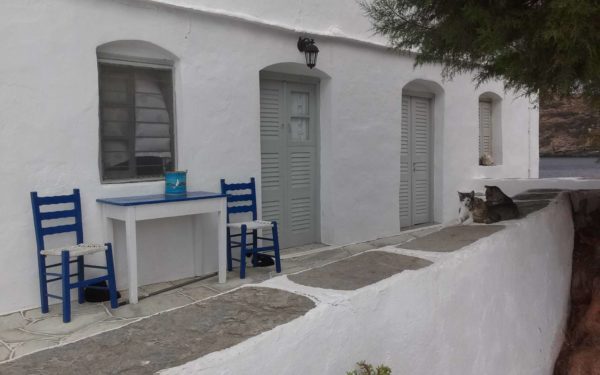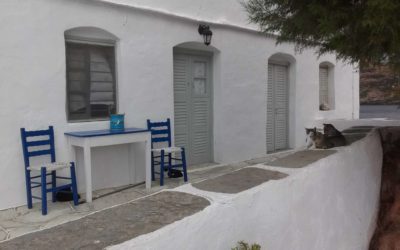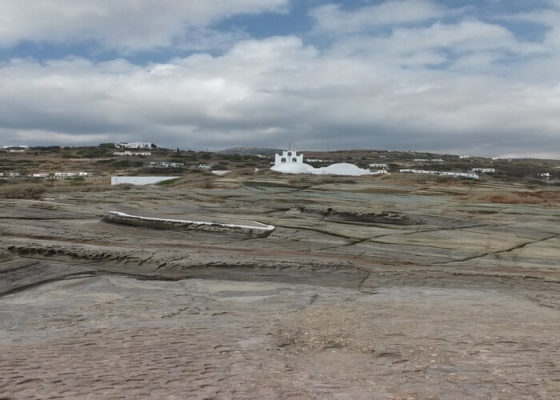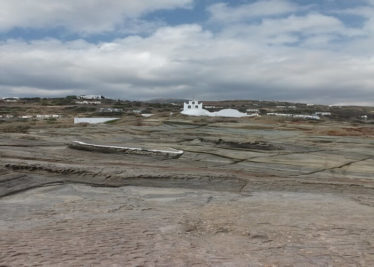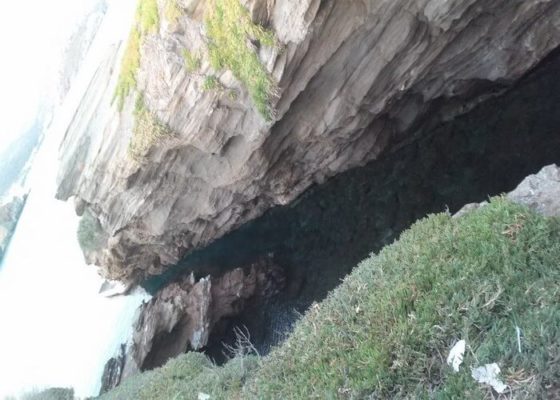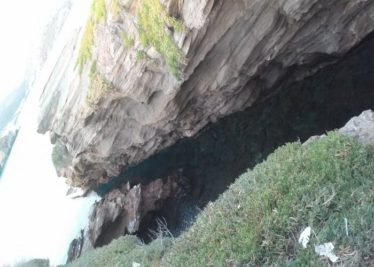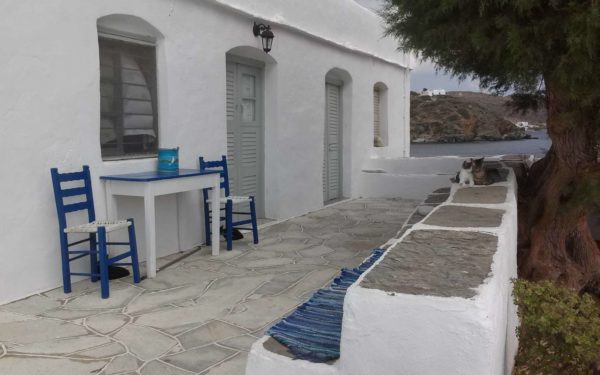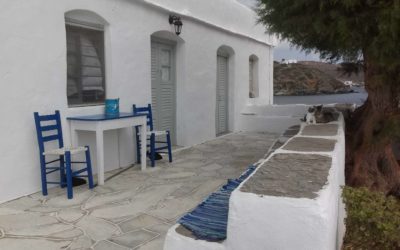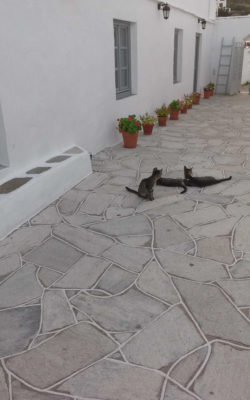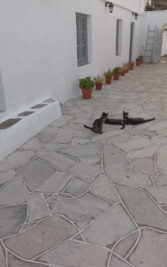Agios Loukas
Between Pano Petali and the main square of Artemonas lies the village of Agios Loukas or Ai Loukas, named after the nearby church of the same name.
A church dedicated to both Panagia Gournia, and Agios Nikolaos is to be found here, with remarkable frescoes by the famous folk hagiographer of Sifnos, Agapios, also known as the ‘Defterevon’ (the second in the hierarchy). There is also the church of Ai Giorgi Afenti (the Master) with its famous icons dating back to 1645, works by the important Cretan School hagiographers of the time, Zacharias Tzagkaropoulos and Konstantinos Paliokapas, and the beautiful church of Agios Konstantinos with its rare architectural features, situated in the square of the same name.
Ai Loukas is the birthplace of the owner and president of the Eugenides Foundation, Nicholas Vernikos-Eugenides, and the shipowner and minister Alexandros Vernikos.
Apollonia
Apollonia is the capital and administrative centre, located in the middle of the island.
The name Apollonia derives from the worship of the god Apollo on the island in antiquity. It is also referred to as Stavri, probably after the main crossroads in the area (‘stavrodromos’ being the Greek word for crossroads), which leads north to Artemonas, east to Kato Petali and Kastro, west to Kamares, and south to Platy Gialos, Faros, etc.). Another explanation of the name Stavri is that it comes from the church of the Holy Cross, in the centre of the village.
In Apollonia (which together with the other central settlements of the island has been declared a traditional and therefore protected village settlement) there are banks, a police station, a health clinic, post office, the island’s municipal building, pharmacies, a tourist office, restaurants, rooms to let, apartments and hotels, bars and restaurants.
Outside the post office there is a taxi rank, as well as a bus stop for Kamares. At the main junction there are bus stops for all the other villages and beaches of the island. Along the main picturesque path through Apollonia leading to Katavati (known as ‘the Alley’) there are interesting old churches, shops and places to eat or stop for a drink. On summer evenings the place is buzzing with life.
The Folklore Museum of Sifnos, run by the Sifnos Association, is to be found Apollonia’s main square (Plateia Iroon or ‘Heroes Square’). It houses a variety of exhibits showing the daily life and occupations of the people of Sifnos in bygone days, and includes traditional costumes, Sifnian pottery, and historically important publications.
In Rambagas Square (off the main path) there is a bust of the Sifnos publisher, militant journalist, and satirical poet Kleanthis Triantafyllou, who was born in Sifnos in 1850, and later published the progressive political satirical magazine “Rambagas” in Athens. The magazine was the forerunner to the New Athenian School, and was the source of Kleanthis Triantafyllou’s pen name, Rambagas. It also prompted strong reactions, and twice led him to imprisonment. Kleanthis Triantafyllou, having fallen victim to an assassination attempt, and suffering in his later years from serious mental disorder, committed suicide in 1889.
Artemonas
Artemonas is one mile northwest of Apollonia, and with its labyrinthine streets and alleyways, is the largest village on the island.
Its name comes from the worship of the goddess Artemis on the island in antiquity. There was once a temple to Artemis on the site of today’s parish church in the village, Panagia Koghis.
Artemonas is the terminus for all of the island’s bus routes. There are notable old churches, traditional bakeries and pastry shops, restaurants, rooms to let, apartments and hotels, and traditional pottery workshops. Next door to the ‘Panagia tou Bali’ church is the ‘Ioannis Atsonios’ folk arts and crafts exhibit entitled ‘Us at Home in the Old Days’, which is opened to the public by the Cultural Association of Sifnos during the summer months.
The aristocratic aspect of Artemonas is the result of the economic prosperity of the village half a century ago, reflected in wonderful neoclassical buildings and homes with courtyards full of flowers, mainly found along the village’s central path. The views from many parts of the village are stunning. From the area of the windmills (in the east of town) known as ‘Bella Vista’ (or Kallithea in Greek), one can admire the views of the village of Kastrou from above, look out across the open sea, and also see many of the other Cycladic islands.
Artemonas is the birthplace of Nikolaos Chrisogelos, the great teacher of the nation, a fighter for independence, and the first Minister of Education of the modern Greek state, who was a pioneer of peer method teaching and primary education. His bust can be seen in the square next to the Artemonas Local Community offices and the Citizen’s Advice Service Centre.
Artemonas is also the birthplace of the distinguished philologist, poet and translator, Ioannis Gryparis, who served as the first director of the National Theatre and was awarded the highest honours in Arts and Letters by the Academy of Athens. Outside his home on the street named after him in Artemonas there are commemorative marble plaques from Sifnian Association and the Association of Greek Writers. A statue of the poet was erected in the courtyard of the Sifnos Junior School on August 19, 2012 by the Cultural Association of Sifnos, the work of the sculptor Kostas Klouvatou.
Every September the Cultural Association of Sifnos organises a three-day Festival of Cycladic Gastronomy in honour of Nikolaos Tselementes, the chef and cookery book writer, with the participation of chefs and cooks, musicians and dancers from many of the Cyclades islands, with demonstrations of local recipes, culinary competitions and many other side events and exhibitions.
Vathi
Vathi is located in the west, 10 km from the capital, Apollonia.
At “Punta tou Polemikou”, the northern end of the bay, archaeological excavations have brought to light prehistoric settlements and tombs. In the more recent past, until the Second World War, Vathi was a village of potters.
It is the most beautiful and largest of the sandy beaches on the island, with a rare protected species of ‘sand lilies’ blooming around the middle of August.
Here there are rooms to let, restaurants, grocery stores, cafés and pottery workshops.
Many of the hiking trails through the NATURA protected areas start at Vathi, as well as those leading to Fikiada and Platy Gialos to the east.
On the beach there is the beautiful church of Taxiarches (the Archangels) (16th century), which holds a festival three times a year (July, September and November).
Exambela
One kilometre from Apollonia, on the road to Platy Gialos and Faros, is the traditional village of Exambela.
Exambela is one of the largest villages of Sifnos. It starts from the Arades (a series of windmills) and extends south, encircling the region of Agia Varvara and its church, of the same name.
In Exambela, there are some interesting churches, Panagia, Agios Athanasios, and the church of Christ with beautiful stairways in their courtyards.
It is the birthplace of Aristomenes Proveleghios, poet, translator, Member of Parliament, academician, doctor of philosophy and art history, who was honored by the Athens Academy for Excellence in Arts and Letters. His house lies on the main road through Exambela, his tomb is in the picturesque chapel of ‘old man Agios Nikolaos’ (to distinguish it from the more recent parish church of Agios Nikolaos) and a bust of the poet, crafted by Giannoulis Halepas is in the courtyard of the Sifnos High Schools in Arades.
It is also the birthplace of Nikolaos Tselementes, the great chef and cooking teacher, author of the first Greek recipe book, the famed “Tselementes”, first published in 1910 and still in publication today. In the footsteps of the great teacher followed Kostas Markou, also from Exambela, who worked as head chef at the Royal Palace, and published a number of recipe books in the 1960s. (including ‘New Cookery & Pastry Cooking (Contemporary Nutrition – Modern Techniques)’, and ‘Greek Cuisine’).
It is also the birthplace of the teacher and headmaster of the Arsakeion School, Georgios Vionis (1822-1898), the painter Ioannis Maroulis (1792-1816), and his son, painter Nikolaos Maroulis, and the industrialist family Karella, among other public figures.
Among the sights of the village are the ancient tower and signal post (‘fryktoria’) (6th century BC) of Ai Dimitri, also known as the Black Tower, and a little further to the south, the Vrisis Tower near the Monastery of Panagia Vrisis (or Vrissiani, of the spring or fountain).
The Vrisis Monastery is the largest on the island, and is well worth a visit, given that apart from its exceptional architectural features, it also houses the Byzantine Art Museum, with an important collection of manuscripts, icons, and ecclesiastical artifacts.
In Exambela there are some small grocery stores, a restaurant and a few rooms to let.
Kamares
Kamares is about 5 km away from Apollonia. It is the main port facility of the island and the largest coastal settlement.
The majority of the rooms to let, hotels, and restaurants are to be found in Kamares, as well as a number of grocery stores, shops, bakeries, a private camp site, tourist offices, numerous cafés, pâtisseries, and pottery workshops, the Municipal Information Office, and the Port Authority.
On the opposite side to Kamares, the ‘Pera Panta’ (the ‘Forever Beyond’, is the area of Agia Marina, named for the church on the side of the hill. In Agia Marina too, there are also rooms to let, hotels, grocery stores, cafés and restaurants.
Between the two areas lies the beach of Kamares, one of the most beautiful pristine sandy beaches, bordered by native vegetation, reed beds, coastal lagoons and sand dunes, where rare ‘sand lilies’ bloom in August. The beach receives awards every year from the FEE, with the blue flag of the European Union indicating its compliance with 32 strict criteria of the programme (cleanliness, organisation, swimming water quality, safety, life guard facilities, first aid, services, facilities, etc.)
A number of hiking routes start out from Kamares, including those leading to the Nymfon church at Korakies, the Mavri Spilia (the Black Cave), the site of the old mining area, and the NATURA protected site. Another trail of greater difficulty leads to the north of the chapel of Agia Anna in Pera Panta, heading towards Agios Simeon. Another hiking route leads east to Apollonia and the central inland village settlements.
Kastro
Kastro is the old capital of the island and the seat of the Archdiocese of Sifnos (6th-19th century). It is one of the most picturesque, beautiful, and the most important of the villages of the island from an archaeological standpoint.
This is the ancient ‘city’ referred to by Herodotus, which flourished in the 6th century BC, with a temple and a theatre dedicated to Dionysus, and grand marble public buildings. It has been continuously inhabited from prehistoric times (first settlements on the hill were in the 3rd millennium BC) to the present day.
The village’s name comes from the fortress-like ‘castle’ formed by its buildings. The settlement has an ellipsoidal form, following the terrain, and has a defensive aspect, preserving unchanged its medieval (Venetian) fortified formation. Two defensive rings of buildings can be observed, each built close by the next, with mansion houses for the richer inhabitants in the inner ring where they had greater protection, and the houses of the poor in the outer ring.
The ruins of the ancient acropolis stand tall at the top of the hill (6th century BC), ancient columns are set in the walls of newer buildings, and there are Roman sarcophagi to be seen in the alleys. There are the six ‘lodges’ (gateways at the entrances to the village), 16th and 17th century chapels with decorated floors and many other details making Kastro a living open-air museum.
At the highest point of the village is the ‘katholikon’ cathedral church, and nearby stands a column bearing an inscription by Giannoulis Da Corogna dating back to the 14th century.
The Sifnos Archaeological Museum can be found in centre of the village, with exhibits (mainly sculptures and coins) from the prehistoric to the Roman era.
East of Kastro is the picturesque chapel of the ‘Eptamartiron’ (Seven Witnesses) standing on the rocks, where the panoramic view of the sea is breathtaking. Further to the north, the ancient path leads to Panagia Poulati, a designated area of outstanding natural beauty. Poulati, like Eptamartyron, is an ideal spot for diving off the rocks. West of the village, at the foot of Kastro hill, there is a small pebbled beach (the island’s ancient harbour), known by the name Gialos or ‘Seralia’ from the word seraglio, meaning palaces, that were once to be found there.
Kastro opened the first known school on the island (in the early 17th century), and later established the famous School of Panagia Tafou (the Holy Sepulchre) also known as the ‘Seminary of the Archipelago’ (from the mid-17th century). On the same site today stand the twin churches of Agios Stefanos and Agios Ioannis Kalyvitis. Great teachers and priests were graduates of the seminary, including Nikolaos Chrysogelos (later a teacher at the same school and the first Minister of Education of the Modern Greek state), as well as forty-eight bishops and two ecumenical patriarchs.
Kastro is the birthplace of the university professor and academic Georgios Maridakis (his marble bust can be seen in the courtyard outside the Theologos chapel). It is also the birthplace of the former President of the Supreme Court of Greece, Antonis Zilimonos.
Kastro today offers a few rooms to let, restaurants, bakeries, cafés and bars, and the beach front (Seralia) has a few fish tavernas.
Katavati
Between Apollonia and Exambela lies the village settlement of Katavati, which includes the area of Eleimona, and the church of the same name.
In addition to the parish church of Agios Georgios and the other chapels, of interest here is the church of Panagia ‘Aggelochtistis’, which, legend has it, was built and administered by angels.
Further south on the main road to Vathi stands the monastery of Fyrogia (16th century) it was restored in the 1970s by the Hellenic Environment and Culture Society, for which Greece received its first ‘Europa Nostra’ Cultural Heritage Award . In recent years, various cultural events and activities are organised during the summer. The monastery houses a collection of objects handcrafted by Kosmas Xenakis.
The philosopher and great theologian Apostolos Makrakis was born here, and he is buried in the chapel of Evaggelistria (the Annunciation) and there is a marble bust in the square near the bus stop.
Near Katavati there are grocery stores, a florist, service station, rooms to let, a hotel and a restaurant.
Kato Petali
Kato Petali lies between Apollonia and Kastro, and its distinctive traditional architecture is an attraction for visitors. The parish church of Zoodoxos Pigi (the Source of Life) stands near the center of the village, and is noted for its distinctive paved courtyard, decorated in traditional local style. Southeast of Kato Petali is the historic monastery of Agios Ioannis Chrysostomos (dating back to before 1650), which was the first Greek school in Sifnos, later rehoused in the School of the Holy Sepulchre as the ‘Ellinomouseion’ of Sifnos, preserving and teaching the Greek language and literature (1835-1854).
In Kato Petali there are rooms to let, a restaurant and a grocery store, as well as the Sifnos Music Academy ‘Frankiski-Psacharopoulou Karori’.
Pano Petali
Artemonas and Apollonia, with stunning views to the southeast, lies Ano Petali, which is crossed by the ancient path that connects the central inland village settlements. At the top of the hill is the historic chapel of Ai Antipas (dating from 1636) which functioned as a school in 1821, run by a student of Nikolaos Chrysogelos, the teacher George Psaraftis.
Among the traditional houses and churches of the village, there a number of rooms to rent, a hotel and a traditional café (‘kafenion’).
Platys Gialos
Platys Gialos is one of the largest sandy beaches of the island and is the most popular choice of Greek visitors.
The beach of Platy Gialos receives awards every year from the FEE, with the blue flag of the European Union indicating its compliance with 32 strict criteria of the programme (cleanliness, organisation, swimming water quality, safety, life guard facilities, first aid, services, facilities, etc.)
On the left side of the bay there is a fishing boat refuge that also provides services to yachts.
In the middle of the village, next to Alexandros Vernikos Square, there is a small open air theatre.
Also of interest is the church of Agia Sofia on the right hand side of the main road.
Local attractions include the White Tower 1.5 km northeast of the beach, one of the 77 ancient beacon towers (‘fryktories’) of the island and the best preserved.
In Platys Gialos there are rooms to let, hotels, restaurants, grocery stores, a tourist office, cafés, and pottery workshops.
Many hiking trails start from the village, heading towards Fikiada, Vathi, and the other central village settlements.
Opposite the beach of Platys Gialos is the uninhabited islet of Kitriani, with its solitary building, the church of the same name, Panagia Kitriani, the oldest church of Sifnos (10th-11th century).
Faros
Faros is a sheltered harbour and fishing village 7 km from Apollonia. It was the island’s main port until 1883 and is named after the ancient tower (Faros being the Greek word for lighthouse) on the beach (where the footpath from Faros to Glyfo begins today). On the waterfront at Faros is a small stone theatre which hosts a variety of cultural events during the summer season.
In Faros there are three small sandy beaches:
The central beach, where the asphalt road ends, has spectacular views of Chrisopigi. It also has a number of restaurants, cafés, bars and a grocery store.
The beach at Glyfo is so named for the well of brackish water which has been there since ancient times, and is still there today, to the right of Faros beach. From Glyfou begins the beautiful paved footpath (illuminated at night) leading to the beaches of Apokoftou and Chrysopigi. To the right of the beach, the steps to leading to the ancient mines and the remains of the old ore-loading facilities are visible.
Lastly, there is Fasolou, to the left of Faros beach, where there is a restaurant and rooms to let. The Monastery of Stavros (the Cross) in Faros is also to be found at Fasolou.
Hiking trails starting at Faros lead to the Acropolis on the hill of Agios Andreas and Kastro.
Heronissos
Heronissos is the northernmost beach of the island and is 15 km from Apollonia. It is a picturesque fishing village with a small sandy beach. Here there are tavernas, a small grocery store, a few rooms to let and a traditional pottery workshop.
The northernmost buildings on the island are situated on the hill above the village. They are the Church of Agios Georgios and the remains of one of the ancient beacon towers.
On the route to Heronissos from here are the villages of Troullaki and Diavroucha and some pottery workshops.
Chrysopigi
Ten kilometers from Apollonia, just before Platys Gialos, is the most famous spot on the island, Chrysopigi.
On the peninsula here is Monastery of Panagia of Chrysopigi (Virgin Mary of Chrysopigi)(1523), patron and protector of the island, celebrated with a festival on the eve of Analipsi (Ascension Day). The festival of Chrysopigi follows a special ritual that includes procession of the icon around the villages and an all-night vigil. It attracts hundreds of pilgrims every year.
The rocks at Chrysopigi are a favourite jumping off point for many swimmers.
East of the church is the sandy beach of ‘Apokofto’ with its crystal-clear azure waters. The only buildings are the two restaurants right on the sands. From there, begins a cobbled pathway leading to the beach of Glyfo in Faros.
West of the church is Saoures, a small secluded pebble beach.
Local attractions include the White Tower, located near the crossroads between Platys Gialos and Chrysopigi, which is the most famous of the 77 ancient towers on the island and the best preserved.
In the general area of Chrysopigi there is a grocer’s and limited tourist accommodation.

